




Drivers are finding themselves at the mercy of their own vehicles’ data-sharing capabilities, leading to unexpected hikes in their car insurance rates, according to a report from the New York Times.
granular driving data. This data, which includes trip durations, distances and driving behaviors like hard braking or rapid acceleration, is used to formulate a risk score for insurers.
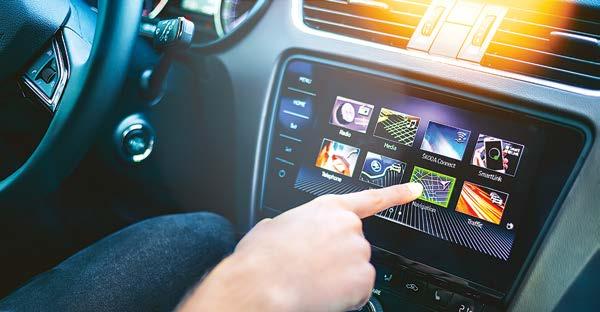
Kenn Dahl , a Seattle-based software company owner who drives a Chevrolet Bolt, encountered a bewildering 21% increase in his car insurance premium, despite a clean driving record. The root cause was a detailed data trail of his driving habits, unbeknownst to him, shared by General Motors with LexisNexis, a global data broker.
Dahl’s experience illuminates a growing concern among vehicle owners about privacy and consent. LexisNexis, under its “Risk Solutions” division, traditionally monitored vehicular accidents and violations but is now into analyzing
This practice, while enhancing personalized insurance offerings, raises questions about transparency and consent. Many drivers, like Dahl, are unaware of the extent of data collection and its implications on their insurance costs.
Dahl got quotes from other insurers and found they were also high – the LexisNexis data had been shared with eight insurance companies.
“It felt like a betrayal,” Dahl told the New York Times. “They’re taking information that I didn’t realize was going to be shared and screwing with our insurance.”
l CONTINUED ON PAGE 13
In January, prolific industry veteran Jim Huard sold his latest successful venture, Painters Collision Centers, to Classic Collision. This exit caps off more than four decades of entrepreneurial accomplishments for Jim, who has led the start-up, growth and sale of several high-performing collision repair businesses across the U.S. Painters was represented in the transaction by Focus Advisors.
Jim started his collision career at 15 by working in his family’s shop in Whittier, CA. In 1978, his dad’s shop partnered with Allstate in the nation’s first-ever DRP. In the first of what would become many turnarounds, Jim was able to successfully transition his family’s business to a computerized system allowing them
to maintain their high level of volume. This experience prepared Jim for a lifetime of guiding shops through complex changes and rapid growth.
After relocating to Portland, OR, for a general manager role at the age of 26, Jim was instrumental in the growth of two independents. Jim earned a partnership in the second independent, which he grew from about $270,000 per month to more than $800,000 per month. This location was then sold to Kadel’s Auto Body. Jim was retained as an operations manager, and assisted in its growth. In Jim’s words, Toby Wiltse, owner of Kadel’s, is an entrepreneurial genius. This is where Jim decided what he wanted to
l CONTINUED ON PAGE 4
The Oklahoma Legislature is currently reviewing Senate Bill 1853, a piece of legislation that could alter the way auto repair shops operate within the state.
SB 1853 proposes a series of stringent regulations that would limit auto repairers’ ability to charge for various services and tasks. Among the most contentious provisions are rules that:
Prevent repair shops from marking up the costs charged by towing
l CONTINUED ON PAGE 14

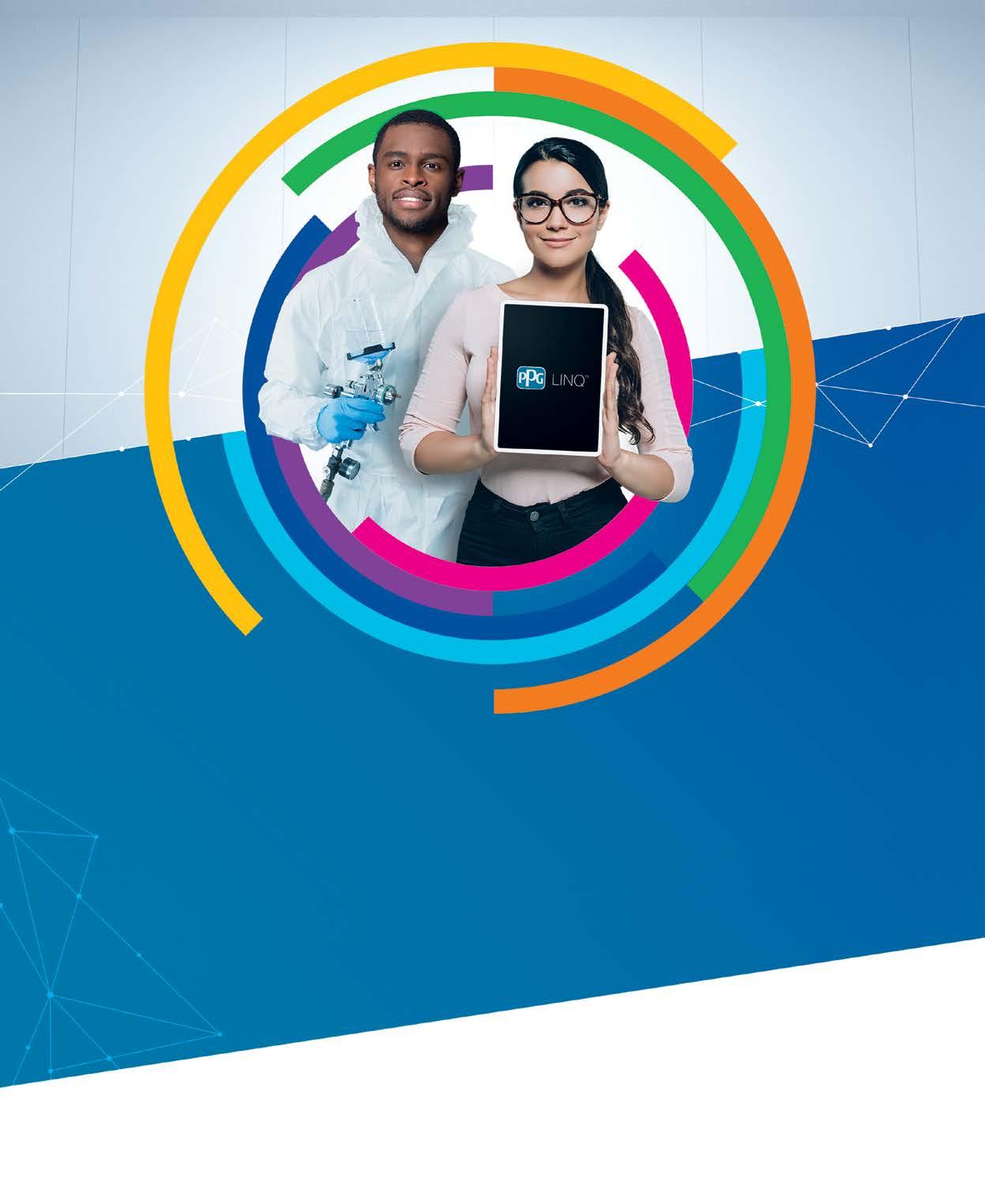
The ASE Education Foundation announced its 2024 ASE Instructor Training Conference will be held July 15-18 at the Hyatt Regency Hotel in Minneapolis, MN. This event, the largest of its kind, will bring together hundreds of high school and college instructors specializing in auto, truck and collision repair from across the country.
The conference promises an intensive learning experience, offering more than 20 hours of technical update training across distinct tracks tailored for auto, medium/heavy truck, and collision repair instructors, ensuring educators are not only updated with the latest industry standards but also equipped with the knowledge to enhance their teaching methodologies and student outcomes.
The cost for instructors from ASE-accredited programs is $700 per person while the cost for instructors from non-accredited programs is $800 each.
Visit aseeducationfoundation. org/events/ase-instructor-trainingconference.
be, following Toby’s footsteps on a smaller scale.
Ten years later, Jim brought his proven leadership and operational expertise to help expand MSOs in Southern California. Joining Caliber Collision first as a regional general manager, Jim later became its “turnaround specialist,” spending nine years reorganizing dozens of shops in San Diego, Orange County and Los Angeles. He was instrumental in helping grow Caliber’s footprint from 75 to 500 stores. He characterizes it as one of the most fun times of his career.
He then joined industry pioneer Erick Bickett at Fix Auto ACAB Automotive Group. As vice president of operations for Auto Center Auto Body (ACAB), Jim was solely responsible for the operations and financial growth of the Bickett MSO within the Fix Auto group, and he assisted in the growth of Fix Auto USA as well. Jim quickly earned an equity stake in the Bickett MSO and became an owner partner.
Jim met his future wife, Kelly, with whom he shared a mutual entrepreneurial vision and strong work ethic. With a long career in financial
Texas car meet organizer Coffee and Cars recently announced a permanent ban on modern muscle cars at its events, citing a series of disruptive behaviors that compromise safety and the event’s integrity. The ban, which includes high-powered vehicles like Camaros, Chargers and Mustangs, aims to preserve the
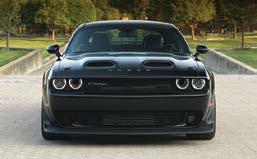
traditional, respectful atmosphere that has defined these gatherings for years, Backfire News reported.
The decision followed a spate of incidents involving overrevving, burnouts and street takeovers by drivers of modern muscle cars, which not only disrupted the events but also posed safety risks — a departure
services from real estate underwriting to controller and CFO. Kelly deeply understood the organizational and financial structure required for starting and operating businesses. After the sale of ACAB and Fix Auto, also represented by Focus Advisors, Kelly wrote Jim a three-page letter encouraging him to start a collision business in Arizona.
In January 2021, at the age of 53, Jim started Painters Collision Centers in the Phoenix market with Kelly as his business partner. Their strategy was to acquire struggling shops with great potential. Their paint reps helped them identify the right acquisition targets. Jim and Kelly would quickly close on these targets and then implement their integration plans.
They started Painters in January 2021 by acquiring a location in Queen Creek, followed by their Chandler store in March 2022. In January 2023, they opened a dedicated ADAS facility and three months later, they bought their third shop in Apache Junction. With Kelly handling the back office and Jim directing shop operations, the Huards grew Painters to three locations with more than 100 employees -- all within the span of two years. They made each acquisition cash flow positive within 30 days.
“What Jim has been able to
from the car meets’ original spirit, where enthusiasts would come together to appreciate a variety of vehicles in a relaxed setting.
The ban was first implemented temporarily in October 2023 and became permanent during the recent event at Post HTX in Houston.
Coffee and Cars is renowned for showcasing high-end collectibles and museum-spec vehicles, providing a unique opportunity for automotive enthusiasts to admire rare and exceptional cars. The organizers emphasize the essence of their events is to celebrate automotive culture in a safe and respectful environment, free from the reckless antics that have recently marred the gatherings.
While the ban has sparked debate within the car enthusiast community, the organizers maintain that it is a necessary step to protect the event’s core values and ensure the safety of participants and spectators.
repeatedly accomplish across so many different shops and markets over four decades is just incredible,” said Chris Lane, partner at Focus Advisors. “He is unmatched in his consistent ability to transform underperforming collision shops. The MSO that the Huards built in Arizona was one of the highest performing MSOs I’ve ever seen.”
In just 36 months, Jim and Kelly achieved their original goal of creating a high-performance three-shop MSO in Phoenix. With their reputation and exceptional financial performance, they drew substantial interest from many top consolidators. Focus Advisors guided them through the sales process with Classic Collision, allowing the Huards to exit their latest success story on excellent financial terms in January.
“I can proudly say that I’ve played a key role in positively shaping hundreds of collision centers over my career. Though it’s extremely gratifying to build successful businesses like Painters, I’m just as passionate about developing people and making this industry better,” said Jim. “I still have the fire in my belly to take on new entrepreneurial pursuits. With Kelly’s partnership, I’m confident there are still plenty of innovative pursuits for us yet to come.”
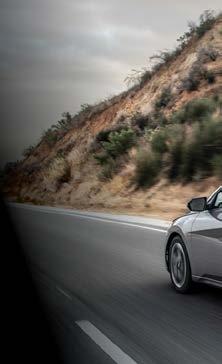



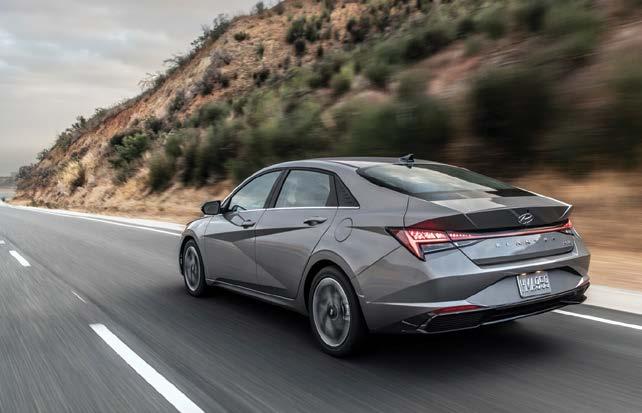
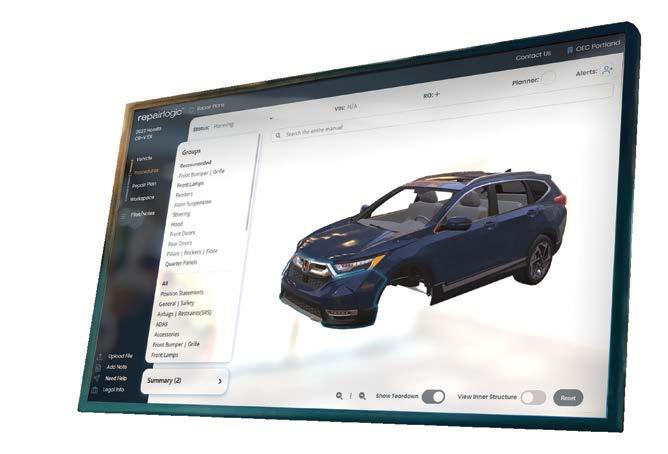
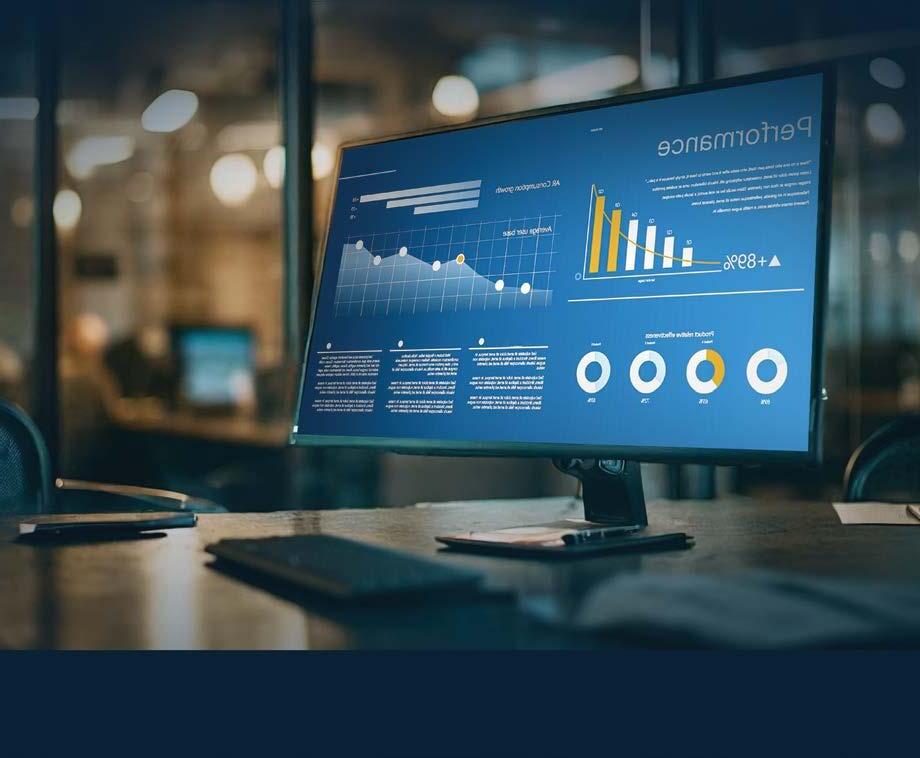


What are you waiting for?
One can’t-miss way collision shop owners can find some potentially great business ideas is to ask other shop owners about changes they’ve made recently. Understanding what prompted the changes, how they were implemented, and what the outcome has been can help inspire changes within your own shop.
Here’s a round-up of changes some collision business operators have made in past year or two.
Tiffany Silva of Accurate Auto Body in Richmond, CA, points to staffing changes she’s made at her 25-employee shop that are enabling her to better “work on my business,
same time. So I always have a backup person.
“I like to [quality control check] every vehicle before it leaves my shop, but that’s not always possible,” Silva said. “So having a production team gives us someone based behind the computer, someone out on the shop floor directing traffic, and someone who can always QC vehicles for me. It’s been working out great.”
Sue Black, who co-owns Dean’s Auto Body in Sheboygan, WI, with her son, said she has eliminated some direct repair programs and negotiated new labor rates with some insurers.
“We have been able to work on that and really pay our technicians what they deserve to be paid so that we can retain them and also train them and keep them qualified to repair the vehicles coming to us,” Black said. She said the shop also has started to sometimes charge customer co-pays.
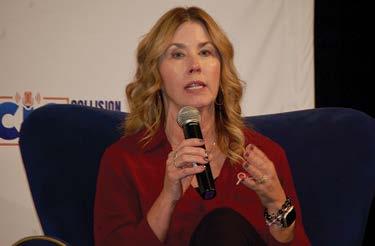
not in it.” She promoted an existing employee to assist the shop’s production manager, and added a third person to that team in a role she’s calling repair planner.
“She’s helping with [locating] and emailing procedures to the techs and making sure everybody has everything they need to get right on that job, and helping with scheduling,” Silva said of the new hire, whose cousin is a longtime employee at Silva’s shop. “She just graduated [from college] and needed some direction, so we brought her in.”
Despite not knowing anything about the industry, the new employee is “into technology and she can figure out anything we need,” Silva said. “She’s doing all our pre- and post-repair scanning, and arranging the calibrations done by an outside company.”
The employee promoted to assistant production manager had worked in both the paint and body departments at various times while at the shop, “so he’s respected by the entire team,” she said. “They are tag-teaming production. He’s done everything excepting estimating, so he’s learning CCC, and they know they can’t both be on vacation at the
commercial work.
“Because we’ve got a couple accounts now that we’ve groomed in the last couple of years to pay a sizably higher labor rate,” Ricci said.
“We basically made some decisions on what is our fight and what’s not our fight.”
WILL LATUFF LATUFF BROTHERS AUTO BODY
Like Silva, he’s also made some management personnel changes that have been “very fruitful for morale and production.” He came to realize his production manager “wanted to play fireman, but we didn’t want fires,” so he promoted another person to that position. One of the shop’s three estimators now oversees that team and works with the production manager.
“So that removed me a lot more from the day-to-day,” Ricci said. “But
they can see the transactions and what goes on when a supplement is submitted, really lets them know how hard you’re working for them, to get them taken care of.”
The transparency helps keep customers up to date, he said.
“We give them copies of what was submitted [to the insurer], letting them know the deficiencies when it comes back, letting them know what their potential out-of-pocket could be,” Latuff said. “They see we submit a repair plan that’s vastly different than the photo estimate the insurance company created, and it comes back with an initial difference, which is usually pretty large, but by the time we get down to the final bill and the gap is reduced substantially, you’re the hero. They’re happy for everything that you did throughout the repair.”
“We’ve just explained to them: This is what your insurance company is willing to pay for the repair of your vehicle, but here is the research that says that this, this and this needs to be done on your vehicle, and we want to make sure that your vehicle is getting back on the road properly, and in order to do that, you might have to pay some out-of-pocket expense,” Black said. “And because we sit down and really explain the situation to our customers, a lot of them are willing to pay extra to have their vehicle repaired the correct way.”
She said the most common co-pay is to cover the use of OEM parts.
“Consumers really don’t know when they’re buying an insurance policy, what that policy really all entails,” Black said. “I always explain to my customers that the insurance companies are qualified to sell insurance, but we’re qualified to repair your vehicle. I wish we could work together with the insurance companies to really create a safe policy for our consumers to have their vehicles repaired the proper way.”

it also increased production because of the right attitude of the right two people, as co-managers.”
Will Latuff, president of Latuff Brothers Auto Body in St. Paul, MN, said his company is another one that has “parted ways with several DRPs.”
“We basically made some decisions on what is our fight and what’s not our fight,” Latuff said. “And
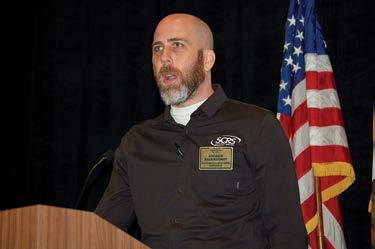
Tom Ricci, owner of Body & Paint Center in Hudson, MA, said he’s been pursuing more non-insurance
I think it’s actually helped us support the consumer more. Because keeping them more involved and more updated, and peeling things back so
As the manager of Pacific BMW Collision Center in Glendale, CA, Andrew Batenhorst said parts delays can be significant for BMW parts out of Germany.
“Anything that’s coming from that side of the world is four to six weeks away in some cases,” Batenhorst said. “So what’s been really helpful for us is being very aggressive with how we triage or job sort, deciding what cars are going to come into the shop, and which ones we will keep on the road as long as possible. So on certain job sizes, we can do a quick inspection on them, maybe loosen up the bumper or use an inspection camera to check out possible hidden damage, and we can get a repair plan that’s maybe 85% to 95% of the way through. We can get the parts pre-ordered and arrived, and we can cut the repair time down immensely because we’ve maybe also gone through a supplement approval at that point, too.”
He said one hurdle with this is the amount of space involved in storing more pre-ordered parts than they have in the past.
“So we’ve adapted our logistics to be able to handle it, and it’s worked really well,” he said. “We’ve had a lot of positive feedback from clients. If the car’s just cosmetically damaged, then they’re typically okay with us doing that for them. Now, if it’s not drivable, we’ll have to go ahead and get the car in. But for probably 40% to 50% of our work, we can minimize the downtime here, and it does pay off in the long run.”
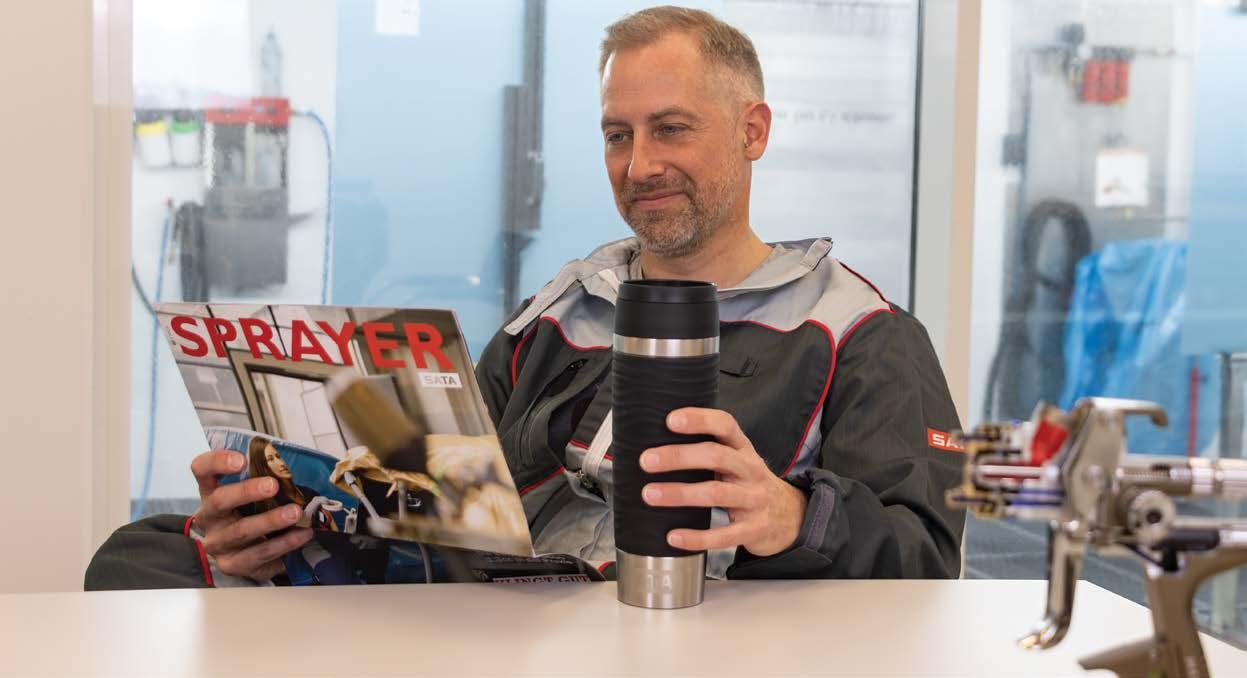

In an effort to highlight the cost – to shops, insurers, consumers and automakers – of poor-quality collision repairs, the Collision Industry Conference (CIC) Industry Relations Committee earlier this year shared the findings of its study of 26 “relatively late model” vehicles for which significant repair problems were found during post-repair inspections around the country.
In all of the cases, the customer found something they didn’t like about the repair, and therefore had a reinspection done. More than 90% of the 26 were deemed total losses after the post-repair inspection, said Daniel Rosenberger of BASF, a committee member.
“About 50% of them had moderate to severe frame issues that were unaddressed,” he said.
For the subset of the vehicles for which repair cost data was collected, he said, the cost for re-repairs averaged 3.5 times the initial repair cost.
Committee member Erin Solis shared photos and details related to one of the vehicles, a 2016 Subaru WRX for which original repairs cost about $7,000, and the cost for rerepairs was pegged at about $18,500.
“The customer originally went to the [second] shop [after repairs] for some masking lines, some paint matching issues and stuff like that,” Solis said. “The shops doing these post-repair inspections get a copy of the final bill of what was done originally. So they noticed [the original repairer] had billed for framework, yet there was no evidence of any kind of clamping marks or anything to indicate that the vehicle had been up on a rack, or even measured, or pulled properly. The steering column was also not addressed as instructed in the OEM procedures for post-collision. And I believe that this [repair invoice] did not indicate any kind of post-collision inspection requirements, so it was more than just the steering column. And then there was a lot of fitment issues with some of the parts that were used in the repair.”
The committee said there were similar problems found with many of the vehicles.
“Obviously starting with paint flaws, the lack of pre- and postrepair [safety] inspections was prevalent, lack of a pre-alignment or a secondary alignment after the repairs were done, calibrations just
simply overlooked,” committee member Ron Reichen said. “Failure to recognize OEM repair procedures and following a defined process throughout. There were numerous components that were marked on the repair plan as replaced that were either not replaced, or repaired or just simply overlooked. So that’s a lot of what we saw.”
were made under a direct repair program, but she noted, “I can tell you that all of the ones that I personally went through were not fixed in an OEM-certified repair center.”
But Stein said no one should think poor quality repairs are a problem limited to only DRP shops, uncertified shops or MSOs.

“One job that I was alerted to was a certified shop that left [broken] glass in the back seat and in a [child] car seat, and thought that that was OK, that that was acceptable,” Stein said. “This is a certified shop. So I’m just saying this is a universal problem. It’s easy for us to throw stones, but this is a problem that we are having all over the board. And a good shop can make a mistake. And if you don’t have consistent quality processes
and a quality control system lined out, then you’re playing Russian roulette every time.”
She offered the solutions to the issue of poor quality repairs include a robust quality control system in place at shops.
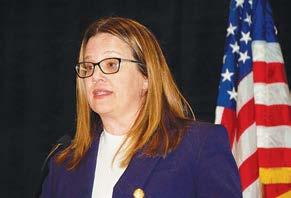
The committee’s presentation focused on the costs of bad repairs to everyone involved. The notes associated with one of the repairs, for example, indicated the customer had brought the vehicle back to the shop that repaired it nine times to try to have the problems addressed.
“That means nine times that customer had to pause whatever was going on in their life to go address something that continuously wasn’t fixed,” committee member Liz Stein said. “It creates frustration, it creates anger, and it creates suspicion and resentment.”
The automakers, she said, developed certified shop programs in part to help avoid such issues. “When there’s a collision repair event, that tests the manufacturer’s brand,” she said. “So when there’s a poor repair experience, that could mean that the customer has a negative brand impression.”
“The repair facility is either spending money to redo the vehicle, or to buy the vehicle back,” Reichen added. “And at the [insurer] level, what happens if that substandard repair isn’t caught and then that vehicle ends up in another loss? The bill-payer now is paying for previously substandard repairs because of this second loss.”
The committee was asked if there were any commonalities among the shops where the poor quality work was done.
“They were all repaired at what we consider legitimate or licensed repair facilities,” Reichen said.
Solis said the committee did not determine whether or not the repairs
“They were all repaired at what we consider legitimate or licensed repair facilities.”
RON REICHEN
COMMITTEE MEMBER
“Making sure that, no matter what, your people are empowered at any point in the process to stop and say, ‘Hey, wait a minute, this isn’t right,’” Stein said. “That if your painter gets something that looks like a train wreck, he’s supposed to send it back to the technician, and that he’s not penalized for stopping the process. Also, that there’s checklists to make sure all procedures were followed.”
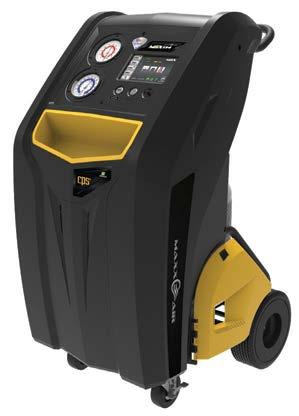

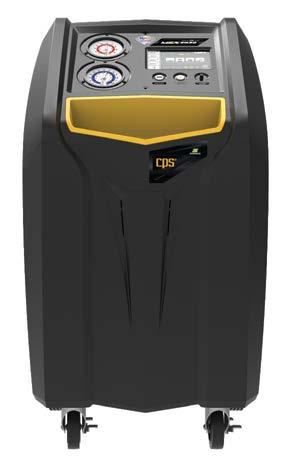
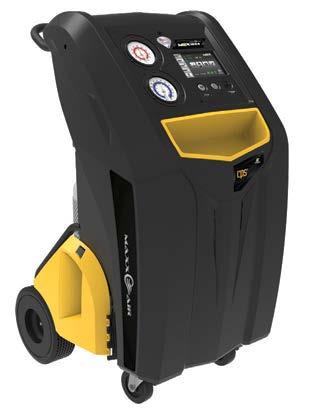



Ever wish you could do OEM quality spot repair without the need to mix or activate 2K and waste expensive materials? Dream no longer, Car-Rep’s revolutionary Wise 2K® aerosol paint technology delivers a 2-component smart repair solution requiring no activation or mixing. More importantly, and unlike the traditional 2K systems it offers a revolutionary unlimited pot life. This isn’t just good news for waste reduction; it’s a game changer in expediting your workflow and reducing material costs while achieving OEM quality results.
Car-Rep’s patented Wise 2K® technology features a deactivated hardener and the resin packed in the same compartment. The 2K reaction happens when the product is sprayed: first the hardener activates when it meets humidity in the air and second, the components crosslink. With no reaction in the can you can use all the contents without the worry of product waste. Car-Rep’s 2K Smart Repair System feature both epoxy and polyurethane technologies, and create a great opportunity to eliminate 1K aerosols which do not meet OEM performance standards.
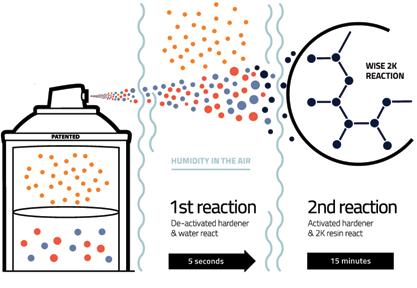
“You must apply 2K epoxy to all bare metal surfaces prior to applying any seam sealer, body filler, or other refinishing products,” mandates Honda similar to all OEMs. Car-Rep 2K Epoxy Primer Sealers and eCoats provide optimal corrosion protection and adhesion. They are ideal for use on any bare metal (exterior skin or inner structures), between spot welded panels (Weld Thru), as a sealer before base coat or urethane primer as well as under seam sealers and body fillers.Since sanding is not needed and recoat window is 48 hours Car-Rep® 2K epoxies are ideal for reducing booth bottle necks and maximizing efficiency in shop operations without sacrificing OEM quality.
As the first and only 2K epoxy aerosol eCoats Car-Rep® 2K truly deliver the performance to match the original factory ecoating. Available in 5 original manufacturer colors and sheen these eCoats are like powder coating in the can and make it possible to do fast spot repairs on the shop floor without sacrificing quality or value.
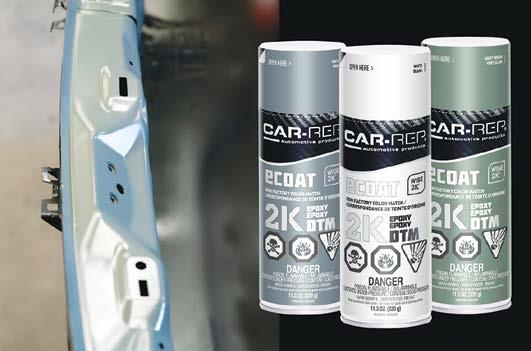
Featured in the builds of John Wargo at SEMA 2022 and 2023 Car-Rep® 2K Epoxy DTM Top Coats are quickly becoming the top choice for custom builders and painters. With single stage application on practically all substrates these 2K epoxies are ideal for chassis refreshments, engine bays and suspension parts as well as replacing 1K trim paints in a single-stage application. Car-Rep 2K top coats make it easy to achieve scratch, corrosion, chemical and UV resistance with strong adhesion.
Still using 1K Clear for spot repair or quick check for spray outs? Car-Rep 2K Polyurethane Clear Coat with unlimited potlife delivers a professional and realistic solution for spray out cards, small parts, door jambs, mirror covers, headlight restoration and more.
Car-Rep®’s 2K Smart Repair System transforms collision repair shops for the better. The advanced solution contributes to a more efficient workflow, allowing for less expensive, quicker and more effective repair completion. This increase in efficiency doesn’t just mean happier customers due to faster service; it also means a higher volume of jobs completed without compromising on quality.






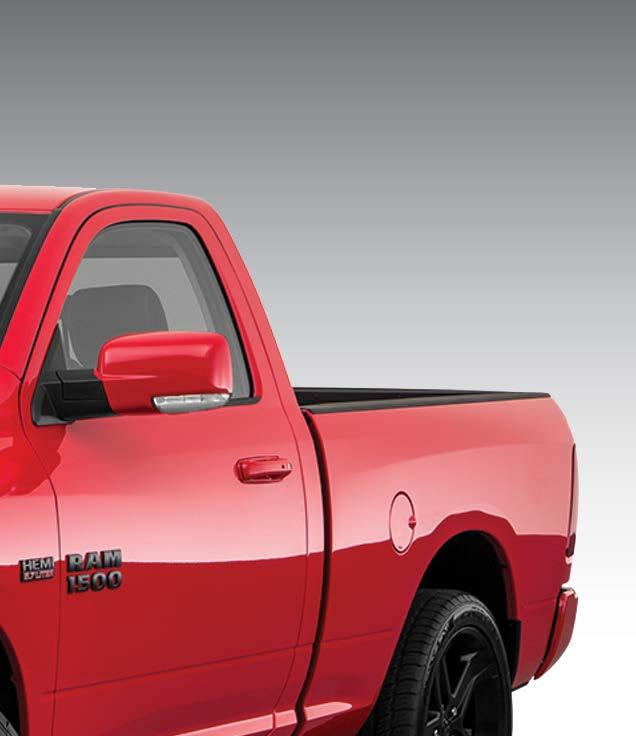

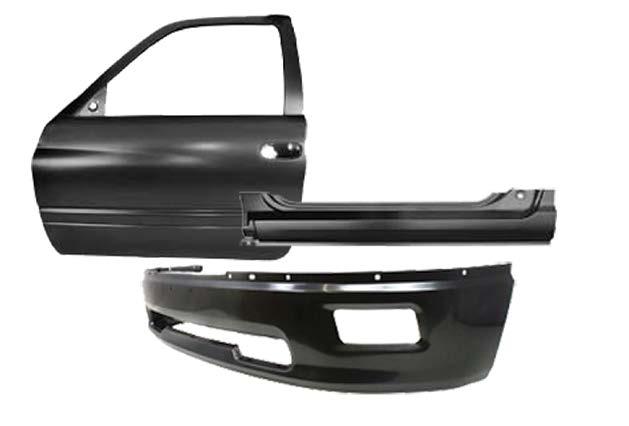

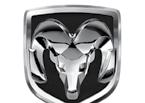





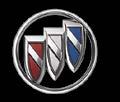




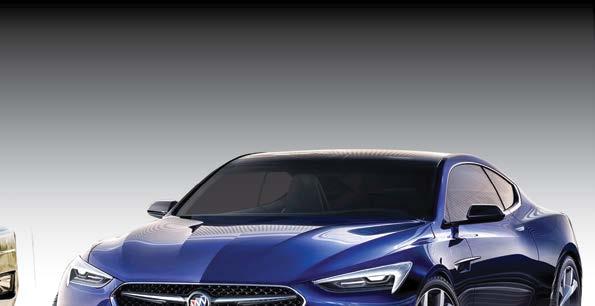

Scoggin-Dickey Chevrolet Buick
5901 Spur 327 › Lubbock, TX 79424
Mon-Fri: 7:30 - 6:30 • Sat: 8:30 - 12:30
Parts Toll Free: 800-888-4251
Parts Local: 806-798-4013

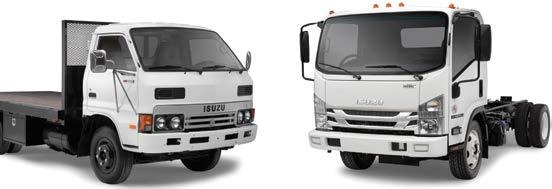
Scoggin-Dickey ISUZU
5901 Spur 327 › Lubbock, TX 79424
Mon-Fri: 7:30 - 6:30 • Sat: 8:30 - 12:30
Parts Toll Free: 800-888-4251
Parts Local: 806-798-4013


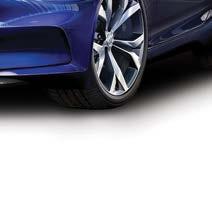


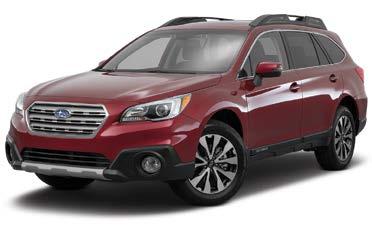
Scoggin-Dickey Subaru
5901 Spur 327 › Lubbock, TX 79424
Mon-Fri: 7:30 - 6:30 • Sat: 8:30 - 12:30
Parts Toll Free: 800-888-4251
Parts Local: 806-798-4013

Earlier this year, a collision shop owner shared a story with me about something he experienced at his shop that really surprised me. Since it involved a common situation – a vehicle sitting in the shop’s lot crashwrapped because of a broken sunroof – that led to additional damage to the vehicle, I thought I’d share his story as a caution to the rest of the industry.
Kris Wyatt said the truck was in the lot of his shop, Wyatt’s Paint & Body in San Bernardino, CA. It rained shortly after the truck was crashwrapped, and then a few days later, the sun came out.
“The rain had gathered in the crash wrap, creating a small pool of water,” Kris told me. “Then the sun shone through that water, which acted like a magnifying glass. That actually burned the seat and the door trim panel. I would never have thought this would happen.”
As Kris joked, the crash wrap did its job by keeping the water out, but, man, that combination of the pool of water and the sun did a number on
the interior of the truck. It might be a one-time freak occurrence, but it’s a situation you might want to warn your employees to keep an eye out for.
I want to thank Kris for sharing this with me, and if other readers have experiences that might be helpful for
other shops to know about, send them to my assistant, Tiffany Driggers, at tiffany@ collisionadvice.com, and she will get them to me.
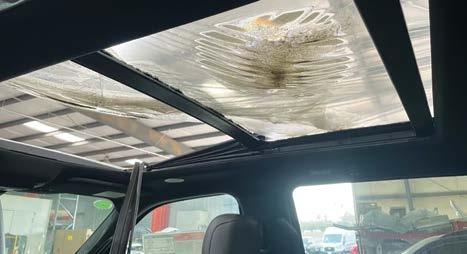
“That actually burned the seat and the door trim panel.”
KRIS WYATT ATTRIBUTION ATTRIBUTION
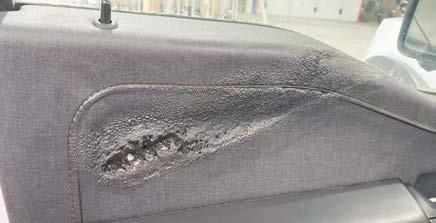
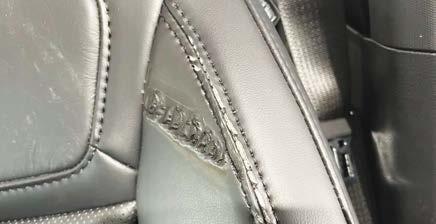
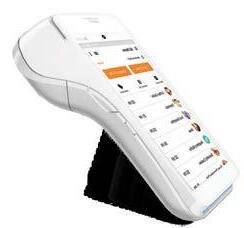
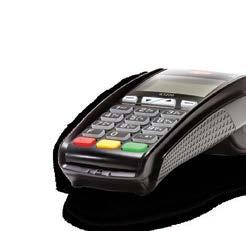
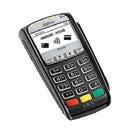
Autocraft Bodywerks, celebrating 40 years of auto collision repair excellence, is broadening its footprint with the introduction of a cutting-edge facility in Spicewood, TX, announced Principal Chris Raeder
Located on a sprawling 2.4acre site, the new 23,000-squarefoot facility is poised to become a full-service hub for vehicle estimates, body work and painting. Catering to a wide range of vehicles, including cars, trucks and SUVs of all makes and models, the facility is equipped to handle the needs of EVs from Tesla, Rivian and Lucid.
“Autocraft has proudly served the Austin community since 1984,” Raeder said, “and we’re excited to announce the expansion of our operations by adding a brand new, state-ofthe-art facility in Spicewood. Our ultimate goal is to serve a wider area of the surrounding Austin community while continuing to provide our guests with the very
best collision repair available. Our Wasson Road location will continue serving Austin and surrounding communities.
“When fully staffed, our new Spicewood location will have 35 employees,” Raeder continued.
“We’re truly excited to be able to provide our special brand of quality collision repair, using only OEM replacement parts, to more guests with a convenient Spicewood location. We believe Autocraft Bodywerks is the future of collision repair.”
The Spicewood facility, scheduled to open its doors in September 2024, is anticipated to bring 35 new jobs to the area.
Autocraft Bodywerks is I-CAR Gold Class certified and specializes in luxury vehicle repair and restoration. The company’s existing locations are in South Austin, North Austin and San Marcos.
For more information, visit www.AutocraftBodywerks.com.
The automotive industry is increasingly integrating internetenabled features that offer convenience but also pave the way for extensive data collection. While some programs offer optin mechanisms for usage-based insurance, there’s a growing concern over “stealth enrollment” and the lack of clear disclosure about third-party data access.
Kia, for instance, announced an agreement with LexisNexis in February to “allow eligible customers who have enrolled in Kia Connect Services to opt in to share their driving behavior data to receive a personalized driving experience and to be more informed drivers.” LexisNexis also supplies that data to insurance companies.
On the other hand, Dahl, along with several other owners of GM vehicles who also shared their stories of spiking insurance rates, found they had unknowingly been enrolled in OnStar Smart Driver, a free feature in GM brands’ connected car apps.
GM confirmed with the New York Times it shares “select insights” gathered by Smart Driver with LexisNexis and Verisk.
The incident has sparked a debate over privacy, consent and the ethical use of consumer data, with policymakers and regulators taking notice. California’s privacy watchdog is probing automakers’ data practices, and U.S. Sen. Edward Markey of Massachusetts has called for an FTC investigation, highlighting the potential intrusion of the “internet of things” into personal lives and its implications on consumer rights.
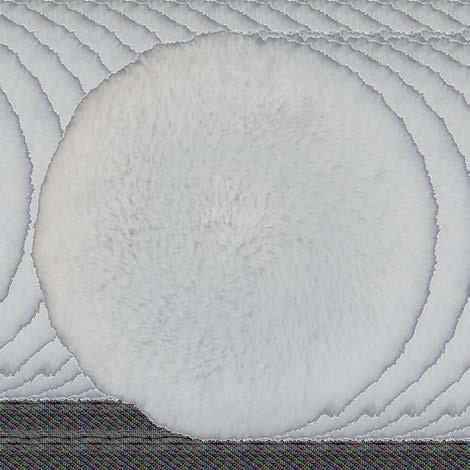
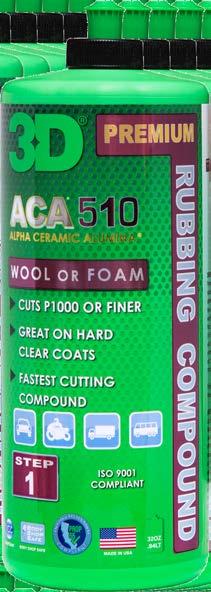
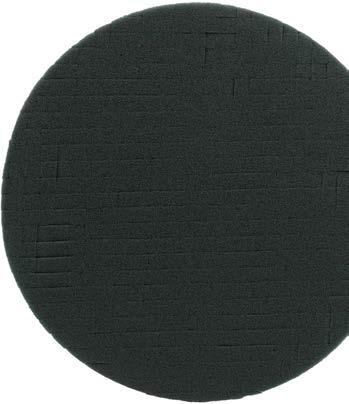
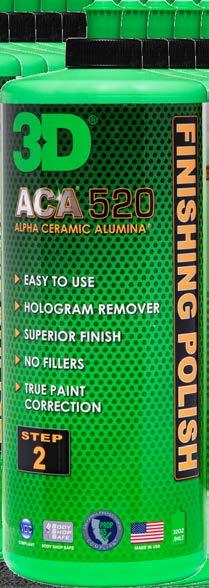
Car ADAS Solutions announced Nate Thomsen joined the company as manager of integrations and support. In his new role, Thomsen will help open new calibration centers and support licensees to ensure their success. This includes providing facility certification, on-site technician development, an overview of shop set-up, and sharing calibration knowledge through body shop visits.
Based out of Seattle, WA, Thomsen has more than 25 years of experience in the collision repair industry. After serving in the U.S. Navy from 1994-1997, he was hired as a car detailer in 1998 and then worked for a small MSO in Seattle. Since then, he has held numerous positions in the industry, including regional vice president of operations for a large MSO, where he met Peeters
As the manager of integrations and support, Thomsen said it will be rewarding to be a mentor and leader helping support Car ADAS Solutions’ licensees and working with the CAR ADAS team.
As advanced driver-assistance systems (ADAS) have become increasingly common on new vehicles, the necessity for precise calibration of radar, cameras, LiDAR and other smart sensors is more crucial than ever to maintain safety and functionality.
The Journal Record recently reported on ADAS Calibration Center in Edmond, OK, where partner Grady Reece highlighted the importance of accurate calibrations, noting that even slight misalignments could lead to dangerous misinterpretations by the vehicle’s systems, potentially causing unintended braking or other hazardous reactions.
The meticulous process of calibration, as outlined by Fox, a technician at the facility, involves a controlled environment with specific conditions such as a level floor, white walls and no external disturbances to ensure the accuracy of the calibration process.
Despite the essential nature of this calibration, many body shops remain unaware of its importance
services
Prevent shops from charging storage fees on repaired vehicles, or total-loss vehicles until the insurance company determines it to be a total loss, and only allowing accrual of such fees from the moment of determination
Prevent repairers from charging more than $39/day for indoor and $24/day for outdoor storage fees for vehicles less than 20 feet long
Set a four-hour limit and $60/hour rate cap on vehicle disassembly and administrative activities, including parts identification, COVID or biocleaning, pre-repair diagnostic scans, researching and creating a repair plan, securing removed parts, moving vehicles from different locations, etc.
The Automotive Service Association (ASA), an advocate for independent automotive service and repair professionals, has vocally
“Technicians are trained to treat each vehicle differently to ensure it is returned to its owner in a condition safe for operation. By contrast, this bill tells repairers to lump all vehicles together and treat them the same.
“One reason many repairers have had to increase storage fees in recent years is because insurance companies are taking longer to complete their claims process, leaving vehicles in my shop for extended periods of time,” he said. “These vehicles take up valuable space in my shop and can prevent me from providing service to other customers. Additionally, I am responsible if something happens to a vehicle while it is in my shop. Telling a repairer they can only charge $24 each day to store a vehicle is offensive.”
The ASA is rallying the automotive repair community in Oklahoma to take a stand against SB 1853. Through their “Taking the Hill” advocacy platform, the association is facilitating efforts to educate lawmakers on the detrimental effects this legislation
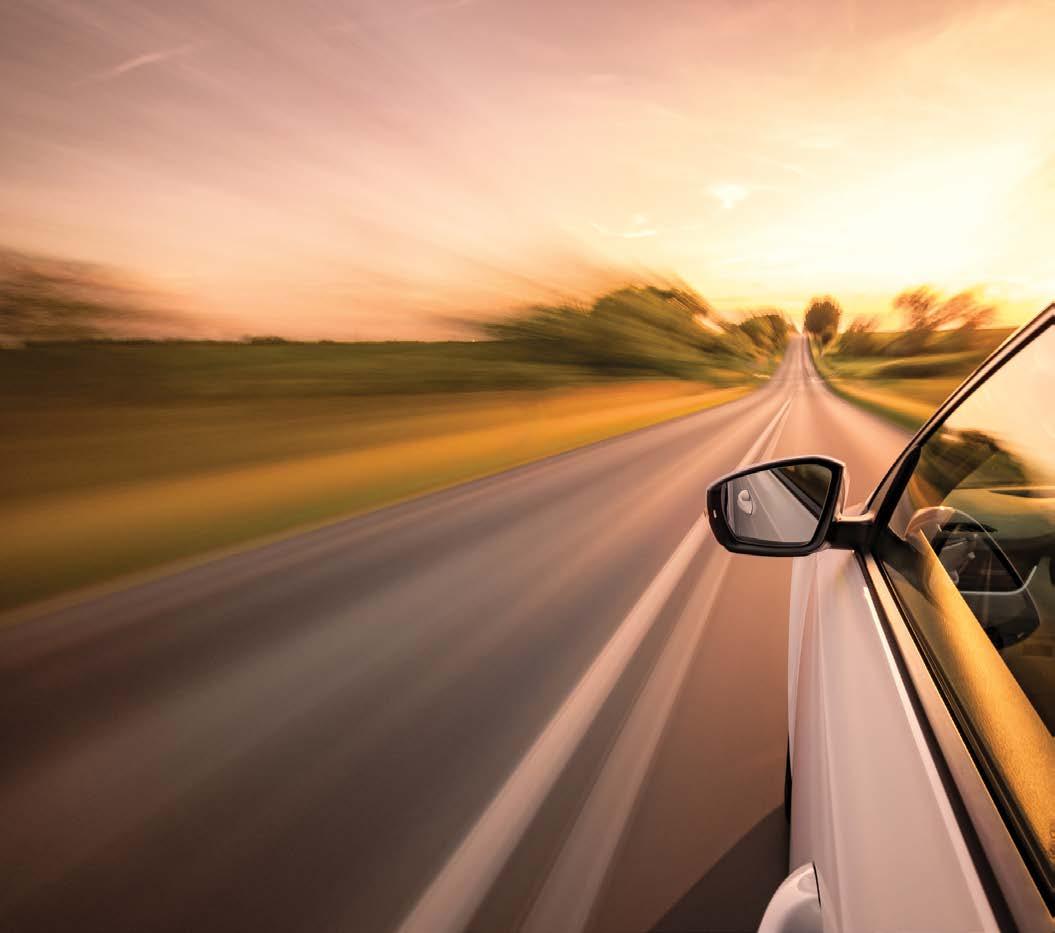
1 Cochran Kia of Robinson Justin Kendrick
Archer Kia Jose Amaya
Auto Park Kia John Parrish
Bergey's Kia Alan Manuel
Bergstrom Kia 116 Ricky Pratt
Billion Kia of Iowa City Steve Ebsen
Blasius Kia Robbie Fenn
Boomer Kia Chris Sanders
Car Pros Kia Moreno Valley Jesse Del Real
Central Kia of Plano Ezequiel De Los Santos
Cherry Hill Kia Jeffrey Rattay
Citrus Kia Sean Cunningham
City Kia of Greater Orlando Tony Long
Coral Springs Kia Thomas Pasquarella
Courtesy Kia Michael Buchanan
Doral Kia Troy Thomas
Fiesta Kia Daryl Bell
Fort Wayne Kia Brian Dinelli
Gerald Kia of Naperville Bill Taylor
Greenway Kia Hickory Hollow Wesley Baker
Greenway Kia North Ted Polygalaktos
Hendrick Kia of Concord Patrick Dougherty
Jerry Seiner Kia Tyler Mitchell
Jerry Seiner Kia Salt Lake Marty Dailey
Jts Kia of Rock Hill Thomas Hakim
Ken Ganley Kia Mentor Jason Baker
Kia Downtown Los Angeles Jose Zamora
Kia of Abilene Cory Smith
Kia of Attleboro Frank Medeiros
Kia of Baton Rouge Patrick Jackson
Kia of East Hartford Juan Molina
Kia of Johnson City Emmanuel Watkins
Kia of Murfreesboro Scottie Clark
Kia of Port Charlotte Gary Wilcoxon
Kia of South Austin John Pierson
Langdale Kia of Valdosta Thomas Oneal
Lawrence Kia Tyler Bunce
Lawton Kia Tony Sanchez
Leblanc Kia Scott Deforrest
Lou Fusz Kia of Evansville Jeff Brown
Lupient Kia Marty Van Reese
Luther Kia of Bloomington Chad Huffman
Mastria Kia Matthew Wrightington
Orr Kia of Shreveport Bossier David Rutherford
Ourisman Chantilly Kia Charles Shipe
Ourisman Kia of Fairfax Michael Munn
Parkside Kia Dennis Bunch
Peltier Kia Longview Chris Timmons
Preston Kia Lynette Bright
Raceway Kia of Conshohocken Alan Bannick
Rick Case Kia Farris Duracher
Route 6 Automall Kia Adam Martineau
Sames Kia Juan Vela
Sands Kia Scott Giffin
Scott Kia of Springfield James Johnson
Southwest Kia of Rockwall Joshua Taylor
Sunset Kia Kevin Pedersen
Towbin Kia Jessica Williams
Vandevere Kia Michael Wagner
West-Herr Kia Pat Hamann
Ancira Kia Ross Simmonds
Bergstrom Kia Appleton Austin Croatt
Bob Utter Kia Michael Martin
Car Pros Kia Robert Sherman
Car Pros Kia Glendale Elder Acevedo
Chantz Scott Kia James Mcelyea
Ciocca Kia Tariq Shaker
Concord Kia Fernando Belanger
Courtesy Kia of Brandon Rodney Zeller
Crain Kia of Bentonville Brittany Hawkins
Crown Kia Joseph Galbraith
Diehl Kia of Massillon Michael Miller
Don Franklin Somerset Kia Jimmie Caudill
Dublin Kia Hector Alvarado
Eagle Kia of Riverhead Robert Portelli
Earnhardt Peoria Kia John Wilmot
Family Kia of St. Augustine Steve Steer
Fiesta Kia Darren Bye
First Kia German Zuniga
Fred Beans Kia of Langhorne Mick Padgeon
Fredy Kia Mike Solis
Gerald Kia of Matteson Jeremy Mihas
Gerald Kia of North Aurora Mark Erickson
Hanson Kia Joshua Wise
Hendrick Kia of Cary Jared Rodegast
Horne Kia Rich Choquette
Huffines Kia Corinth Dan Marder
Huffines Kia McKinney Roy Allen
Jackson Kia Nicolette Beauchesne
Jim Shorkey Kia of Gainesville Lori Javorka
Ken Ganley Kia Boardman Tom Tschappatt
Ken Ganley Kia Clarksburg Ryan Morgan
Ken Ganley Kia Medina Anthony Szabo
Ken Garff Kia Avondale Ronald Munson
Kia Autosport Louis Pope
Kia of Cape Coral Brandon Mello
Kia of Carson Michael Chavez
Kia of Cerritos Darren Storlie
Kia of Everett James Mealey
Kia of Frisco Zach Phillips
Kia of Irvine Jonathan Orendain
Kirby Kia of Ventura Brian Nunes
Lou Fusz Kia Adam Berry
Moritz Kia of Fort Worth Leo Salgado
Myrtle Beach Kia James Mathers
Peak Kia Alex Gross
Peak Kia Colorado Springs Charles Inmotto
Peltier Kia Tyler Craig Huddleston
Ray Skillman Shadeland Kia Daniel Hill
Rick Case Kia Hugo Gomez Jr.
Ron Tonkin Kia Gene Nevett
Seelye Kia of Kalamazoo Greg Meskil
Serra Kia of Gardendale Teresa Cornelius
Sons Kia Stephen Wilson
Stevens Creek Kia Alejandro Berber
Tameron Kia Michael Peterman
Tempe Kia Daniel Lanious
University Kia John Rice
Van Nuys Kia Daniel Arambula
Williams Kia Chad Todd
Airport Kia Juan Munoz Airey
Allentown Kia David Robbins
Bald Hill Kia Matthew Jarvis
Bert Ogden Harlingen Kia Arnold Garza
Bev Smith Kia Isaac Roush
Beyer Kia Falls Church William Cooke
Billion Kia Nate Leamons
Car Pros Kia Renton Homero Sereno
Cornerstone Kia Kurt Vankempen
Courtesy Kia John Arth
Covina Valley Kia John Shackford
Dale Spradley Kia Doug Brewer
Demontrond Kia Billy Doria
Dothan Kia Mike Fowler
Ed Voyles Kia of Chamblee Joshua Hembree
Folsom Lake Kia Joshua Boody
Fort Collins Kia Alan Kiriakos
Garden Grove Kia Felipe Garrido
Gateway Kia of North Brunswick Manuel Rivera
Greenway Kia East Daniel Herrera
Gunther Kia Brian Scott
H & H Kia Steven Arquitte
Hagerstown Kia Rich Fraley
Halleen Kia of Sandusky Chris Schnell
Hart Kia Jared Pendleton
Hello Kia of Valencia Daniel Diaz
Hollywood Kia Troy Gulvas
Hw Kia of West County Dan Hartke
Jacksonville Kia Catherine Bowers
Jeff Wyler Fairfield Kia Jayson Swain
Jenkins Kia of Crystal River Edward Fasano
Kia of Alhambra Antonio Rodriguez
Kia of Cleveland Heather Perrystein
Kia of Coatesville Ronald Bittle
Kia of Des Moines Brett Obraza
Kia of Grand Blanc Brian Baldridge
Kia of Huntington David Coffey
Kia of Puyallup Kasey Cates
Kia On The Boulevard Frank Hettich
King Kia of Laurel Corey Anderson
Lafontaine Kia of Dearborn Brad Mandeville
Lee Johnson Kia Josh Grant
Lou Sobh Kia Terry Utley
Matthews Kia Gary Brundage
McGovern Kia of Norwood Brian Wong
Napoli Kia Paul Coppola
Nashua Kia Ryan Rattray
North County Kia Jim Sanders
Palmen Kia of Kenosha Rigoberto Fuentes
Regal Kia Steve Chilton
Roseville Kia Felix Garcia
Rusty Wallace Kia of Knoxville Robert Kay
Seelye Kia of Battle Creek Randall Bundy
Smithtown Kia Thomas Hartmann
Stokes Hodges Kia Kevin Maskey
Sunset Kia of Sarasota Robert Perrin
Valley-HI Kia Stuart Meyer
Vanguard Kia of Arlington Christopher Vinson
Warner Kia Tim Pennybacker
West Hills Kia Mark Coutts
The collision repair industry should embrace new technology to improve collaboration between repairers, insurers, parts distributors and customers, according to Mike Anderson, who presented “Embracing Technology to be Successful in the Collision Industry,” a CIECA webinar on Feb. 22.
A replay of the 47-minute presentation is available on CIECA’s YouTube channel.
Anderson is a former Virginia-based MSO owner, who now owns Collision Advice.
Anderson said the collision repair industry lags behind many others in using technology, and he thinks it boils down to a lack of trust.
“Let’s talk about what can be accomplished if we had full transparency and trust between all stakeholders,” he said.
Consumers
Shops need to ensure customers’ personal identifying information is erased from total loss vehicles before they go to a salvage yard. Anderson said he is also concerned about how often he sees shops sharing pictures on social media that show a vehicle’s license plate.
“I appreciate techs want to post the quality of their work but at the end of the day, it’s about consumer privacy,” he said.
Anderson said it might be time to rethink the customer survey experience. Customers in a recent focus group reported “survey fatigue”: after filling out one survey, be it from the rental car company, insurer or shop, they tended to feel more negative toward the rest.
“Do we need to have all these different entities doing surveys, or can we just agree on one common solution that can be accepted by all parties?” Anderson said. “We have to ask ourselves if we want to continue with surveys, or are online reviews going to be the survey of the future?”
Anderson said technology can make shops “available” 24/7 to receive estimate requests or schedule an appointment, through their websites or Google business listing. An AIpowered chat feature could be used to answer questions, or to answer calls for a tow.
According to a recent “Who Pays for What?” survey, only 31% of shops
research OEM repair procedures “all the time” and 29% “most of the time.”
Anderson said the most common reasons for not doing that are “I don’t have enough time” followed by “I don’t know how.” Neither are acceptable excuses, Anderson said.
The industry should embrace solutions that allow a vendor to export an invoice back into a shop’s management system, Anderson said.
“There are some management systems do that today but the problem is on the wholesale parts department

“That’s very scary for me on behalf of the consumer,” he said.
However, he acknowledged, there can be 300 to 400 documents to research just to replace a quarter panel.
“We need to use technology to figure out how can we speed up this process,” Anderson said. “I would like to see technology that can figure out the difference in estimates when a collision repairer comes up with one figure and the insurance carrier or third-party payer comes up with another.”
Another issue is the fact onetime use parts are not identified in electronic parts catalogs, only in electronic service manuals or repair procedures, so estimators must look up those parts separately.
“OEMs could supply info to thirdparty estimators to find symbols or words like ‘replace’ or ‘discard,’” Anderson said “I have to believe technology could do that.”
AI can be best put to use by giving it a shop’s historical data to figure out its optimum Work in Progress (WIP), to streamline the scheduling process to increase throughput.
“Listen, throughput benefits everyone,” Anderson said. “But what’s holding us back is getting down to trust – between other software companies, equipment companies. We all need to learn how to play in the sandbox together.”
Parts Departments
Estimating systems are not 100% accurate at identifying one-time use parts, Anderson said. Improving that would help parts employees so they don’t have to research them.
A focus group of about 40 field appraisers working for a top 10 carrier said they would appreciate, when they get an assignment, being told details like there are dogs at the customer’s house.
They also said they want the ability to figure out electronically the difference between their and the shop’s estimates, because it takes a lot of time to do so manually.
Anderson said shops buy parts from their jobber or distributor in as many as 13 different “buckets,” double the number from eight to 10 years ago.
“We need to talk about how we reclassify some of these things, what is actually paint materials and what is not,” he said.
side – if there’s a part that’s not ordered from me, that throws the whole system out of whack. Let’s stop the madness,” he said.
He also suggested a website where a shop’s accounting department could go to find a missing parts credit, instead of having to spend time on the phone tracking it down, and programs to show inventory at the warehouse so repairers can make more accurate decisions on when to schedule a vehicle.
Anderson suggested getting dealership accounting software companies involved in CIECA, so they can see how to make it integrate with body shop management systems.
There is also no software system for the industry specific to HR. Anderson, who conducts OEM certification training, said he often gets emails from shops whose technicians’ certifications are near expiration and need to get them in a class on short notice. A program could auto generate reminders to update certifications.
Software systems could also provide a more modern onboarding experience to anyone who comes to work in the industry.
Shops want wholesale parts distributors that accept electronic parts ordering, process credits in a timely manner, have good inventory, great communication and the ability to scrub parts order by VIN, Anderson said. Dealerships also want electronic parts ordering, as well as distributors that pay bills on time and have minimal returns.
“Electronic is the common theme,” Anderson said.
There is a need for a program to streamline the process to write a repair estimate for a vehicle damaged during transportation, Anderson said.
OEMs also need to get the electronic parts catalog division to talk to the electronic service manual division so one-time use parts are identified, then push that to estimating systems.
A lot of shops are purchasing OEM scan tools but not getting the training to use them properly, Anderson said. Online training on using those tools would be helpful.
Anderson said technology could be used to automate updates for equipment, as those can be critical to consumer safety. Network management tools could push out notifications to update equipment as needed.
“Software can be used for the good of the industry, to save people time and give them quality of life and a better consumer experience, it can be used to ensure safe and proper repairs and increase profitability,” Anderson said.
Anderson acknowledged technology comes with questions, like the morality of using parts pricematching software or the risk of data pumps that report estimates to vehicle history report generators like CARFAX.
“I just want to help everyone in our industry so that their team, or your staff, has a better quality of life,” he said. “The key to that is what can we do to help our industry go back to where people trust each other again? Let’s use technology to help our industry keep up with others.”
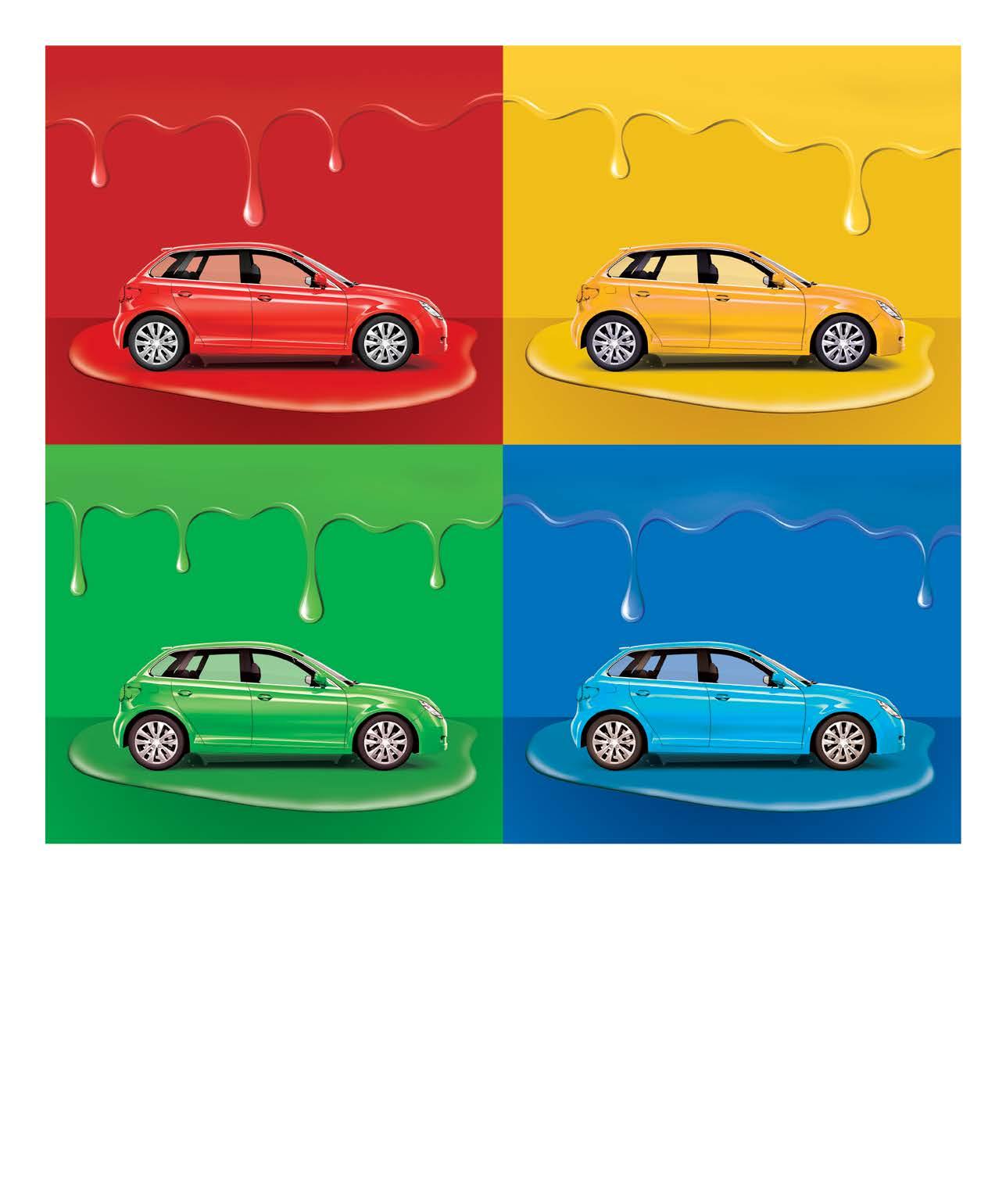

As more car buyers make the switch to battery electric vehicles (BEVs), traditional factors that are also important to buyers of gas-powered vehicles are becoming critical to satisfaction among BEV owners.
Quality and cost of ownership have emerged as the top factors influencing satisfaction, according to the J.D. Power 2024 U.S. Electric Vehicle Experience (EVX) Ownership Study. The study also revealed public charger availability not only remains the least satisfying aspect of owning a BEV, but also that the experience has become notably worse.
The BMW i4 ranks highest overall and among premium BEVs, while the MINI Cooper Electric is the highest-ranking mass market BEV for a second consecutive year. Both models rank highest in their respective segment on the strength of their performance in the vehicle quality and reliability factor. Each model scores more than 60 points (on a 1,000-point scale) higher than their respective nearest segment competitor for that factor.
“The increase in the EV share of the new-vehicle market, reflected by seven new rank-eligible models this year, is a notable step in the transition toward vehicle electrification,” said Brent Gruber, executive director of the EV practice at J.D. Power. “Many products are hitting the mark and resonating with shoppers but, at the same time, the decline in satisfaction with public charging availability should serve as a warning because concern about access to public charging is a key reason many buyers currently reject BEVs. For EVs to reach their full potential, this issue needs to be resolved.”
Public charging isn’t just bad –it’s getting worse: The study finds the public charging experience continues to be a major source of EV owner frustration. Further, nonTesla owners indicate the situation is deteriorating. Among mass market BEV owners, satisfaction with public charger availability is 32 points lower than a year ago. “The industry should view this lack of improvement as a critical issue that requires decisive action,” Gruber said.
Mass market BEVs deliver higher quality than premium BEVs: Owners of mass market brand BEVs experience fewer problems with their vehicle than do owners of premium BEVs. Eleven of the 14 ranked mass market models outperform the premium brand market average in total problems.
“Quality and reliability are the most
important drivers of a positive EV ownership experience,” Gruber said. “As EVs extend to the broader market, minimizing problems will be key to meeting consumer expectations.”
First-time BEV owners are less satisfied than BEV veterans: Buyers new to BEV ownership are less satisfied than those who have previously owned a BEV. This year, the satisfaction gap between the two groups is 28 points, whereas
hybrids. Plug-in hybrids retain the costs of maintaining a traditional powertrain yet without the benefit of the extended electric driving range found in full battery electric vehicles.”
BMW i4 ranks highest overall and highest in the premium BEV segment with a score of 800. Rivian R1T (789) ranks second and Rivian R1S (778) ranks third.
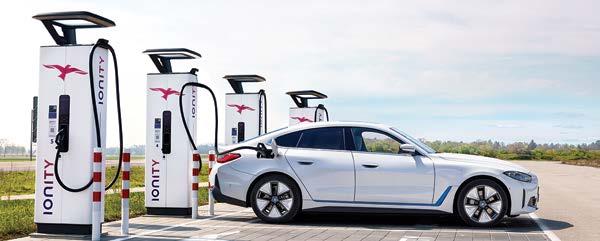
a year ago, the gap was 14 points. Overall satisfaction among first-time BEV owners has declined 16 points from 2023. Battery range and public charging availability are the two factors in which the gap between previous BEV owners and new owners is greatest.
Most BEV owners say they’ll consider a BEV again, but first-time BEV owners may be more fickle: Firsttime BEV owners say they are open to considering non-BEVs in the future. However, almost half (48%) say they will consider a plug-in hybrid vehicle (PHEV) and 39% say they are willing to consider hybrid or internal combustion engine (ICE) vehicles. Meanwhile, 38% of previous BEV owners say they are willing to consider a PHEV and only 19% would consider a hybrid or ICE vehicle for their next purchase.
PHEVs might not present a good alternative to BEVs: Recently, news reports have suggested that plug-in hybrid vehicles could solve many of the issues plaguing BEVs, such as range limitations and lack of public charging availability. However, this year’s study finds that owners of PHEVs are, on the whole, much less satisfied with their vehicle than are owners of BEVs. Overall satisfaction with PHEVs is 629, while mass market BEVs (718) and premium BEVs (750) score much higher.
“Plug-in hybrids may not be the simple solution to solving early issues with full battery electric vehicles,” Gruber said. “Expected lower running costs is a top purchase reason for EVs but satisfaction with the cost of ownership is much lower for plug-in
models in the premium segment has grown from five to eight year over year. Award-eligible mass market models have increased from 10 to 14. Satisfaction among owners of premium EVs averages 750, while satisfaction among mass market EV owners averages 718.
The U.S. Electric Vehicle Experience (EVX) Ownership Study, now in its fourth year, focuses on the crucial first year of ownership. The overall EVX ownership index score measures electric vehicle owner satisfaction in both premium and mass market segments. The 2024 study includes 10 factors (in alphabetical order): accuracy of stated battery range; availability of public charging stations; battery range; cost of ownership; driving enjoyment; ease of charging at home; interior and exterior styling; safety and technology features; service experience; and vehicle quality and reliability.
MINI Cooper Electric ranks highest in the mass market BEV segment for a second consecutive year, with a score of 770. Ford Mustang Mach-E (764) ranks second and Hyundai IONIQ 6 (759) ranks third.
The number of award-eligible
The study is conducted in collaboration with PlugShare, an EV driver app maker and research firm. Survey respondents for the 2024 study include 4,650 owners of 2023 and 2024 model-year BEVs and PHEVs. The study was fielded from August through December 2023.







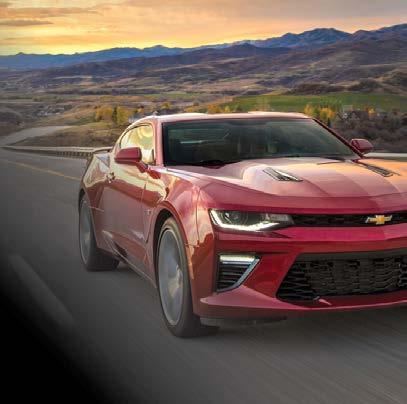


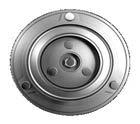
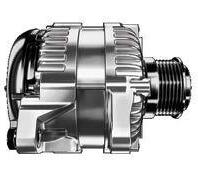

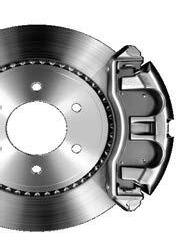

Servicing Ford, Lincoln & Mercury parts
Ford Medium-Duty Truck parts up to F-750.
Our huge inventory of collision parts qualifies us as one of the few Ford Authorized Crash Parts Centers
Collision price matching through Collision Link, Parts Trader and OPS.
We can do business how you like to do business with Collision Link, RepairLink, OPS, Parts Trader, CCC Parts, email, fax, or a good old-fashioned phone call with our experienced parts sta .
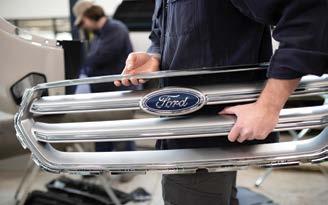
We buy our collision parts by the truckload to get you the very best deal and the largest inventory.
Very competitive on Motorcra , Diesel and all maintenance parts.
We deliver as far north as Waco, south to San Marcos, west to Marble Falls, East to Bastrop, southwest to Dripping Springs, and everything in between multiple times per day!
Overnight delivers to over 200 cities across Texas + service to Oklahoma and Louisiana with 1 - 2 day service.
Noon delivers to most cities within 100 miles of the dealership.




State legislatures around the country are reviewing proposed laws that could have a variety of impacts on the collision repair industry.
A House committee in Massachusetts in February gave a thumbs up to H 4412, a bill that calls for establishing a minimum reimbursement body shop labor rate by adjusting the labor rate in effect in 1988 by the rate of inflation since then.
During a House committee hearing in Washington state earlier this year, lawmakers heard testimony for and against HB 2011, a bill that would give policyholders the right to call for an independent appraisal when there’s a disagreement about repair costs. Jeff Butler, a Seattle shop owner who also operates as an independent adjuster through Collison Consulting of Washington, told lawmakers the amounts he helps consumers recover because of underpaid claims averages $7,200.
“That’s 78% more than the insurer’s last offer [and] 19% more than on total loss cases…and I won those cases using the insurance company’s umpire,” Butler testified.
“This is a pattern and practice in Washington state.”
SB 2745, introduced in Mississippi, would define a “proper repair” as one performed “pursuant to the OEM repair procedures and using OEM or OEM-equivalent parts that have been properly tested…to meet the manufacturer’s specifications.” It would prohibit an insurer from stating or suggesting an insured must use a particular shop, or a

shop “identified on a preferred list compiled by an insurer.” It would require these provisions be “clearly and prominently” stated “on the face of the insurance policy.”
The Automobile Body Parts Association (ABPA), which represents manufacturers and distributors of non-OEM parts, submitted testimony
opposing the bill, focusing on another portion of the bill, which states, “Restoration of the vehicle to its condition prior to the loss includes repair processes.” The bill defines those as “as the explicit processes, tolerances and other technical requirements or instructions for the repair of a motor vehicle…that the motor vehicle manufacturer makes generally available to dealerships, independent repair shops and insurers.” The bill states it does not mandate an insurance company pay for OEM parts “except to the extent that the use of alternate parts would fail to restore the vehicle to its condition prior to the loss.”
The ABPA, however, told lawmakers “any bill language restricting the use of alternative parts, in favor of self-serving repair processes that primarily benefit OEM manufacturers, could lead to a monopolistic environment detrimental to consumers.”
The ABPA also testified at a February hearing in Idaho opposing S 1233, a bill that would add to the required notice on estimates there that include non-OEM parts; that notice would be required to say such parts “may affect the safety and performance of your vehicle,” and
recommend “that you consult with a qualified industry expert or repair shop before making any decisions regarding the use of non-OEM crash parts.”
The ABPA also is opposing a Rhode Island bill, H 7264, that would prohibit an insurer from denying the use of OEM parts on vehicles four to six years old if the repairer has written consent from the vehicle owner to
“This is a pattern and practice in Washington state.”
JEFF BUTLER COLLISON CONSULTING OF WASHINGTON
install OEM parts. Existing state law there prohibits the required use of non-OEM parts for vehicles up to four years old unless the repairer has written consent from the vehicle owner.
The Automotive Service Association has created a webpage where Oklahomans can quickly send a letter to their state legislators to urge their opposition to SB 1853, a bill that sets limits on charges for tear-down work and storage fees. Visit www.votervoice.net/ASASHOP/ campaigns/111794/respond to send a letter.
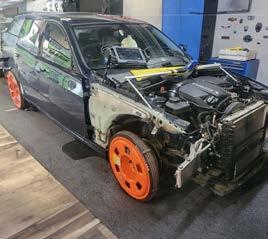
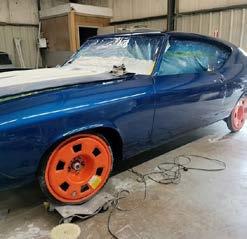
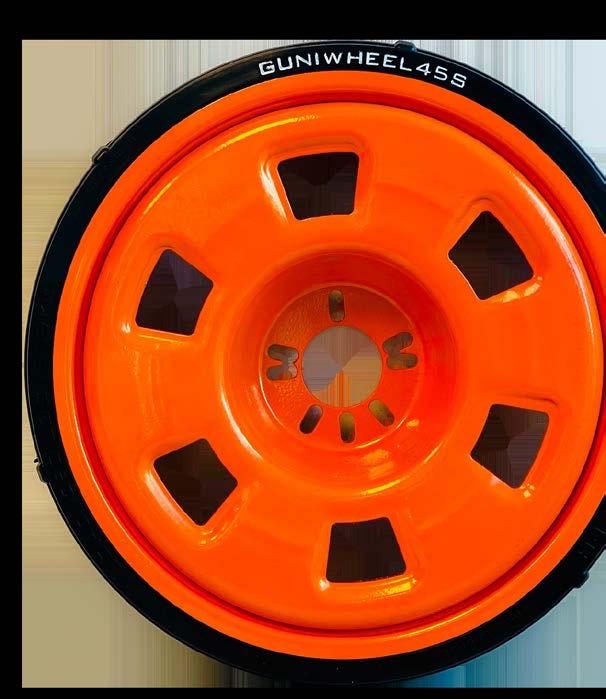
In response to the growing challenges faced by the collision repair industry in retaining and attracting skilled technicians, I-CAR, in collaboration with the Society of Collision Repair Specialists (SCRS), engaged with Ducker Carlisle, a global consulting firm, to conduct a technician satisfaction survey researching their opinions on compensation, culture and career opportunities.
This comprehensive white paper showcases the unique perspective of collision repair technicians and aims to better understand their sentiments and career outlook while identifying key factors influencing their workplace satisfaction.
This survey, which was conducted in 2023 and involved more than 800 collision repair technicians, provided valuable insights into various aspects of the profession. Ducker Carlisle’s comprehensive experience in the automotive space and their history of surveying, analyzing and benchmarking the perspective of diesel and mechanical technicians was instrumental in helping the collision repair industry understand recruitment and retention challenges.
The survey also allowed a basis for comparison between those two automotive service sectors which often compete with the collision repair industry for technician talent.
“The white paper’s groundbreaking results shed light on critical areas that need attention within our industry,” said Dara Goroff, vice president of planning and industry talent programming. “We’re already starting to provide solutions that address the issues contributing to attrition with the goal of enhancing technician satisfaction to help the industry attract, engage, educate and retain the top talent that will foster the industry’s sustainability, growth and success.”
The white paper sheds light on critical areas, including:
Overall satisfaction: While collision techs express higher satisfaction than dealer service counterparts, more than a quarter are still considering leaving their roles. They are are also hesitant to recommend the career to others.
Compensation and Pay Plans:
High earning potential exists, as a large portion of tenured techs earn more than $100,000 per year, but disparities
based on experience and shop type create barriers for newer techs. More than 60% of techs are on flat rate pay plans, which is also very unpopular –flat rate technicians overwhelmingly would not recommend the career.
Benefits Offerings: Lack of clear offerings or awareness poses a challenge in attracting and retaining talent. Health insurance and paid time off are only offered by about 15% of shops.
Career Outlook & Progression: Nearly half are dissatisfied with or unaware of advancement opportunities. This is a problem for the industry – opportunity for career advancement is very strongly correlated with overall technician satisfaction. In addition, technicians who may be looking for other opportunities don’t have to look far, as they are regularly being recruited by competing shops.
Technical Training: Average dissatisfaction highlights the need for improved and consistent training options. Investing in training opportunities is an important way
also benefit the shop as the shop gains a higher skilled workforce – it’s a win-win.
New Technology: Collision techs express excitement about working on emerging technologies, offering a potential recruiting advantage.
“The industry recognizes that collision repair technicians are indispensable to our business operations. Their pivotal role is evident, and the current industry landscape, marked by an annual turnover rate of 30% to 40% among technicians, underscores the challenges we face,” added Aaron Schulenberg, executive director of SCRS. “In light of the pressing technician retention crisis, understanding the sentiments and career outlook of our skilled technicians has become a paramount concern for the industry’s sustained success.”
While recruiting new technicians is important, retaining those already employed is just as, if not more important.
For more detailed findings and
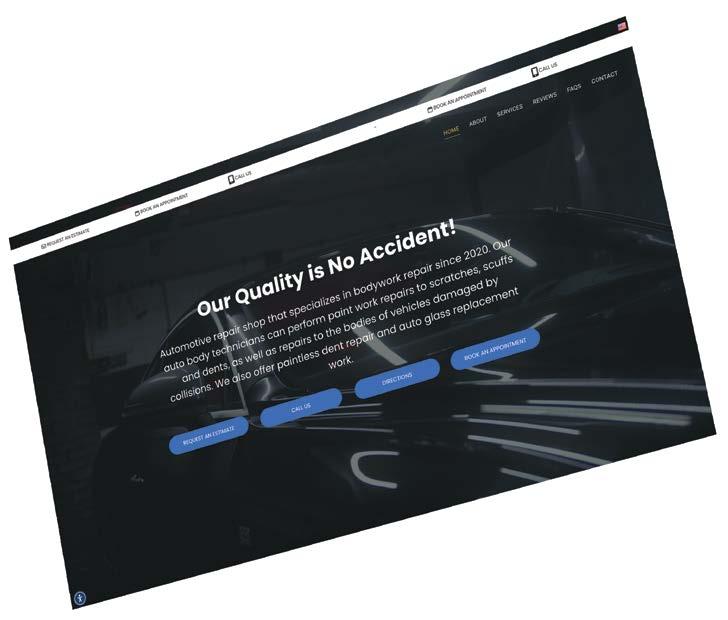
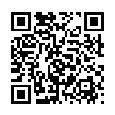
The Insurance Institute for Highway Safety is making it harder to earn its TOP SAFETY PICK and TOP SAFETY PICK+ awards in 2024, challenging manufacturers to offer better protection for back seat passengers and improve their pedestrian crash avoidance systems.
However, 71 models qualify for 2024 awards. Of those, 22 earn TOP SAFETY PICK+, and 49 earn TOP SAFETY PICK.
“We followed the tougher requirements we introduced last year with another major update to the award criteria in 2024,” said IIHS President David Harkey. “This year’s winners are true standouts, offering the highest level of protection for both vehicle occupants and other vulnerable road users.”
Last year’s biggest change was the replacement of the original side crash test with an updated version that uses a heavier barrier traveling at a higher speed. Initially, an acceptable or good rating was enough to garner the lowertier TOP SAFETY PICK award. In 2024, a good rating is required for either TOP SAFETY PICK or TOP SAFETY PICK+.
In addition, vehicles now need an acceptable or good rating in a revised version of the pedestrian front crash prevention evaluation to qualify for either award. The new version replaces the earlier daytime and nighttime tests with a single evaluation that includes some test runs in daylight and some in the dark. Last year, vehicles could earn the lower-tier award regardless of whether they could detect and avoid pedestrians in the dark.
In an even bigger change, the updated moderate front overlap test has replaced the original evaluation in the 2024 TOP SAFETY PICK+ requirements. Vehicles now need an acceptable or good rating in the updated evaluation, which adds a second dummy seated behind the driver and emphasizes back seat safety. A good rating in the original moderate overlap test is still needed for the base TOP SAFETY PICK award.
As before, to earn either award, a vehicle must offer good protection in a small overlap front crash, in which 25% of the vehicle’s width on either side collides with another vehicle or a stationary object. This year, the driverside and passenger-side evaluations have been combined into a single rating. The test is performed on both the driver and passenger sides, and the rating is equivalent to the lower of the two results.
Award winners also must have good or acceptable headlights equipped on all trim levels.
Hyundai Motor Group, which includes the Genesis, Hyundai and Kia brands, has the most 2024 awards overall – six TOP SAFETY PICK+ and
10 TOP SAFETY PICK awards for a total of 16. Toyota Motor Corp., which includes the Toyota and Lexus brands, has the next highest total with one TOP SAFETY PICK+ and 12 TOP SAFETY PICK awards. Mazda earns the most TOP SAFETY PICK+ awards of any single brand, with five, as well as one TOP SAFETY PICK.
By class, small SUVs, midsize SUVs and midsize luxury SUVs are tied for the most TOP SAFETY PICK+ awards, with five each. Midsize luxury SUVs, which qualify for an additional 12 TOP SAFETY PICK awards, earn the most awards overall. Relatively few cars and pickups qualify for either award.
“The high number of SUVs that earn awards probably reflects the dominance of those vehicles in the U.S. market,” said Harkey. “But it’s disappointing that only four pickups and four midsize cars earn awards, considering the popularity of those classes.”
The changes to the 2024 award criteria are designed to push automakers to pursue higher levels of safety.
IIHS introduced the original moderate overlap front test in 1995. At the time, most vehicles earned ratings of poor or marginal. For the past decade, virtually every vehicle tested has earned a good rating thanks to stronger vehicle structures, the introduction of front and side-curtain airbags and a series of improvements in seat belt technology.
That represents a big win for safety. An analysis of 14 years’ worth of crash data involving IIHS-rated vehicles shows that a driver of a model rated good in the original moderate overlap test is 46% less likely to die in a head-on crash with a similar vehicle, compared with a driver of a model rated poor.
IIHS introduced the updated test to encourage similar advancements in the back seat. Once, second-row occupants were substantially safer than those seated in the front because of the greater distance between them and the impact in a frontal crash. In today’s vehicles, though, there is barely any deformation of the occupant compartment in the moderate overlap test. In addition, automakers have added airbags and advanced seat belts in the front seats but not often in the rear. As a result, in vehicles from model year 2007 onward, the risk of a fatal injury is higher for belted occupants in the rear seat than in the front.
To spur automakers to address that gap, the updated test includes an additional dummy positioned in the second row behind the driver and uses new metrics that focus on the injuries most frequently seen in rearseat occupants. Many automakers have made substantial progress since the first group of ratings was released in
December 2022. Making an acceptable or good rating a requirement for TOP SAFETY PICK+ is the next step in accelerating those improvements.
The tougher standards for pedestrian front crash prevention systems are grounded in similar progress. In 2019, when IIHS launched the daytime vehicle-to-pedestrian evaluation, only 21% of the vehicles tested earned the highest rating of superior, while 44% of new models didn’t even offer the technology. By 2023, 59% of vehicles earned superior ratings in the daytime test, and 40% also earned superior ratings in the nighttime evaluation, which was introduced a year earlier.
An advanced or superior rating in the daytime test was required for a 2023 TOP SAFETY PICK award, and an advanced or superior rating in the nighttime test was necessary to earn the “plus.” For 2024, IIHS has combined the two tests into a single evaluation, making nighttime performance essential for either award. The
Small Cars
Acura Integra
Mazda 3 hatchback
Mazda 3 sedan
Toyota Prius
Midsize Cars
Honda Accord Hyundai IONIQ 6
Large Luxury Car
Genesis Electrified G80
Small SUVs
Genesis GV60
Honda HR-V
Hyundai Kona
Mazda CX-30
Mazda CX-50 (built after August 2023)
Midsize SUVs
Ford Explorer
Kia Telluride
Mazda CX-90
Nissan Pathfinder (built after November 2023)
Subaru Ascent
Midsize Luxury SUVs
Acura MDX
BMW X3
Genesis GV80 (built after August 2023)
Mercedes-Benz GLE Class (with optional front crash prevention)
Tesla Model Y
Small Cars
Hyundai Elantra
Subaru Impreza
Toyota Prius Prime
Midsize Cars
Subaru Outback
Toyota Camry
Large Car
Toyota Crown
Midsize Luxury Cars
BMW 5 series
Mercedes-Benz C-Class
Large Luxury Cars
Genesis G80
Genesis G90
superior/advanced/basic/no credit scale has been replaced by the good/ acceptable/marginal/poor scale used for other IIHS evaluations. This subtle change recognizes that technology that detects and brakes for pedestrians should be expected on all vehicles.
Pedestrians represent an increasingly large share of crash deaths, and pedestrian fatalities are currently at their highest level since the early 1980s. Most pedestrian crashes occur during the day, when there are more people on the roads, but threequarters of fatal pedestrian crashes happen at night.
“There’s still progress to be made in the protection that vehicles provide for their occupants, as the introduction of the updated moderate overlap test shows,” Harkey said. “But many of the biggest gains of the future will come from automakers and policymakers, along with all of us as car buyers and drivers, taking steps to protect everyone on the road, not just our own families.”
Small SUVs
BMW X1
Honda CR-V
Hyundai IONIQ 5
Hyundai Tucson
Kia Sportage
Lexus UX
Lexus RZ
Subaru Solterra
Midsize SUVs
Honda Pilot
Hyundai Palisade
Jeep Grand Cherokee
Jeep Grand Cherokee L
Mazda CX-90 PHEV
Nissan Ariya
Toyota Highlander
Volkswagen Atlas
Volkswagen Atlas Cross Sport
Large SUVs
Audi Q7
Audi Q8 e-tron
Audi Q8 Sportback e-tron
Rivian R1S
Midsize Luxury SUVs
Acura RDX
Audi Q4 e-tron
Audi Q4 Sportback e-tron
Genesis Electrified GV70
Genesis GV70 (built after November 2023)
Infiniti QX60
Lexus NX
Lexus NX Plug-in Hybrid
Lexus RX
Mercedes-Benz GLC
Volvo XC90
Volvo XC90 Recharge
Minivans
Honda Odyssey
Toyota Sienna
Small Pickup
Hyundai Santa Cruz
Large Pickups
Rivian R1T crew cab
Toyota Tundra crew cab
Toyota Tundra extended cab


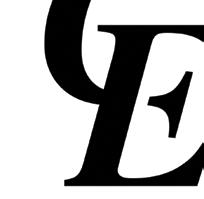




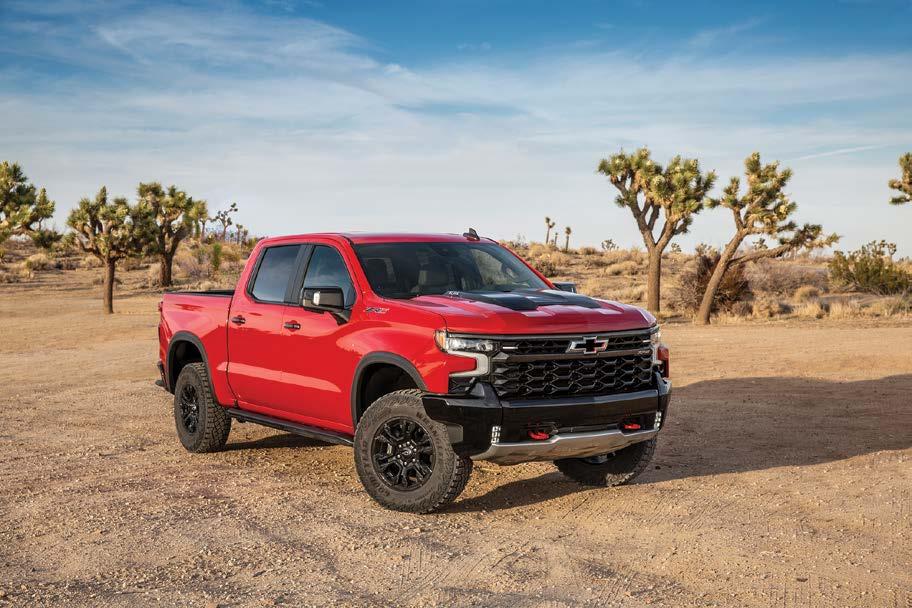
The Collision Industry Electronic Commerce Association (CIECA) announced its 15th annual conference, CONNEX 2024: “The Intersection of Data & Mobility,” will be held Sept. 24-25 at the MGM Grand Detroit hotel in Detroit, MI.
During the two-day event, insightful speakers will discuss where technology and businesses are headed and what the collision industry can do to prepare. A highlight of the event will be an exclusive tour of the American Center for Mobility. The conference will also include networking opportunities, a vehicle gifting as part of the National Auto Body Council Recycled Rides® program, and a celebration of CIECA’s 30th anniversary of creating data integration standards.
All industry stakeholders, including CIECA members and non-members, are invited to attend. The conference agenda will be announced in the spring.
For information about early bird conference registration rates, visit cieca.zohobackstage.com/ CONNEX2024#/tickets?lang=en.
Several U.S. auto retailers have reported a downturn in profits in the last quarter of 2023, largely attributed to the implementation of price cuts and incentives aimed at attracting buyers in an uncertain economic environment, which has subsequently impacted newvehicle margins, Reuters reported.
Over the past few years, auto dealers enjoyed elevated prices, benefiting from a strong demand for new vehicles coupled with limited supplies due to supply chain disruptions. However, the scenario has changed with higher vehicle production smoothing out supply issues, thus reducing dealer margins, according to statements made by auto retail chain executives.
A report by Cox Automotive highlighted the growing trend of discounts and incentives on new vehicles, which is exerting a downward pressure on both pricing and profitability for dealers and automakers.
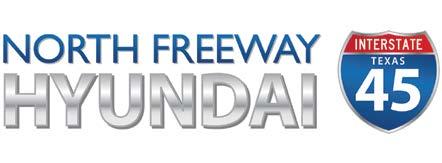


“Discounts and incentives on new-vehicles continue to rise, and that is putting downward pressure on pricing and profitability for dealers and automakers alike,” the report noted.
Despite the lowered prices and increased incentives, the pace of U.S. new-vehicle sales has decelerated in the initial month of the year. The automotive sector is also grappling with challenges related to electric vehicles (EVs), which necessitate higher marketing expenses due to their higher maintenance costs and lower resale values. Adding to the industry’s woes, EV prices in the U.S. have seen significant reductions over the past year, predominantly driven by price cuts at leading manufacturers like Tesla.
On the financial front, AutoNation’s CEO Mike Manley revealed during an earnings call that new vehicle margins continued to decline, albeit at a modest rate of about $120 per month in
the fourth quarter, a slower pace compared to previous quarters. Lithia Motors also experienced a dip in new vehicle margin to 7.9%.
Despite these challenges, retailers are finding a silver lining in their aftermarket service units, which have boosted profits from maintenance services for new vehicles. The increasing complexity of vehicles, due to advanced technology and software, has augmented the demand for specialized maintenance services.
The impact of these industrywide trends was evident in the stock market, with shares of Sonic Automotive, which fell short of fourth quarter estimates, witnessing a 5% decline. Meanwhile, AutoNation’s shares saw a marginal decrease, and Lithia’s shares experienced a slight uptick, reflecting the mixed responses from the investment community to the ongoing developments in the automotive retail sector.

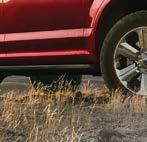
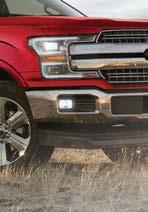




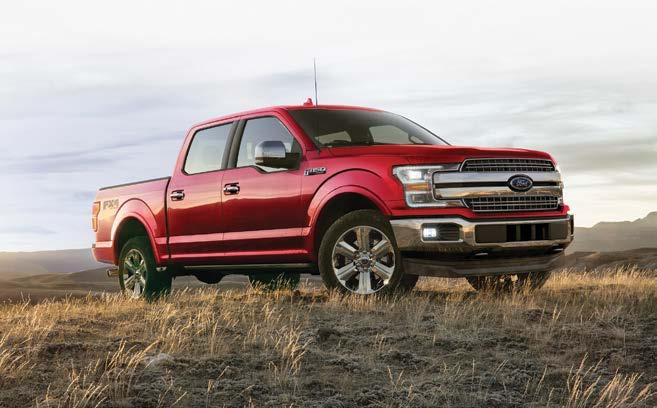







Market research firm Gartner announced March 7 that battery electric vehicles (EVs) are set to become more cost-effective to produce than comparable internal combustion engine (ICE) vehicles by 2027, Reuters reported. The milestone is attributed to innovative manufacturing methods poised to drastically reduce production costs.
Gartner’s research showed these cost reductions will outpace the decreasing costs of EV batteries, which currently represent about 40% of an electric vehicle’s price.
“Innovations that simplify production costs, such as centralized vehicle architecture or the introduction of gigacastings, are pivotal in reducing manufacturing costs and assembly time,” the firm stated.
Gigacastings, a technique popularized by Tesla, involve large casting machines that manufacture substantial single pieces of vehicle underbodies. This method not only
streamlines production but also minimizes the labor required from robots, enhancing overall efficiency.
“This [new technology] means BEVs will reach ICE cost parity much faster than initially expected, but at the same time, it will make some repairs of BEVs considerably costlier,”
PEDRO PACHECO VICE PRESIDENT OF RESEARCH AT GARTNER
“This [new technology] means BEVs will reach ICE cost parity much faster than initially expected, but at the same time, it will make some repairs of BEVs considerably costlier,” Pedro Pacheco , vice president of research at Gartner, told Reuters.
However, the report also highlights a potential downside to these advancements. The
average cost of repairing an EV’s body and battery after a severe accident is projected to surge by 30% by 2027. This increase could result in more vehicles being declared total losses after collisions, as repair costs may exceed their residual values.
Consumer apprehension regarding the high repair costs of EVs has already been noted as a concern. Gartner warns of a potential backlash if production cost savings lead to escalated repair expenses. Additionally, the firm anticipates a consolidation in the EV industry, with an estimated 15% of EV companies founded in the last decade facing acquisition or bankruptcy by 2027.
Despite these challenges, Pacheco remains optimistic about the EV sector’s future. “This does not mean the EV sector is crumbling. It is simply entering a new phase where companies with superior products and services will prevail,” he said.
DCR Systems is excited to announce the addition of Maria Stump as people development manager. In her new role, Stump focuses on all aspects of working with employees, including hiring and retention, setting up processes, managing training programs and employee development.
Stump graduated from John Carroll University in Cleveland, OH, in 2020 with a management and human resources degree. Her experience includes recruitment and retention, human resources, employee development, business operations, financial services and customer service.
With her interest in people, Stump was looking for an opportunity to assist a company with coaching and development. When she learned about the position at DCR Systems, it sounded like a great fit.
Joining the company without prior knowledge of the collision repair industry, Stump visited five of seven DCR Systems’ locations to introduce herself and explain how she was there to support employees.



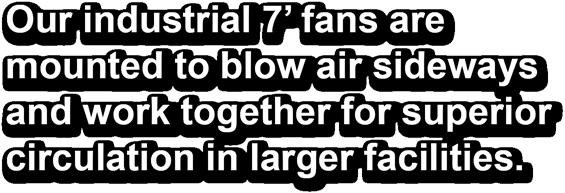

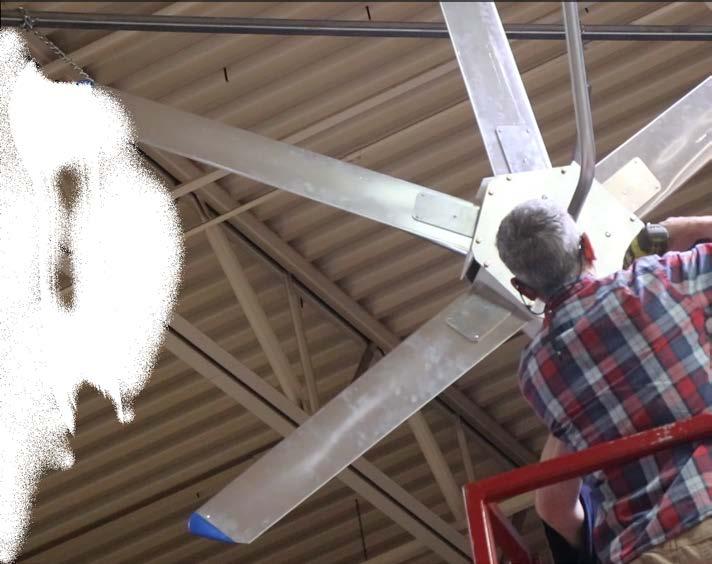


Unlock savings and precision fit with genuine parts
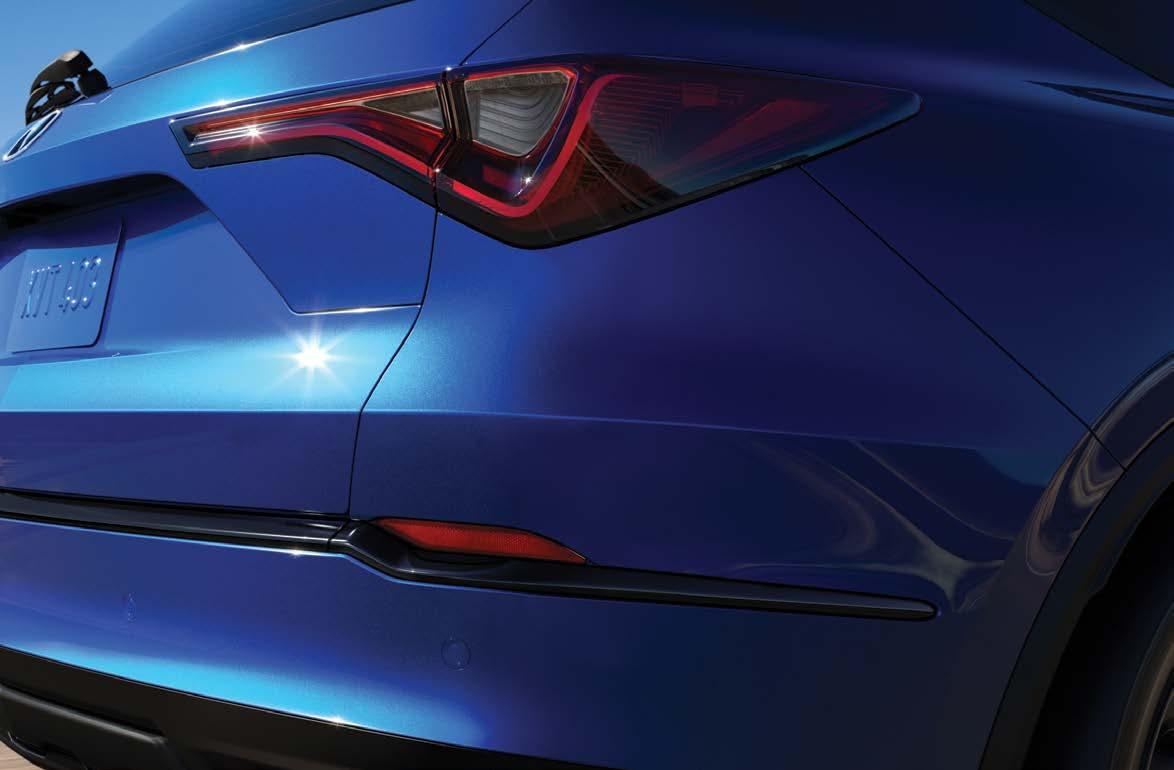
• Save time and money: reduce returns by up to 16%
• Faster ordering process
• More accurate orders
• Easier invoice processing
• Live information
• Seamless fit
• Competitive pricing
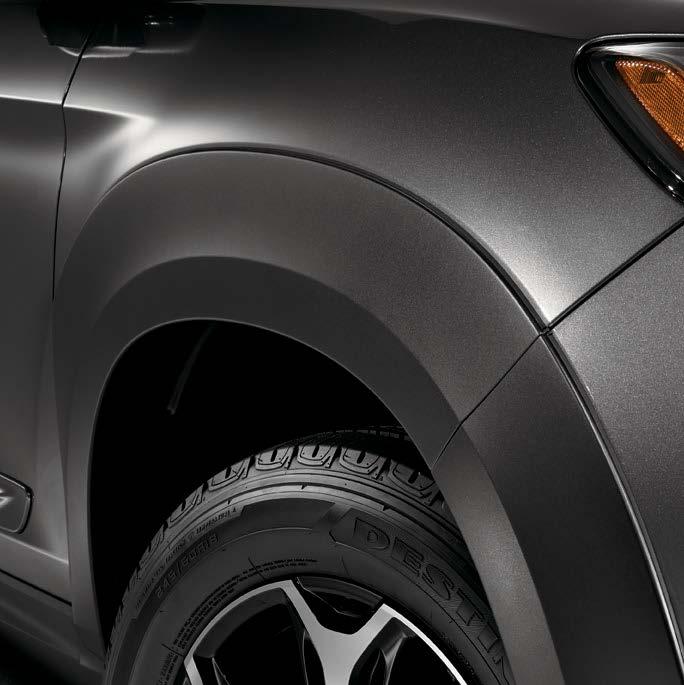
Order now on CCC ONE®
HONDA
Please contact these dealers for your Honda or Acura Genuine parts needs.
Mike Maroone Honda
Colorado Springs
888-431-0294
719-785-5045
Dept Hours: M-F 7-6; Sat 7-5 rick williams@mikemarooneauto com
Mile High Honda
Denver
800-548-4730
303-369-7800
Dept Hours: M-F 7-6 crehburg@autotree�net
LOUISIANA
Honda of Harvey
Harvey
800-943-4227
504-368-5687
Dept Hours: M-F 7-5:30; Sat 7:30-12 tmaywalt@millsautogroup com
Walker Honda
Alexandria
318-448-8255
318-445-6677
Dept� Hours: M-F 7:30-5:30 hondaparts@walkerautomotive com
ACURA
COLORADO
Mile High Acura
Denver
800-548-4730
303-369-7800
Dept Hours: M-F 7-6 crehburg@autotree net
Acura of Baton Rouge
Baton Rouge
866-733-2861
225-756-6166
Dept� Hours: M-F 7:30-6; Sat 8-5 dlavigne@acurabr com
Walker Acura
Metairie
800-359-8555
504-465-8555
Dept� Hours: M-F 7:30-6; Sat 8-2 parts@walkeracura com
Garcia Honda
Albuquerque
800-677-6632
505-260-5003
Dept Hours: M-F 7:30-6; Sat 8:30-5 Parts206959@garciacars com
TEXAS
AutoNation Honda
Lewisville
800-344-8611
972-219-0021
Dept Hours: M-F 7-7; Sat 8-5
Honda Cars of McKinney McKinney
972-569-4276
972-569-4222
Dept Hours: M-F 7-7; Sat 7-5 Gene chenault@hendrickauto com
Honda of Frisco Frisco
866-442-2711
972-731-3176
Dept Hours: M-F 7-7; Sat 7:30-5:30 cedgar@mcdavid�com
Honda of San Marcos
San Marcos
866-392-1313
512-392-1313
Dept Hours: M-F 7:30-6; Sat 9-5 csmith@hondasanmarcos com
McDavid Honda Irving
Irving
800-492-4464
972-790-6003
Dept Hours: M-F 8-6 srichardson@mcdavid�com
Northside Honda
San Antonio
800-727-8705
210-340-0831
Dept Hours: M-F 8-5; Sat 8-5 hondaparts@mynshonda com
Autonation Acura
League City
800-749-6227
713-371-4700
Dept Hours: M-F 7-7; Sat 8-5 CarranzaB1@autonation com
Hiley Acura
Fort Worth
888-454-0947
817-809-7762
Dept Hours: M-F 7-6; Sat 8-5 parts@hileyacura�com
Sterling McCall Acura
Houston
713-596-2337
713-596-2338
Dept Hours: M-F 7:30-7; Sat 7:30-4 jlambert@sterlingmccallacura com
Team Gillman Acura
Houston
833-738-3637
281-209-4200
Dept Hours: M-F 7-7; Sat 7-5 anoptsdpt@teamgillman com
Mike Hale Acura
Murray
800-292-4595
801-263-0202
Dept� Hours: M-F 7:30-6; Sat 7:30-5 pgoold@mikehale com
Rusty Wallis Honda
Dallas
877-466-3272
214-328-3891
Dept Hours: M-F 7-7; Sat 8-5 darryldotsy@rustywallis com
PGW Auto Glass, LLC, announced it acquired AutoglassCRM, a provider of VIN decoding and point-of-sale software, to equip automotive glass installers with cuttingedge tools necessary to thrive in a competitive market.
“This acquisition supports our strategic mission to provide our customers with the best technologies to compete in this increasingly complex industry,” said Todd Fencak , CEO of PGW Auto Glass. “We are excited to announce the launch of ‘Everything Autoglass,’ a comprehensive set of business tools that will help our customers succeed. Everything Autoglass was created to provide installers with a lowcost, advanced technology that encompasses all aspects of shop management.”
“Everything Autoglass” promises a low-cost, advanced technology solution that covers all aspects of shop management. Visit www. everythingautoglass.com to explore the capabilities.
Tractable has accused CCC Intelligent Solutions of violating federal antitrust laws in a court filing March 11, alleging CCC is using its 85% market share of the estimatics market to limit customer choice and raise prices that ultimately impact the consumer.
Estimatics products can be used to identify automotive damage, diagnose necessary repairs and estimate the costs of such repairs.
Tractable leveled the charges in its motion for leave to file an amended answer and counterclaim, filed as part of ongoing litigation between the two companies in the U.S. District Court for the Northern District of Illinois.
“Today, Tractable took legal action against CCC, challenging what Tractable believes is anticompetitive conduct that harms the auto collision ecosystem. Tractable took this legal action to enable choice and best-of-breed technologies in the ecosystem: for insurers, repairers, service
providers and everyday Americans, who pay for auto insurance as a life necessity,” said Alex Dalyac , founder and CEO of Tractable.
The litigation originated in October 2018, when CCC filed a lawsuit against Tractable, claiming it used a fake company named “JA Appraisals” and a person named “Jason Chen” — an alias for Xing Xin, Tractable’s former head of product development — to get a license to gain access to CCC’s proprietary platforms, including CCC ONE.
CCC alleged over the next 14 months, Tractable used CCC ONE to create test files with fictitious inputs to generate unusual estimates that did not follow “the conventional appraiser workflow.” Instead of finalizing the estimates in the “workfiles” and transmitting them to insurers, CCC alleged Tractable created the files to “replicate (at least in part) CCC ONE’s proprietary information and algorithms,” in violation of JA Appraisal’s
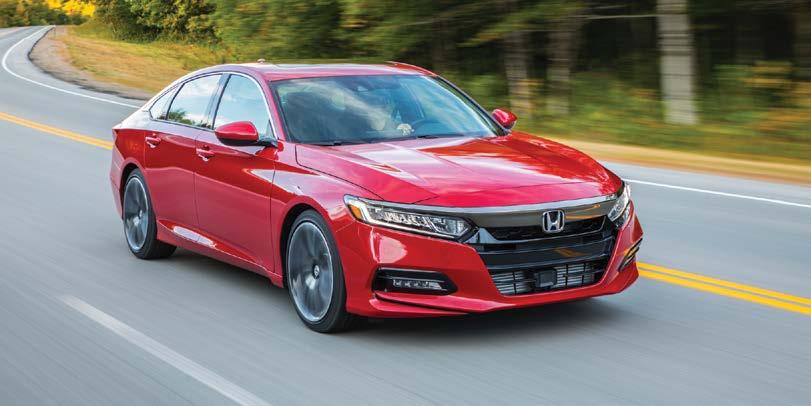

licensing agreement, which was “conditioned on the independent appraiser working on an assignment related to an insurance claim for the purpose of generating an estimate of vehicle damage.” CCC terminated its license with JA Appraisal on Oct. 26, 2018.
Tractable was charged with seven counts, including violation of the Computer Fraud and Abuse Act, violation of the Defend Trade Secrets Act of 2016, violation of the Illinois Trade Secrets Act of 2016, trademark infringement in violation of the Lanham Act, false designation of origin in violation of the Lanham Act, violation of the Illinois Uniform Deceptive Trade Practices Act, and common law fraud.
In September 2022, Tractable was granted a motion to dismiss two of those counts: violation of the Computer Fraud and Abuse Act and violation of the Illinois Uniform Deceptive Trade Practices Act.
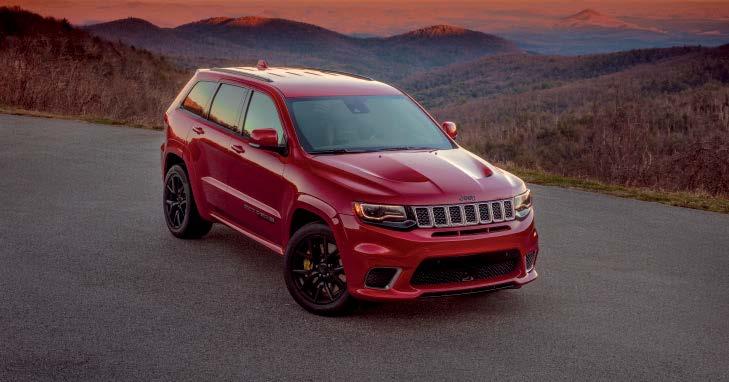




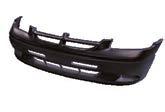

A recent report by Mitchell, an Enlyte company, showed a sharp increase in electric vehicle collision claims in the U.S. and Canada. A year-over-year analysis in “Plugged-In: EV Collision Insights” revealed a more than 40% surge in EV claims volume in 2023.
“2023 was a record year for electric vehicles,” said Ryan Mandell, Mitchell’s director of claims performance. “Not only did the frequency of EV collision claims rise to historic levels, but the U.S. also surpassed 1.2 million in new EV sales for the first time ever. As long as consumer adoption remains strong, EVs will continue to have a significant impact on the auto insurance industry – creating challenges for everything from underwriting to the delivery of proper and safe repairs.”
In addition to tracking 2023 claims volume, the Mitchell report compares EVs to automobiles with an internal combustion engine (ICE), highlighting differences in:
Claims severity: Last year, average severity in the U.S. for repairable EVs was $6,018 compared to $4,696
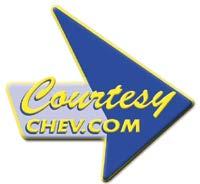
for ICE alternatives, a difference of $1,322. This represents a yearover-year decrease of 5% for EVs and an increase of 3% for ICE vehicles. In Canada, severity was $6,795 for EVs versus $5,122 for
“2023 was a record year for electric vehicles. Not only did the frequency of EV collision claims rise to historic levels, but the U.S. also surpassed 1.2 million in new EV sales for the first time ever.
As long as consumer adoption remains strong, EVs will continue to have a significant impact on the auto insurance industry – creating challenges for everything from underwriting to the delivery of proper and safe repairs.”
RYAN MANDELL MITCHELL’S DIRECTOR OF CLAIMS PERFORMANCE
ICE-powered options, jumping 8% from 2022 to 2023.
Vehicle complexity: For 2020 and newer collision-damaged automobiles, EV repairs were 50% more likely to include an operation associated with the sensors used in advanced driver assistance systems (ADAS) based on 2023 data than ICE vehicles – which also rely on ADAS.
Parts repairability: EVs are more likely to use parts made of lightweight materials, which can impact repairability. In 2023, on average only 12% of EV parts were repaired versus replaced. For ICEpowered options, the percentage of parts repaired was closer to 15%.
Material construction: EVs tend to be heavier than ICE automobiles due to the battery weight. That may be one reason why they had a higher frequency of air bag deployments (3.62%) than ICE options (2.45%) last year, adding to repair costs.
The publication also details the top North American regions and vehicle models associated with EV collision claims in 2023.
PPG is the only coatings company to earn a spot on Barron’s 100 Most Sustainable Companies list, ranking 43rd among the 1,000 largest publicly traded U.S. firms, recognizing PPG’s dedication to environmental, social and governance (ESG) excellence.
To make the list, Barron’s and Calvert Research and Management rank companies on their performance in five primary categories: shareholders, employees, customers, community and the planet, across 230 ESG performance indicators. Companies receive a score from zero to 100 based on their performance within each category. PPG received a final score of 70, placing it in the top 5% of all evaluated companies.
PPG’s journey toward sustainability includes being the first U.S.-based coatings company to have its 2030 greenhouse gas emissions reduction targets validated by the Science Based Targets initiative (SBTi). The company has also demonstrated a commitment to employee engagement, with Gallup noting a rate of engagement growth three times faster than that of comparable companies..

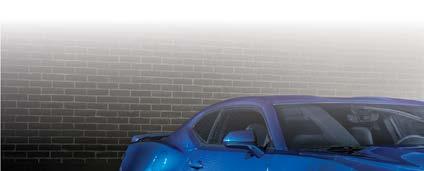



Car ADAS Solutions announced its ADAS Calibration Technician Certification Program has been qualified by I-CAR for Industry Training Alliance course credits, becoming one of only 20+ such alliance partners nationwide. Car ADAS Solutions’ program was developed in 2020 as part of the company’s ADAS solution for the industry.
“As an I-CAR sustaining partner, we are proud to have our program be recognized as an I-CAR Industry Training Alliance course,” said Greg Peeters , CEO of Car ADAS Solutions. “Utilizing I-CAR’s online courses as a prerequisite for our 80-hour hands-on training program allows us to focus on tactile learning, including calibration, programming, diagnostic and repair skills.”
Peeters said this enables Car ADAS Solutions to develop a solid technical foundation that team members continue to build on through the company’s technical support and quality assurance programs.
“We value our partnership with I-CAR, their leadership, and the great work they are doing for our industry,” he added.
“We stand for quality training, not just I-CAR training,” said John Van Alstyne , CEO and president of I-CAR. “As we proactively respond to the changes ADAS is driving in the collision repair industry, we embrace the opportunity to add our sustaining partner, Car ADAS Solutions, to the I-CAR Industry Training Alliance. This recognition allows technicians and shops that invest their resources into training to apply their achievement to the ultimate designations of I-CAR Platinum and Gold Class.”
The I-CAR Industry Training Alliance acknowledges the accomplishments of training through qualified providers. Technicians can train with I-CAR and alliance partners, receiving credits for approved courses, and facilitating their attainment of Platinum and Gold Class certifications. There is no additional cost to the learner or collision repair facility.
“Not only does this reduce redundant training, but it also greatly benefits individuals and businesses by simplifying the education process and improving overall industry efficiency while encouraging a continuous learning mindset for the ultimate benefit and safety of the consumer,” explained Van Alstyne. “It is a win-
win for the industry.”
To qualify, alliance partners must be I-CAR sustaining partners and hold accreditation from a recognized third-party accreditor, like International Accreditors for Continuing Education and Training (IACET), Accrediting Council for Continuing Education & Training (ACCET) or Learning and Performance Institute (LPI), or be an Automotive Service Excellence (ASE)-accredited trainer.
not required for shop’s Gold Class achievement; Gold Class does require a selection of foundational ADAS-related courses to help ensure shops are aware of repair requirements.
“Through partnerships with industry leaders like Car ADAS, technicians have more opportunities to stay updated on the latest technology developments, aligning with I-CAR’s ongoing efforts to attract and deploy skilled technician
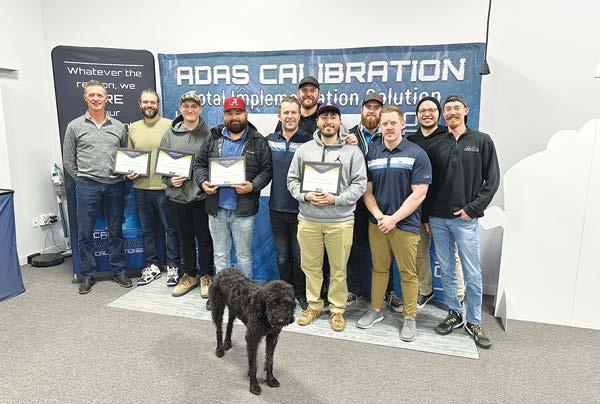
They must also offer courses that meet the nonprofit organization’s industry knowledge and skills protocol. The protocol sets educational knowledge and skills objectives necessary to perform complete, safe and quality repairs, as defined by the collision repair industry in cooperation with I-CAR.
“Through Industry Training Alliance partnerships with Car ADAS and other collaborators, I-CAR strives to improve and simplify access to education opportunities, ensuring technicians possess the knowledge and skills needed to adapt to industry changes,” said Van Alstyne.
In recognition of the increasing significance of ADAS expertise in the industry, I-CAR introduced a professional development path for ADAS technicians in 2022, offering Platinum recognition under the newly launched ADAS technician role. Van Alstyne said this acknowledged the growing importance of ADAS-related roles and provided a structured path for technicians to enhance their skills in this area, underscoring the need for specialized training in response to the prevalence of ADAS-equipped vehicles.
It is currently an “optional role”
talent throughout the industry,” he added.
For individuals striving to achieve Platinum as evidence of their expertise in the growing field of ADAS, Van Alstyne said having options for completing the capstone course requirement of a hands-on course is an advantage that collision repair professionals deserve.
“I-CAR champions technical education like Car ADAS Solutions provides that supports and complements the nonprofit organization’s vision that every person in the collision repair industry has the information, knowledge and skills required to perform complete, safe and quality repairs for the ultimate benefit of the consumer,” noted Van Alstyne.
He said addressing the demands of ADAS repairs, one of the fastest growing and most technically demanding aspects of the collision repair industry, underscores the importance of preparedness among repair shops nationwide.
“Shops prioritizing ADAS training and related competencies will be well-positioned to lead repair services in their local markets,” he said.


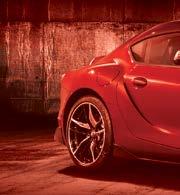




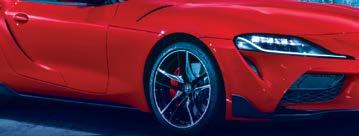



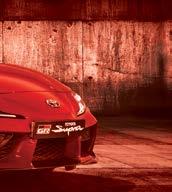



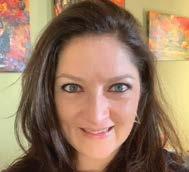
Thank you for allowing us to serve you! We also want to thank those that have discovered us more recently and are always grateful to ex tend our services to new customers, as well. We acknowledge your commitment to OEM parts and greatly appreciate the trust you put in our group of parts professionals every day.
16655 West Colfax Ave l Golden, CO 80401
Toll-Free 800-426-6032
Parts 303-590-7040 Fax 303-590-7112
Hours M-F 7am-6pm Sat 8am-4pm www.cdodge.com


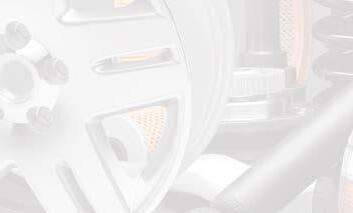
6025 Arapahoe Ave l Boulder, CO 80303
Parts 303-443-3883
Hours M-F 7:30am-6pm Sat 8am-4pm wholesaleparts@fisherauto.com

2033 South Wadsworth Blvd l Lakewood, CO 80227
Toll-Free 800-274-1127
Parts 303-986-2245 Fax 303-989-3490
Hours M-F 7am-6pm Sat 8am-4pm gmcollision@emichauto.com

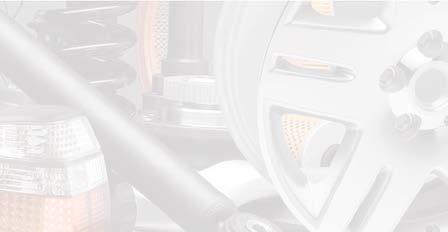

Parts 303-443-2919
Fax 303-442-1342
6025 Arapahoe Ave l Boulder, CO 80303
Parts 303-415-1528
Hours M-F 7:30am-6pm Sat 8am-4pm wholesaleparts@fisherauto.com

5995 Arapahoe Ave l Boulder, CO 80303
Hours M-F 7:30am-6pm Sat 8am-5pm parts@fla ronsimports.com
801 Denver West Colorado Mills Blvd. Lakewood, CO 80401
Parts Direct 303-222-2992
Hours M-F 7am-6pm Sat 8am-4pm lolpar ts@stevinsonauto.com Denise

5077 South Wadsworth Blvd l Li leton, CO 80123
Parts 303-904-7820
Fax 303-597-5969
Hours M-F 7am-6pm Sat 8am-4pm parts@peakkia.com
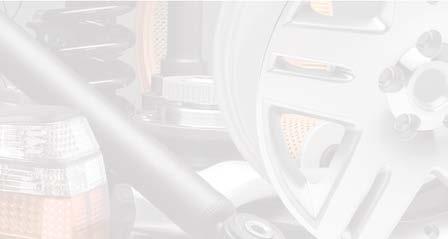
780 Denver West Colorado Mills Blvd. Lakewood, CO 80401
Parts Direct 855-529-5152
Hours M-F 7am-6pm Sat 8am-5pm Dadk isson@stevinsonauto.com
The average transaction price (ATP) for new vehicles in February 2024 was $47,244, only a 0.1% decrease from the revised January ATP, but a 2.2% decrease from February 2023 and a 5.4% drop from the peak observed in December 2022, according to data from Kelley Blue Book, a Cox Automotive company.
Despite these declines, the cost of new vehicles remains significantly higher than it was three years ago, with prices 14% above those in February 2021.
With new-vehicle inventory continuing to rise in the U.S., downward price pressure and higher incentives appear to be key drivers of the market’s current momentum. At the start of February, new-vehicle inventory in the U.S. stood near 2.61 million units, a 50% increase from one year earlier. Sales last month picked up from January and, with a seasonally adjusted annual rate (SAAR) of sales of 15.8 million, kept 2024 on track for the best new-vehicle sales year since 2019.
“While everyone may applaud that prices are coming down, even marginally for the moment, affordability is still challenging the market,” said Erin Keating, executive analyst for Cox Automotive. “Most shoppers have not seen their incomes increase as quickly as vehicle prices, so affording a new vehicle remains difficult. We should also note that despite rising inventory, which is good for consumers, the levels are muted, not alarming.”
New-vehicle incentives in February averaged 5.9% of transaction price, up from 5.7% in January and significantly higher than the average of 3.1% recorded in February one year ago. Incentives hit bottom in the fall of 2022 – 2.1% of ATP in September of that year – and, along with inventory, have increased steadily since.
Luxury vehicle incentives continue to be more generous than non-luxury. In February, incentives in the luxury
market averaged 6.1% of ATP, down from January but nearly twice the level seen one year ago. The luxury ATP in February was $61,424, an increase from January. Non-luxury vehicle incentives averaged 5.9% in February, an increase from 5.5% in January. Non-luxury vehicle ATPs last month were $44,052, generally unchanged from January, when prices were estimated at $44,062.
Incentive packages continue to
“While everyone may applaud that prices are coming down, even marginally for the moment, affordability is still challenging the market,”
ERIN KEATING
EXECUTIVE ANALYST FOR COX AUTOMOTIVE
be highest with Infiniti, Audi, Mini and Polestar, all over 10% of average transaction price, according to Kelley Blue Book estimates. On the other end of the scale, Lexus, Toyota, Porsche and Land Rover had some of the lowest incentives last month, all 3.0% or lower. Incentives at Land Rover averaged only 2.0% of ATP, according to the Kelley Blue Book estimates. Still, the average price paid for a new Land Rover last month was over $102,000.
In February, of the roughly 275 different models available in the U.S. market, only nine had transaction prices below $25,000 and only two transacted for less than $20,000. The Kia Rio and Mitsubishi Mirage were the two most affordable vehicles in the U.S. last month, and both are being dropped from the market.
While vehicle price increases have slowed in the past year, the industry’s vehicle mix and shift toward luxury has tilted the U.S. auto market away from affordability. In February 2021
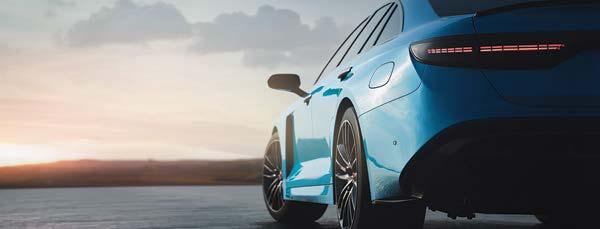
— three years ago — there were 29 vehicles with transaction prices routinely below $25,000, including eight different models transacting below $20,000.
The market is in a new place now. Last month, the top of the market was more crowded than ever: Among mainstream brands, 30 different vehicles posted average transaction prices of more than $100,000, with the Mercedes-Benz G-Class on top with an ATP of $203,154. In fact, the February Kelley Blue Book report shows significantly more vehicles in the U.S. transact at prices above $75,000 (sales of more than 81,000) than below $25,000 (nearly 52,000).
According to the latest Cox Automotive/Moody Analytics Vehicle Affordability Index, new-vehicle affordability has improved in recent months but remains far worse today than it was in 2019.
Kelley Blue Book estimates exclude exotics from brands including Ferrari, Lamborghini and Rolls Royce.
According to newly revised electric vehicle (EV) transaction price data, the average price paid for an electric vehicle in February was $52,314,
down from a revised $54,863 in January, according to Cox Automotive and Kelley Blue Book estimates. EV transaction prices in February were lower year over year by 12.8%, an accelerating decline compared to January when prices were lower year over year by 11.6%.
“Our research continues to show that price remains a significant barrier for consumer adoption,” said Stephanie Valdez Streaty, director of Industry Insights at Cox Automotive. “While the higher inventory levels and increased competition continue to drive down the price premium of EVs, it’s important to acknowledge that EVs remain priced above mainstream non-luxury vehicles by nearly 19%.”
The market’s general EV price decline has been led in part by the two most popular EVs in the U.S. — the Tesla Model 3 and Model Y. Transaction prices for the Model Y last month, estimated at $49,363, were the lowest on record and were lower versus February 2023 by 16.2%. Model 3 transaction prices last month, at $43,614, were lower year over year by 12% and near the lowest level on record. High incentives and discounts on most models also continue to play a major role in lower EV prices.








The U.S. House Science, Space & Technology Committee’s Investigation and Oversight Subcommittee held a hearing Feb. 29 on the growing concern over electric vehicle fires, revealing the distinct and formidable challenges they present compared to traditional vehicle fires. The discussion emphasized the necessity for advanced research and specialized training for emergency responders to effectively tackle these incidents.
Subcommittee Chairman U.S. Rep. Jay Obernolte, R-CA, noted in his opening remarks that, “as the presence of these vehicles continues to grow on our roads, so does the threat and danger of the fires that they can produce. EV fires are fundamentally different from traditional internal combustion engine fires…EV fires burn at temperatures far hotter than regular vehicle fires. They produce copious amounts of toxic chemical gases.”
He added that, “when an EV either experiences an incident due to a manufacturing defect or is damaged in an accident, the battery that powers that vehicle often has a remaining charge,” which “provides
the fuel to keep a battery burning for hours, regardless of how much water is poured on it in an attempt to extinguish it. Unfortunately, the federal government has been deficient in providing guidance and resources…”
During the hearing, lawmakers explored potential solutions and preventative measures to mitigate the risks associated with EV fires.
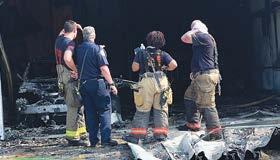
“I believe there are tremendous opportunities for scientific research to reduce these risks by advancing our understanding of why lithium-ion batteries react in these ways, how the design of lithium-ion batteries can be improved to lessen the risk of fires, and what innovative tools and techniques can be developed,” said
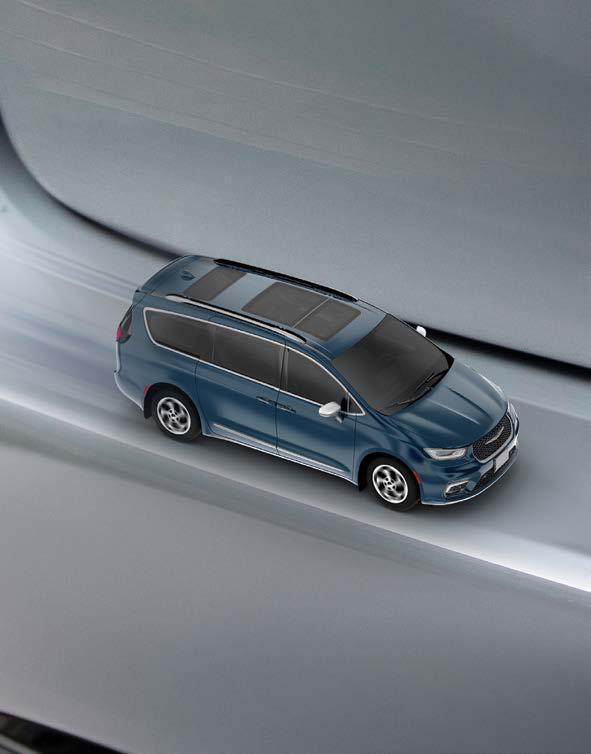
Ranking Member U.S. Rep. Valerie Foushee, D-NC.
Full committee Ranking Member U.S. Rep. Zoe Lofgren, D-CA, added, “as with any emerging technology, we need to make sure we understand and adapt to the unique challenges that arise from its widespread adoption… over the decades, we’ve developed best practices to extinguish internal combustion fires as safely and quickly as possible. Now, we need to give that level of attention and support to research into electric vehicles.”
Testimonies from experts like Dan Munsey, fire chief for San Bernardino County in California, highlighted the practical implications of EV fires. Munsey estimated a substantial $3 billion would be required to train all U.S. firefighters to effectively handle EV-related emergencies.
Dr. Judy Jevarajan introduced the idea of developing methods for remote access to vehicle data to identify and address potential risks, while also acknowledging the cybersecurity concerns associated with such solutions.
Automotive Service Association Board of Directors Chairman Scott Benavidez thanked the committee
for holding a hearing on this important topic.
“Independent auto repairers simultaneously constitute one of the groups most adversely impacted by EV fires, yet also one of the groups in the best position to help address them,” Benavidez said. “There are numerous instances in which damaged EVs have caught fire and caused damage to the repair facility at which it was being held, as well as other vehicles in its vicinity. Due to these risks, repair shops are now encouraged to allocate space in their facility where they can isolate EVs for safe storage.
“At the same time, repairers possess high baseline expertise in automotive issues, which make us ideal partners for first responders trying to prevent or extinguish EV fires,” Benavidez continued. “ASA calls on the federal government to coordinate with the independent automotive repair industry in its efforts to address the growing concerns surrounding fires caused by EVs. Assuring that repair shops receive proper training to handle EVs safely should be a top priority for policymakers.”
SOUTH POINTE DODGE CHRYSLER JEEP RAM 9240 S. Memorial Drive Tulsa, OK 74133 (918) 388-0779 or (800) 722-7686
TEXAS
AUTONATION CHRYSLER DODGE JEEP RAM OF NORTH RICHLAND HILLS 7740 NE Loop 820 North Richland Hills, TX 76180 (800) 888-2079
COVERT CHRYSLER DODGE JEEP RAM 8107 Research Blvd. Austin, TX 78758 (855) 503-0100
PATTERSON CHRYSLER DODGE JEEP RAM 3120 SSW Loop 323 Tyler, TX 75701 (903) 561-2975
UTAH
JEEP DODGE
55 W. I-240 Serv. Road
Oklahoma City, OK 73139 (866) 763-6343 or (405) 634-7339
LARRY H. MILLER CHRYSLER JEEP DODGE RAM 10905 S. Auto Mall Drive
Sandy, UT 84070 (800) 453-6456 or (801) 553-5960 Fax: (801) 553-5968
Abra announced Wayne Kelly has made a return to the network where he began his career. Now serving as the vice president of operations, Kelly’s homecoming is timed with Abra’s 40th anniversary.
When Kelly started out as a technician at a young age, in Minnesota, Abra was a fledgling brand. As it grew – and began franchising in 1987 – Kelly grew with them, running locations, managing operations and recruiting new franchise owners. A member of the original Abra family, he took great pride seeing Abra evolve into a powerful brand in the collision repair industry.
Under the larger umbrella of Driven Brands since 2019, Abra has benefited from enhanced resources, operational expertise and educational opportunities. In his new position, Kelly will capitalize on these advantages, focusing on operational improvements, leadership development and strategic expansion. The introduction of the Driven Brands EPG (EDGE Performance Groups) is one initiative aimed at bolstering Abra owners.
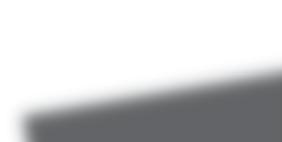

The U.S. Department of Transportation (DOT) opened applications for a funding initiative aimed at bolstering roadway safety across the nation. A total of $1.3 billion is being offered to cities, towns, counties, Tribal governments and Metropolitan Planning Organizations (MPOs) through the Safe Streets and Roads for All (SS4A) grant program.
This initiative, a key component of President Joe Biden’s Bipartisan Infrastructure Law, is designed to support local projects geared towards reducing the number of deaths and serious injuries occurring on the nation’s highways, streets and roads.
“Every community knows some intersection or stretch of road that is dangerous to approach – now we have an opportunity to make them safer,” said U.S. Transportation Secretary Pete Buttigieg. “The Biden-Harris administration is proud to make over $1.2 billion available for projects that can save lives on our roads, from highway redesigns to protected bike lanes, and we invite communities of


every size to apply.”
This announcement comes on the heels of last year’s allocation of $1.7 billion in grants under SS4A, which impacted roadway safety for approximately 70% of the U.S. population, addressing more than 60% of traffic fatalities recorded between 2017 and 2021. With more than $1 billion available this year, the DOT is encouraging communities, especially those that have not previously applied, to take advantage of this opportunity. The program is placing a special emphasis on communities with higher fatality rates, offering them additional award considerations.
“Every community knows some intersection or stretch of road that is dangerous to approach – now we have an opportunity to make them safer,”
PETE BUTTIGIEG U.S. TRANSPORTATION SECRETARY
supports the development of road safety action plans but also facilitates the implementation of interventions aimed at improving unsafe roadway corridors. This includes experimenting with safety features like separated bicycle lanes and curb extensions at intersections.
The application process has been designed to increase accessibility, especially for smaller communities, Tribal governments and newcomers to federal funding. This includes a simplified application process, multiple deadlines, a pre-application review to determine eligibility for implementation funding, and specific guidance for using Tribal Transportation Program funds as a local match.
Applications for implementation grants are due May 16. Planning and demonstration grant applicants will have three opportunities to apply — the deadlines are April 4, May 16 and Aug. 29.






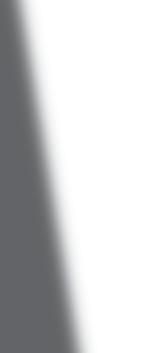
The SS4A initiative not only
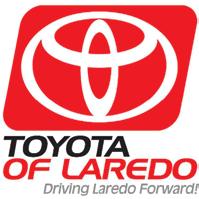
For further information, visit www.transportation.gov/grants/ SS4A.



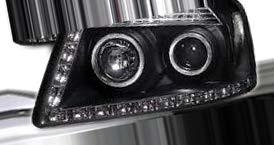



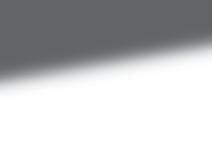





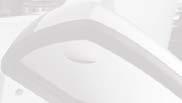
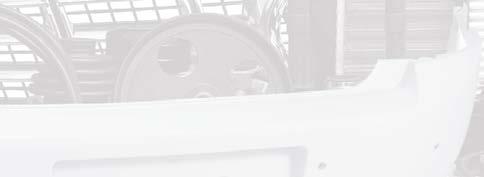
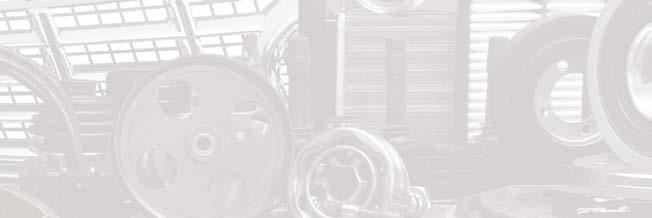


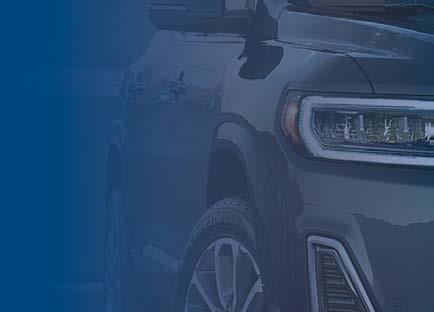

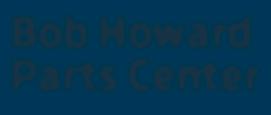
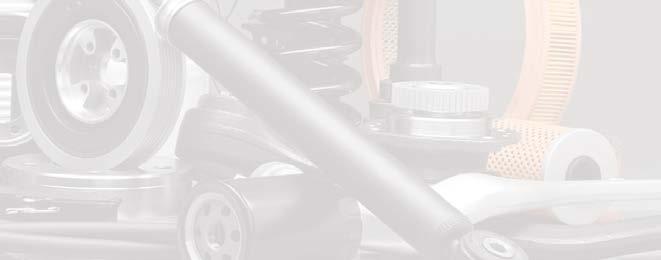

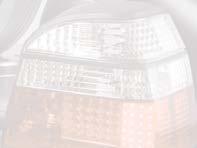
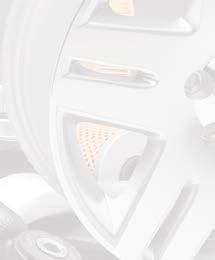
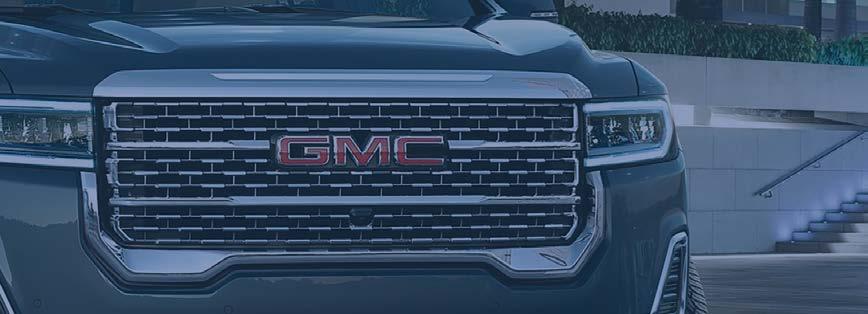


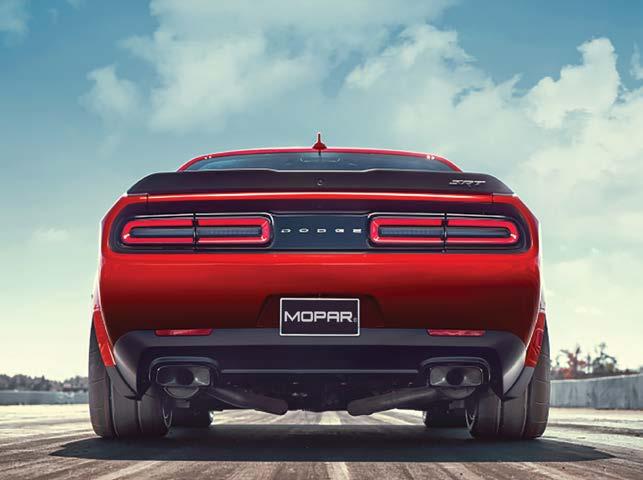

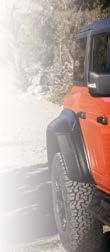



The Women’s Industry Network (WIN) announced a full slate of in-depth professional collision repair industry programing, inspiring keynote speakers, and networking and mentoring opportunities 2024 Annual Conference, themed Dream Out Loud, set for May 6-8 at the Hyatt Regency Newport Beach, CA, offering both inperson and virtual attendance opportunities.
The conference will celebrate women in the industry by raising funds for collision repair student scholarships, recognizing scholarship winners, taking part in community giveback, and honoring this year’s Most Influential Women recipients.
WIN is excited to announce an extensive curriculum during the event, as this year’s conference offers multiple timely topics presented by several prominent speakers.
To see the agenda and register, visit thewomensindustrynetwork. site-ym.com/page/Conference
Hyundai Motor Co., which owns the Hyundai, Genesis and Kia brands, and Kia Corp. have agreed to a settlement potentially worth up to $145 million to resolve allegations that certain Kia vehicles were manufactured with design flaws making them easy targets for theft and damage.
The resolution comes after a series of class action lawsuits claimed the vehicles lacked essential engine immobilizers, rendering them susceptible to thefts, especially those propagated via social media platforms like TikTok.
The settlement encompasses a wide range of Kia models purchased or leased between 2011 and 2022 in the U.S. and its territories, including Puerto Rico, the U.S. Virgin Islands and Guam. The agreement does not preclude claims related to personal injury, death or subrogation by licensed insurers, maintaining the rights of individuals affected by these issues beyond the scope of theft and damage.
Under the terms of the settlement, eligible class members,
AkzoNobel announced the nationwide availability of the Modern Classikk by Kindig custom automotive paint line at select Advance Auto Parts and Carquest Auto Parts stores. This collaboration brings together AkzoNobel’s advanced Sikkens base coat technology with the design expertise of Dave Kindig from Kindig-It Design and the popular television show, “Bitchin’ Rides.”
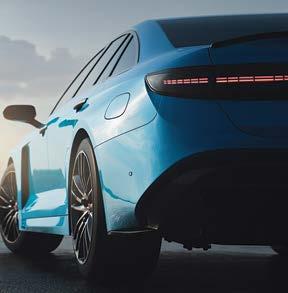
Currently, nearly 400 Advance and Carquest stores offer the Modern Classikk paint line, with additional locations being added regularly. Customers can check the availability of the product at their nearest store by visiting Modern Classikk’s website or contacting their local Advance or Carquest store team. The paint products are also accessible online at ModernClassikk.com.
Each store will provide literature and paint chip fan decks. Once customers select their preferred colors, store personnel will place an order, and AkzoNobel will deliver the customized paint order to the nearby Advance or Carquest store for convenient pickup.
specifically owners of certain models ranging from the 20112022 Kia Forte to the 2020-2022 Kia Soul, can benefit from various forms of compensation. These
may receive up to $300 in reimbursement per vehicle for antitheft measures. The settlement outlines compensation for out-ofpocket and uncompensated losses
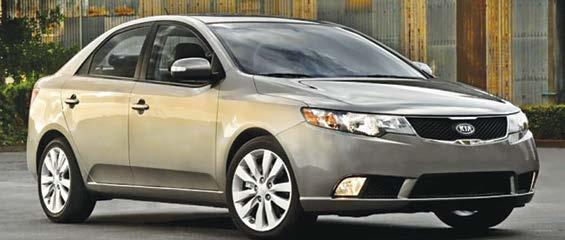
include a free software upgrade designed to prevent the vehicles from starting without the key present -- a response to the method of theft popularized on social media. Additionally, reimbursements for the purchase of steering wheel locks or similar anti-theft devices, as well as for the installation of glass-breakage alarms or other aftermarket anti-theft systems, are available to those impacted.
For vehicles ineligible for the software upgrade, owners
resulting from theft or attempted theft, including up to 60% of the vehicle’s value for total loss and up to $3,375 or 33% for damage incurred.
The settlement establishes a fund ranging from $80 million to $145 million to cover these claims. The deadline to opt out of or object to the settlement is May 3, 2024. The final fairness hearing in the Kia theft settlement is July 15, 2024. The deadline to submit a claim is Jan. 11, 2025.
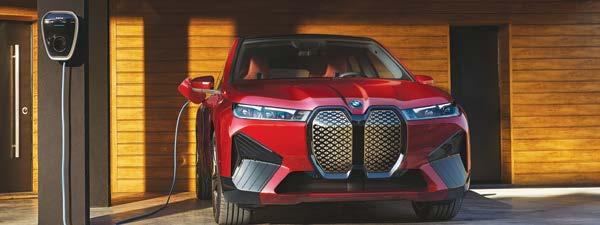

Apple has officially stopped development of its electric car, a project that began a decade ago and aimed to revolutionize the automotive industry.
The decision comes amid broader economic challenges and a shift in consumer demand affecting the electric vehicle (EV) market.
A decade after initiating Project Titan, its ambitious endeavor to enter the automotive sector, Apple cancelled the project, part of a realignment in response to the current economic climate and industry trends. Shares of Apple saw a slight increase of 0.7% in afternoon trading Feb. 27, after news of the project’s demise was reported, recovering from earlier losses.
The cessation of the electric car project has led to the reassignment of several team members to Apple’s artificial intelligence division, as reported by Bloomberg News.
Apple declined to comment.
Rising interest rates aimed at
curbing inflation has dampened consumer enthusiasm for high-priced electric vehicles, prompting not only Apple but also established automakers to reassess their strategies. Companies like Tesla have scaled back investments, with a growing focus on hybrid models over fully electric vehicles.
The journey of Project Titan was marked by ambition as well as challenges. Initially sparked by the Silicon Valley craze for self-driving technology, Apple aimed to redefine transportation. Reuters reported in 2020 the possibility of an Apple vehicle launch by 2024 or 2025. However, the path was fraught with obstacles, including a major workforce reduction in 2019. As recently as January, Bloomberg reported Apple was still planning to launch its own EV in 2028, but one featuring “limited autonomous driving,” instead of a fully driverless vehicle.
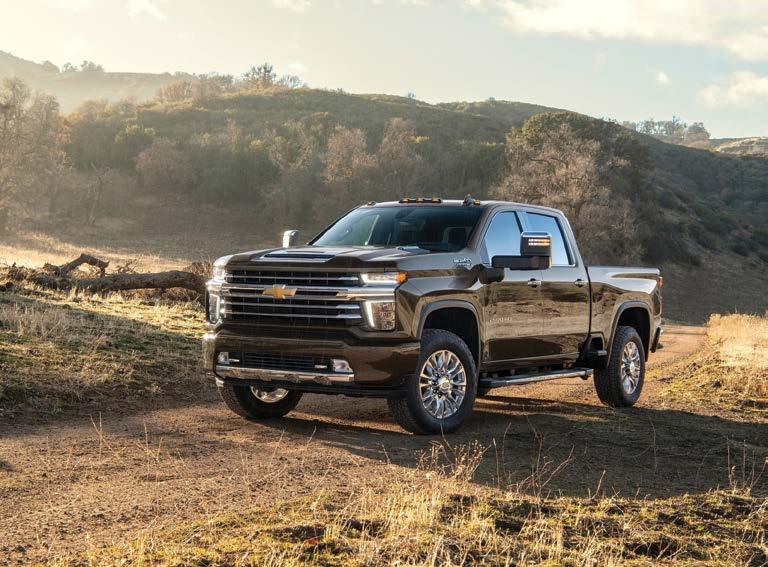
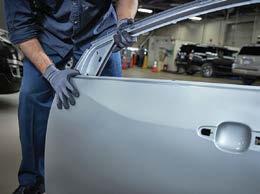

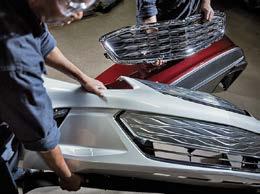
February saw a resurgence in new vehicle inventory, from 2.54 million units in January to 2.69 million units, coupled with a noteworthy decrease in pricing, according to data from Cloud Theory, a provider of real-time automotive data insights. The surge also surpassed the December figures of 2.64 million.
Following a temporary decline in January, new vehicles sold also saw a strong recovery in February, reaching 1.06 million, a 13% month-over-month increase. Cloud Theory anticipates this upward trend to continue, forecasting a movement of 1.10 million vehicles in March, matching the peak levels observed over the past year.
While inventory and movement are on the rise, vehicle pricing is experiencing a downward trajectory. For the first time in more than a year, prices have dipped below the $50,000 mark, although the rate of decline has decelerated over the recent months.
“As expected, the new vehicle market shook off the January declines that are typically seen as a new year kicks off,” said Rick Wainschel, vice president, data science and analytics at Cloud Theory. “The growth in both supply and demand is a welcome sign, though the former is still increasing faster than the latter over the long haul, which points to a selling environment that will continue to be challenging.”
Cloud Theory’s proprietary Inventory Efficiency Index reveals a stable monthover-month scenario, with Toyota maintaining its lead, followed by Honda and Cadillac. General Motors, with Chevrolet rising to seventh and GMC to eighth, demonstrates efficiency across its diverse portfolio.
“GM’s performance is a testament to an OEM’s ability to achieve efficiency, regardless of its size,” said Ron Boe , chief revenue officer at Cloud Theory.


In a lawsuit filed in Washington State, USAA is facing accusations of systematically denying medical payments to its members involved in auto accidents, reported the San Antonio Express-News.
USAA relies on a third-party contractor, Auto Injury Solutions Inc., to assess which medical bills should be paid. This process, according to USAA, aims to filter out excessive, unrelated and duplicate charges, thereby keeping coverage costs affordable for its members. However, critics argue this method, which heavily involves automated computer processes, undermines the insurer’s duty to conduct thorough and independent investigations into claims.
The lawsuit, filed by two women insured under different USAA subsidiaries, challenges the insurer’s delegation of claim evaluations to the thirdparty contractor. They argue this approach leads to unjust reductions or outright denials
of payments for necessary health care expenses, based on reviews they deem a “sham.” The plaintiffs are seeking to make the lawsuit, which has been moved to a federal court in Washington, a class action lawsuit.
USAA insists its procedures are designed to protect members by identifying unwarranted charges, thus preserving insurance limits for legitimate medical expenses. Critics, including attorneys for the plaintiffs and consumer advocacy groups, argue such practices prioritize cost savings over patient care, often leaving insured members to bear the brunt of unpaid medical bills.
This is not the first time USAA has faced such allegations. Over the past two decades, the insurer has been involved in numerous lawsuits accusing it of similar practices. While many of these cases have been dismissed, arbitrated or settled, the recurring theme of denied claims has attracted regulatory attention and public scrutiny.

Audi Part Professionals are experts
The U.S. government’s recent shift to offer immediate electric vehicle tax credits at the point of sale has led to a $135 million disbursement to auto dealers within just over a month, Reuters reported.
In previous years, U.S. auto buyers could only benefit from the $7,500 new EV credit or $4,000 used EV credit at tax filing time the following year.
The new policy, which went into effect Jan. 1, allows consumers to transfer the credits directly to car dealers at the time of sale, effectively reducing the purchase price of the vehicle on the spot. The IRS has processed advance payment requests for 17,500 new EVs and 2,000 used vehicles, with more than 11,000 U.S. auto dealers registered for the program.
“One month into implementation of this provision, there is strong demand for this new upfront discount, which will continue momentum in growing this industry in the United States,”
ARIZONA
Audi Arrowhead
Peoria
877.358.8165
623.561.4750
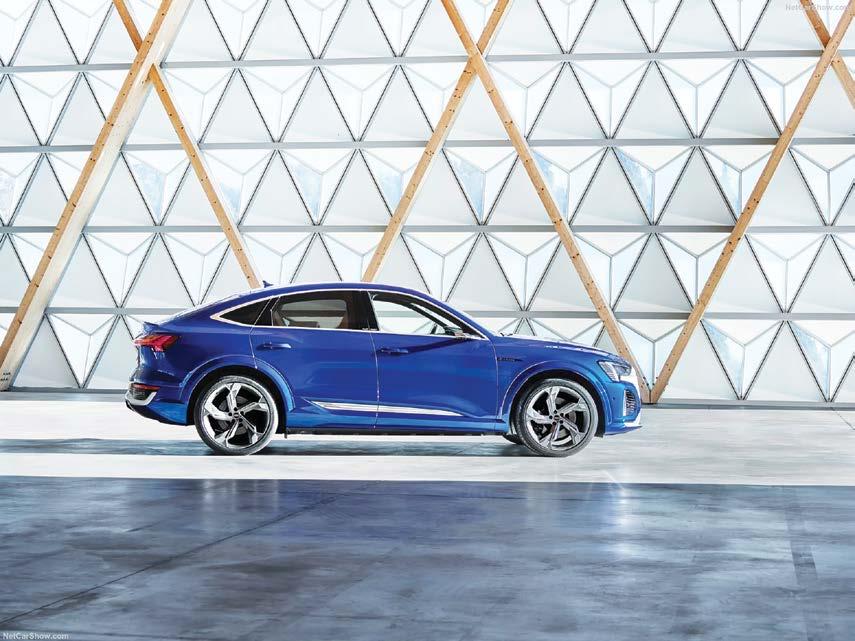
623.561.4703 Fax
M-F 7am-6pm Sat 7am-5pm mendozaa4@autonation.com
Audi Gilbert
Gilbert 877.412.2925
480.855.8101
480.346.9201 Fax
M-F 7am-6pm Sat 7am-1pm audiparts@audigilbert.com www.audigilbert.com
TEXAS
Audi Dallas
Dallas 866.327.2318
214.438.0894 Fax
M-F 7am-7pm Sat 9am-5pm larry.elliott@audidallas.com www.audidallas.com
Deputy Treasury Secretary Wally Adeyemo said in a statement.
However, the transition has not been without its challenges. In January, the eligibility for tax credits was revised for several EVs due to new battery sourcing rules, impacting popular models like the Nissan Leaf, some Tesla Model 3s, Chevrolet Blazer EV, Cadillac LYRIQ, Ford Mustang Mach-E and Ford E-Transit. These guidelines, issued by the Treasury in December, aim to decrease the U.S. EV supply chain’s reliance on China, reducing the number of EV models qualifying for tax credits from 43 to 19 at the start of the year.
The August 2022 Inflation Reduction Act law introduced these changes to the EV tax credit system, mandating vehicles must be assembled in North America to qualify and setting income and vehicle price restrictions to ensure the credits benefit a broader range of consumers while promoting domestic production.
Audi Fort Worth
Dallas/Fort Worth
817.632.6709
817.632.6747 Fax
M-F 7:30am-6pm Sat 8am-3pm sstallcup@audifortworth.com oreyna@audifortworth.com www.audifortworth.com
Audi Grapevine
Dallas/Fort Worth 877.424.AUDI (2834) 817.553.2252/2258
M-F 7am-6pm Sat 8am-5pm rgarcia@audigrapevine.com gacastro@audigrapevine.com www.audigrapevine.com
Audi Plano
Dallas/Fort Worth
214.452.3830
214.452.3855 Fax
M-F 7am-7pm Sat 8am-5pm gualotunao@autonation.com www.audiplano.com

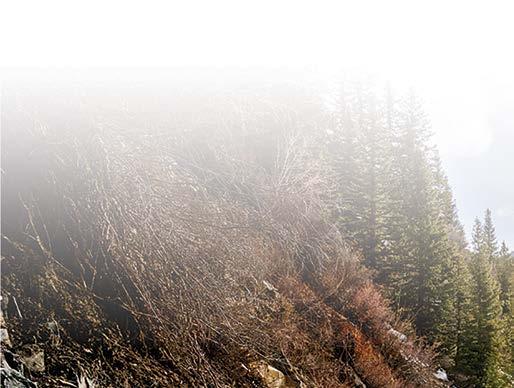
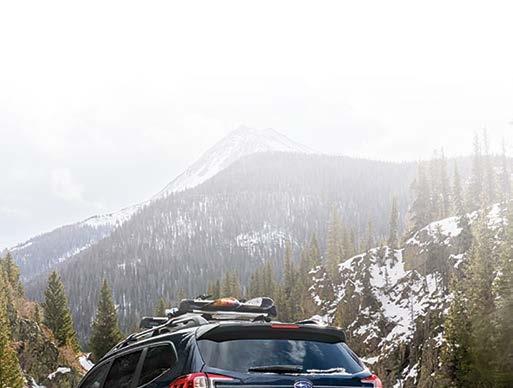

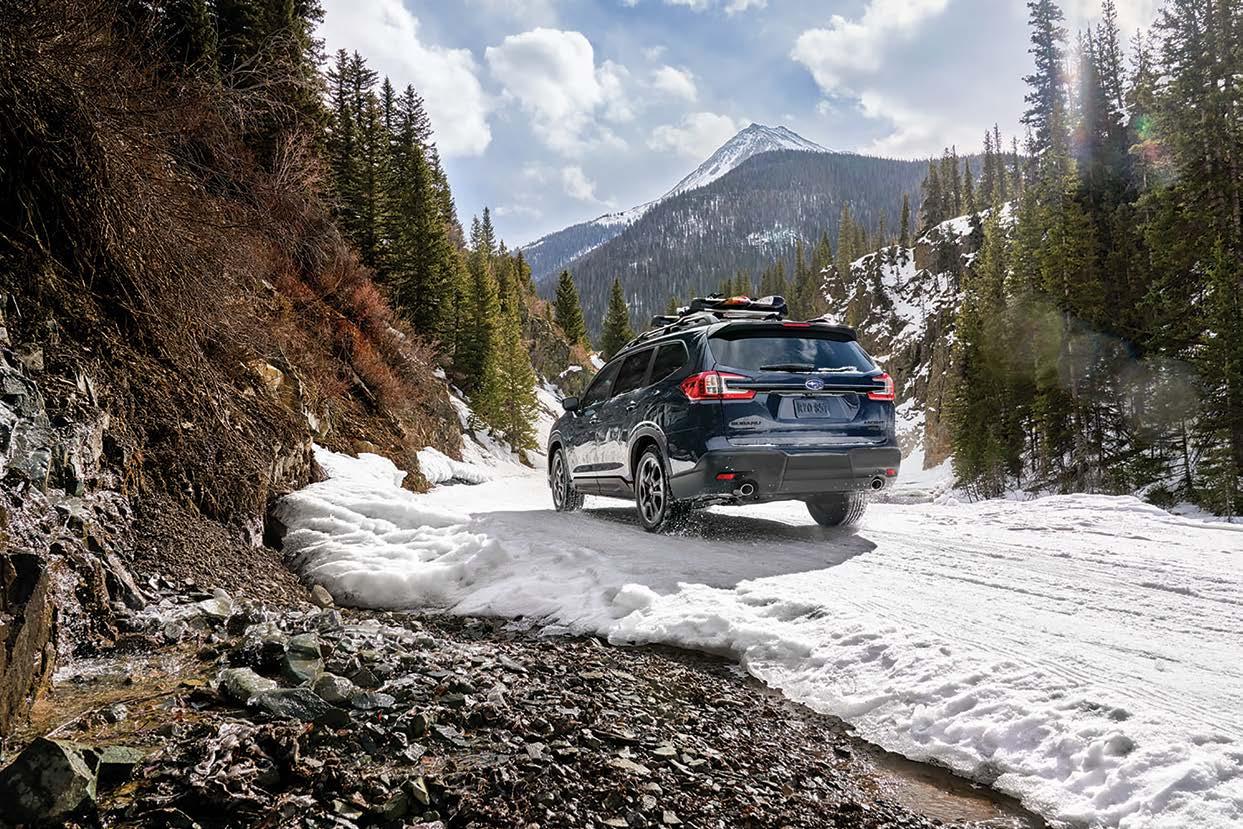


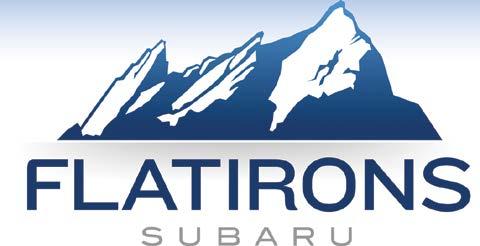
Mitchell, an Enlyte company, and Classic Collision, LLC, one of the top four largest MSOs in the nation, on Feb. 29 announced they have signed a multi-year agreement. The enterprise licensing agreement gives all current and future Classic Collision locations access to Mitchell Cloud Estimating with Integrated Repair Procedures as well as the company’s Paintless Dent Repair (PDR) calculator.
A Mitchell customer since 2013, Classic Collision already has nearly 100 repair facilities using Mitchell Cloud Estimating. The remaining locations will be onboarded by the end of Q1 2024.
“Classic Collision has experienced exponential growth over the last few years, and we are thrilled to support the organization’s ongoing expansion,” said Debbie Day, executive vice president and general manager of Mitchell’s Auto Physical Damage division. “With the aid of Mitchell’s innovative technology, Classic Collision can take advantage of new tools designed to help return customers to the road safely while continuing

to grow its U.S. footprint.”
Released in 2017, Mitchell Cloud Estimating allows repairers to write comprehensive appraisals of collision-damaged passenger, commercial and specialty vehicles. They can then upload photos, submit estimates and communicate with insurance partners and customers using the Mitchell platform.
Created to significantly reduce time spent on research, Mitchell Cloud Estimating features Integrated Repair Procedures that surface OEM information critical to restoring the vehicle to preaccident condition as the estimate is written. With the company’s PDR calculator, estimators can also quickly determine the cost of minor dents, dings and body creases and add them to the appraisal.
Classic Collision is the second U.S. MSO to sign an enterprise license agreement for Mitchell Cloud Estimating. Additional information about the solution is available at www.mitchell.com/ solutions/auto-physical-damage/ estimating/cloud.
In a year when Americans hit the road more than the last, the National Safety Council (NSC) has reported a counterintuitive trend: a significant decrease in motor-vehicle deaths in 2023. Despite a 2.1% increase in mileage from 2022, fatalities dropped by 4%, totaling 44,450 deaths in 2023, down from 46,270 the previous year. This decline in deaths comes alongside a decrease in the estimated mileage death rate, which fell to 1.36 deaths per 100 million vehicle miles traveled, marking a 6.2% decrease from 2022 and a notable 9.3% drop compared to 2021.
The National Center for Health Statistics (NCHS) reports the official mortality estimates for the U.S. and is used as a comparison to judge the accuracy of NSC preliminary estimates. The publication of NCHS final mortality estimates generally lags about one year or more. The most recent NCHS final estimate shows 46,980 deaths occurring in 2021. This compares to the NSC initial estimate of 46,020, with a difference of 2%. State-specific data reveal a

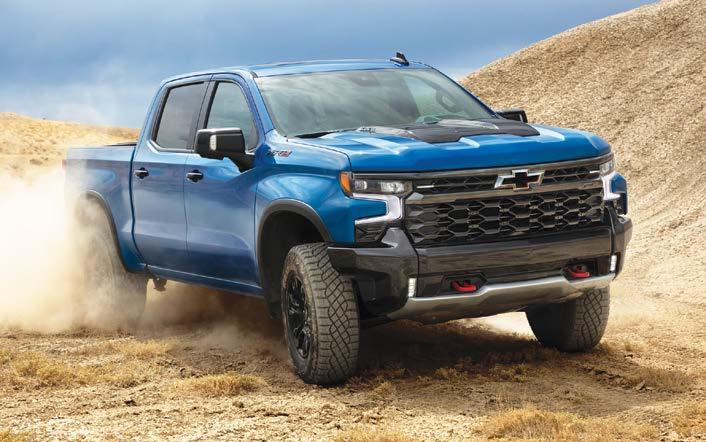
contrast across the country. Twelve states experienced a decrease in motor-vehicle deaths by 10% or more, with Alaska leading the way at a 31% reduction. Meanwhile, seven states and Washington, D.C., saw increases of 10% or more, with D.C. witnessing a 42% surge in fatalities. The NSC’s methodology for calculating these estimates involves collecting data from all 50 states and D.C., relying on state Department of Transportation offices and data reporters who also contribute to the National Highway Traffic Safety Administration s Fatality Analysis Reporting System (FARS). This comprehensive approach ensures the NSC’s estimates are both timely and reflective of trends across the nation.
The reduction in motor-vehicle deaths, despite an increase in overall mileage, may reflect the impact of safer vehicle technologies, improved road safety measures, or changes in driver behavior. However, the increase in fatalities in certain states highlights the ongoing challenges in achieving nationwide road safety improvements.





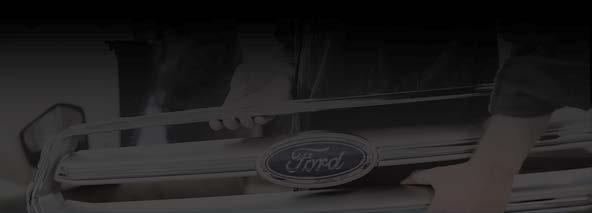

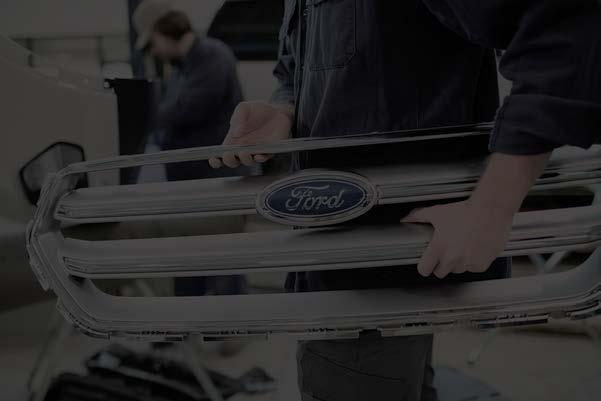
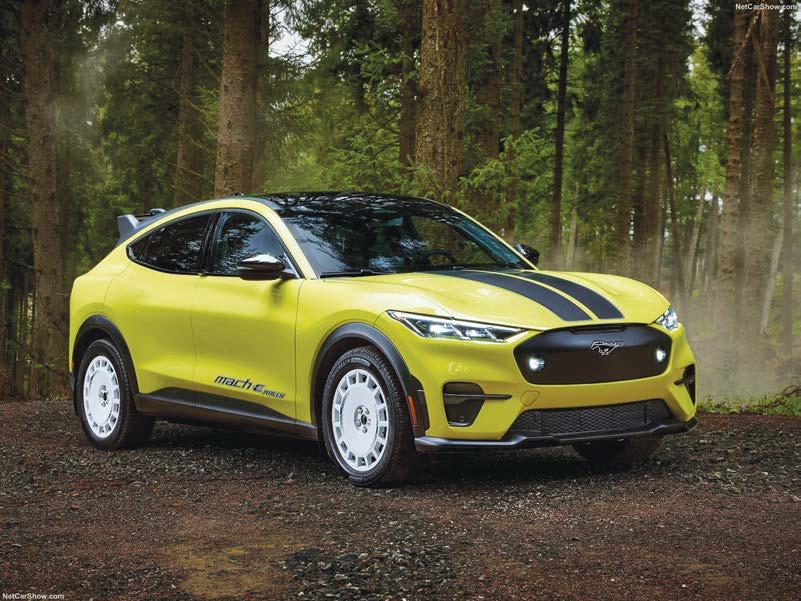
The only parts that perform as great as they look. Give your customers the power to drive a vehicle you’re both proud of. These trusted Ford dealers below have the OEM parts you need. Place your order today.
Earnhardt Ford
CHANDLER
480-763-6233
480-783-4655 Fax www.earnhardtford.com
Larry H. Miller Ford Mesa
MESA
480-530-9720
480-530-9708 Fax
Hours: M-F 7-7; Sat 7-4 butch.lemen@lhmauto.com
Peoria Ford
PEORIA
623-977-9612
623-977-1668 Fax
Hours: M-F 7-6; Sat 7-5 rmadison@vtaig.com
Larry H. Miller Ford Lakewood
LAKEWOOD
800-332-3722
720-481-2460
303-991-4134 Fax
Hours: M-F 7-8; Sat 8-4 steven.albertson@lhmauto.com
Schomp Ford
DENVER
800-876-0977
303-343-1396
303-361-9278 Fax
Hours: M-F 7:30-5:30; Sat 7:30-3 fordparts@schomp.com
Bob Howard Parts
OKLAHOMA CITY
800-888-3827
800-946-7278 Fax
Hours: M-F 8am - 5:30pm sales@bhpdc.com www.bhpdc.com
United Ford PDC
TULSA
WHOLESALE DIRECT
800-800-9001
800-676-8509 Fax adodson@penskeautomotive.com www.fordparts.com/unitedford www.unitedford.com
Five Star Ford
NORTH RICHLAND HILLS
WHOLESALE DIRECT
800-895-7827
817-577-2781
817-577-0558 Fax www.5starford.com
Helfman Ford
STAFFORD
281-240-7628
800-634-8008
281-240-0642 Fax parts@helfmanford.com www.fordparts.com/helfman
Mac Haik Ford, Lincoln GEORGETOWN/AUSTIN 877-969-3055
512-930-6260
281-598-4370 Fax parts@machaikfl.com
Tommie Vaughn Motors
HOUSTON
800-944-4415
713-869-4755
713-293-4309 Fax
www.tommievaughnford.com
Ford Motor Co. is imposing a training requirement on its dealership technicians, aimed at enhancing the quality of field service actions (FSA), including crucial air bag repairs, to rectify systemic issues that have surfaced, the Detroit Free Press reported.
Ford’s decision came after it determined only 46% of its repair technicians have completed the necessary training to carry out FSAs effectively. These actions, encompassing recalls and customer satisfaction programs, are vital for maintaining vehicle integrity and safety.
In a letter dated Jan. 29, Ford told dealerships they have until April 1 to get the other 54% of technicians up to speed on the training, which includes a new course on supplemental
restraints, covering air bags and seat belt pretensioners.
A recent investigation by the Detroit Free Press uncovered lapses in air bag repair procedures. Ford is currently reevaluating the work on 41,600 vehicles whose air bags were replaced by technicians, dubbed “rogue” by a Ford spokesperson, who failed to complete repairs adequately despite claiming to have done so. Another 232,000 Rangers have been recalled in which replacement air bags may not have been installed correctly because technicians failed to follow instructions.
This training mandate also addresses concerns raised by a whistleblower, who spoke up about an issue with repair fraud and a dilution of standards within Ford’s repair processes.
www.autobodynews.com
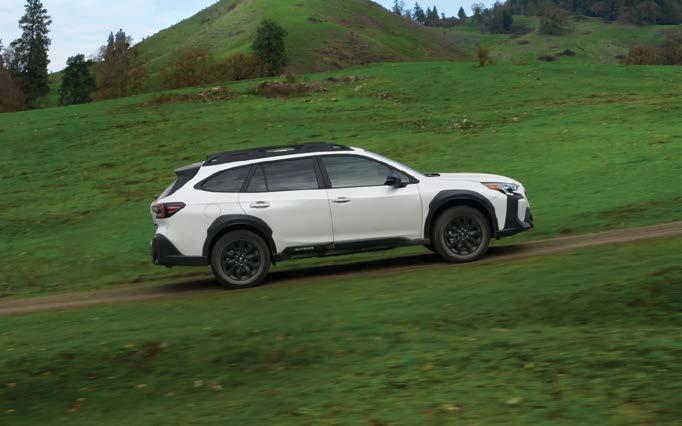


Since joining Driven Brands in January 2022, Auto Glass Now has been rebranding all of the acquired locations under its name and refreshing the locations with bright, welcoming customer service lobbies and the latest tools and equipment. Each Auto Glass Now location has a team of highly trained experts in auto glass repair, replacement and Advanced Driver Assistance Systems (ADAS) calibration.
Auto Glass Now, with a history spanning more than three decades, now has more than 200 physical locations and more than 700 mobile units, due to strategic acquisitions and a series of new openings, making Auto Glass Now one of the fastest-growing entities in the sector.
Each Auto Glass Now location has a team of specialists proficient in a wide range of services, ensuring customers receive toptier service, irrespective of their auto glass needs.
“Drivers want a national brand they can trust for high-quality, reliable auto glass repair, no matter where they travel, along
Subaru Superstore of Chandler
PHX Metro East
(877) 443-3239
(480) 268-2402 Local
Mon.-Fri. 7-6; Sat. 7-5 WholesaleEast@ShopSubaru.com
Subaru Superstore of Surprise
PHX Metro West (844) 378-9875
(623) 232-7202 Local (623) 232-7303 Fax
Mon.-Fri. 7-6; Sat. 7-5 WholesaleWest@ShopSubaru.com
Flatirons Subaru
Boulder
(303) 443-2919 (303) 442-1342 Fax
Mon.-Fri. 7:30-6; Sat. 8-5 parts@flatironsimports.com
with a national warranty to protect their repairs,” said Nick Ouimet, president of Auto Glass Now.
“Now, whether they move to a new city, go on a road trip or have an incident on their daily drive to work, they can rely on having an Auto Glass Now location or mobile service nearby to repair their damage and replace their windshield.”
Now part of the Auto Glass Now family, brands previously known as All-Star Glass, Horizon Auto Glass, A1 Auto Glass, Auto Glass Fitters and Discount Auto Glass have been rebranded and remodeled to Auto Glass Now’s brand identity.
“Auto Glass Now continues to grow and polish our customer experience by making auto glass servicing increasingly fast, reliable and convenient,” said Ouimet. “We’re proud to continue the legacy of our local experts to build a respected nationwide brand. Through our national network, Auto Glass Now delivers the kind of scale and efficiency that only a nationwide company can offer.”
Baldwin Subaru
Covington
(888) 310-9605 (985) 338-2598 (985) 273-3273 Fax
Mon.-Fri. 7:30-6; Sat. 8-3 lrose@baldwinmotors.com
Five Star Subaru Grapevine (877) 308-9055
Direct (817) 438-1732 parts@subarugrapevine.com www.subarugrapevine.net
Huffines Subaru
Corinth
(888) 928-2978 (940) 321-2679
(940) 497-2920 Fax
Mon.-Fri. 7-7; Sat. 8-5 les.hickman@huffines.net
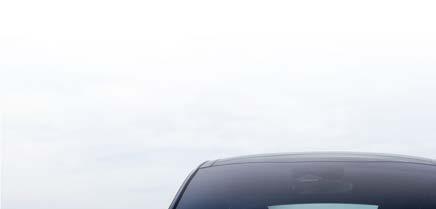
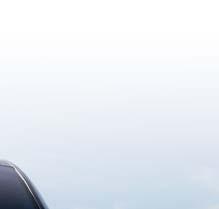






ARIZONA
Horne Kia
Gilbert
877-450-9001 (480) 813-3383 Fax
M-F 7am - 6pm hkparts@hornekia.com www.hornekia.com
Crain Kia
Sherwood
501-542-5230 (501) 542-6133 Fax
M-F 7:30am - 6pm timhill@crainteam.net www.crainkia.com
All Star Kia of Baton Rouge
Baton Rouge
5740 Siegen Lane
225-490-8000
(225) 490-8014 Fax
OKLAHOMA
Ferguson Advantage Imports
Broken Arrow
800-880-8815
(918) 317-6280 Fax
M-F 7am - 6pm
Ancira Kia
San Antonio
210-509-2197
(210) 509-2198 Fax
M-F 8am-6pm Sat 8am-3pm tstewart@ancira.com www.ancirasa.com
Archer Kia
Houston
1-888-983-1425
(281) 983-1437 Fax
M-F 7am-6pm Sat 9am-2pm
www.archerkia.com
Bob Utter Kia
Sherman
903-892-5967
(903) 891-7304 Fax
M-F 7:30am - 6pm
Sat 7:30am - 1pm
Mike.martin@bobutterford.com www.bobutterford.com
De Montrond Kia
Houston
281-877-3060 281-872-3909
(281) 872-3914 Fax
M-F 7:30am-6pm
Sat 7:30am-3pm www.demontrondkia.com
Fredy Kia
Houston
800-883-1933
(713) 947-8053 Fax
M-Sat 8am-6pm parts@fredykia.com
Huffines Kia McKinney
McKinney
469-525-4354
M-F 7am-7pm
brian.chadduck@huffines.net brydan.reid@huffines.net
UTAH
Findlay Kia
St. George
435-817-4245
(435) 634-1229 Fax
M-F 8am - 6pm Sat 8am - Noon
The Women’s Industry Network (WIN) is once again holding its Scholarship Walk during the 2024 Annual Conference, scheduled for 7 a.m. PT May 7 for both in-person and virtual participants. This initiative is not just a walk; it’s a stride towards empowering the future of women in the collision repair industry.
This year’s conference, themed “Dream Out Loud,” is dedicated to fostering professional growth and providing financial assistance to women pursuing careers in collision repair. The conference, taking place May 6-8 at the Hyatt Regency Newport Beach, CA, will offer a robust agenda including industry programming, keynote speakers and networking opportunities, as well as the Scholarship Walk.
“It is important to raise money so we are able to continually increase both scholarship dollars and tool kit supplies amounts,” said Laura Kottschade, WIN Student Relations co-chair. “Because of the excellent fundraiser last year, we were able to provide five additional tools to each tool kit and next year hoping to add more scholarships.
“We’re also hoping for a few
additional tier levels planned out, which will expand our scholarship reach once again! In fact, with additional fundraising, we’re planning one to include a new scholarship specifically for techs already in the
evolved to accommodate wider participation, allowing individuals to join virtually or through community walks.
“This year we have separated the Scholarship Walk and the
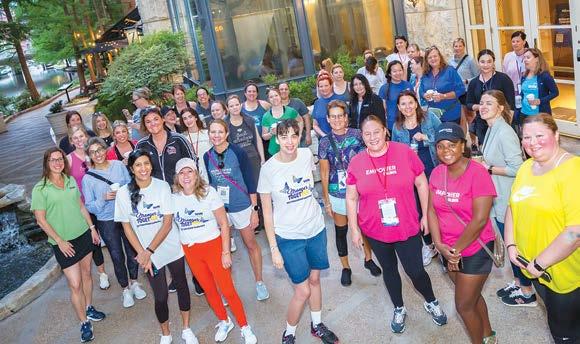
industry,” Kottschade continued. “All these monies raised increases industry retention rates because once students are out of school, they can utilize their new knowledge and tools and immediately seek fulltime employment.”
The Scholarship Walk has
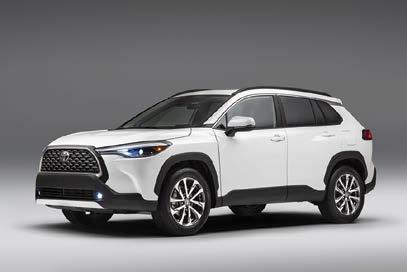

Scholarship Fundraiser to simplify it for participant involvement,” according to April Keim and Christina Sepulveda, WIN Scholarship Fundraising cochairs. “This will allow those who simply want to network and join in the Scholarship Walk to be
able to while contributing to the scholarship fund with their entry fee. Additionally, we partnered with RallyUp and created the WIN Warriors Scholarship Fundraising that is free to join and will allow those inspired to raising money for the future women technicians of collision to do so as a team or solo and have some added fun with a team competition.”
Last year’s walk set a new benchmark, raising close to $8,000 and drawing more than 130 participants and donors. The top three student winners and four leading industry teams were celebrated for their contributions.
For the 2024 Walk, the top fundraising teams will again be recognized with fun prizes, included in a national collision repair industry news release, and social media posts on all of WIN’s various platforms. Teams will be recognized for total dollars, creativity and more. To register and fundraise on behalf of a team, visit this link.
Find more information at thewomensindustrynetwork.siteym.com/page/Scholarship.
Honda on Feb. 27 announced the 2025 Honda CR-V e:FCEV, set to become America’s first production plug-in hydrogen fuel cell electric vehicle.
A compact CUV that received a 270-mile EPA driving range rating, CR-V e:FCEV combines an all-new U.S.-made fuel cell system along with plug-in charging capability designed to provide up to 29 miles of EV driving around town with the flexibility of fast hydrogen refueling for longer trips.
“Leveraging Honda fuel cell technology expertise continues to play a critical role in our global goal to achieve carbon neutrality for all products and corporate activities by 2050,” said Mamadou Diallo, senior vice president of auto sales, American Honda Motor Co. “Honda has laid out an electrification strategy leading to 100% zeroemission automobile sales by 2040, including the introduction of both battery-electric and fuel cell electric vehicles like this new CR-V e:FCEV model.”
The 2025 Honda CR-V e:FCEV will be available for customer leasing in California beginning later
this year.
Standard features include HondaLink® with expanded capabilities including hydrogen station information in addition to charging and power supply data. For
with hydrogen fuel cell vehicles began with introduction of the Honda FCX in December 2002, the world’s first zero-emission fuel cell electric vehicle (FCEV) to receive certification for everyday use from
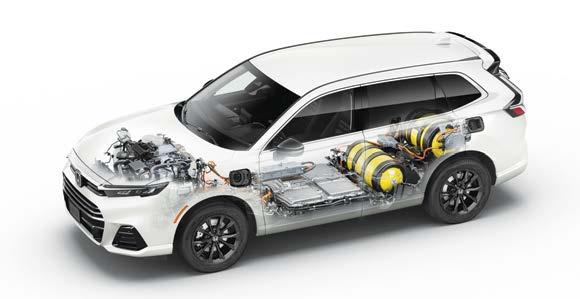
additional convenience, the included Honda Power Supply Connector uses a 110-volt power outlet that can deliver up to 1,500 watts of power, turning CR-V e:FCEV into a power source capable of running small home appliances, portable air conditioners, power tools, camping equipment and more.
Honda’s market experience
both the EPA and the California Air Resources Board (CARB), as well as the first FCEV leased to individual customers.
The CR-V e:FCEV will be built at Honda’s Performance Manufacturing Center in Marysville, OH.
The five-passenger CUV is the first application of the secondgeneration Honda Fuel Cell
Module, which is produced at Fuel Cell System Manufacturing, LLC (FCSM) in Michigan, offering improved durability, higher efficiency, increased refinement and lower cost compared to Honda’s previous generation fuel cell system.
Co-developed with General Motors, the next-generation Honda Fuel Cell Module leverages the knowledge, know-how and economies of scale of both companies and will reduce the cost by two-thirds compared to the cost of the fuel cell system in the Honda Clarity Fuel Cell. The cost reduction was achieved by various measures including the adoption of innovative materials for electrodes, advancement of a cell sealing structure, simplification of the supporting equipment and the improvement of productivity.
Moreover, the durability of the system has doubled by the application of corrosionresistant materials and controlled suppression of deterioration, and low temperature performance was also improved significantly.
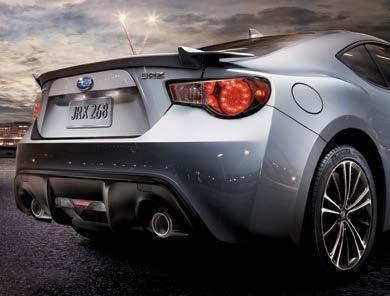

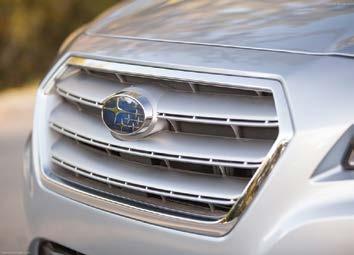
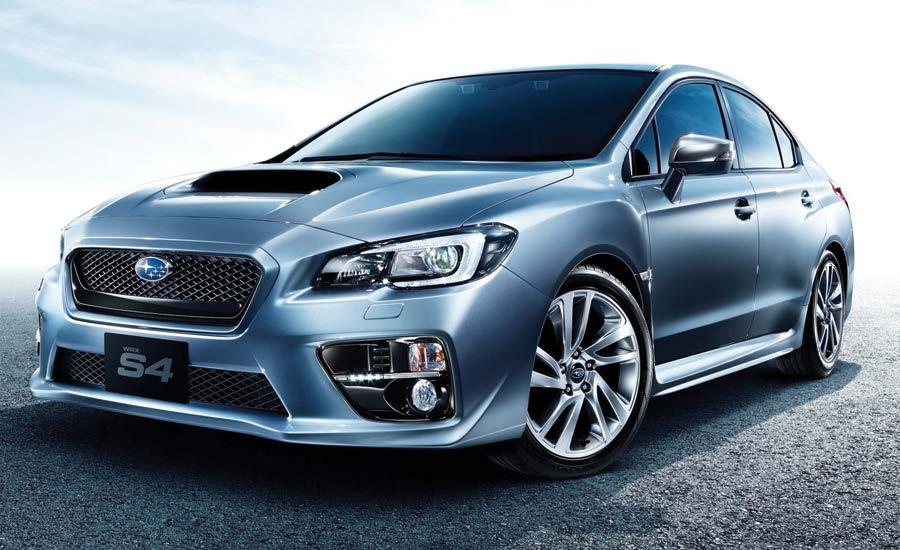
Automakers on March 1 began releasing sales results for February, showing strong gains compared to the same month in 2023.
Hyundai
Hyundai Motor America reported record-breaking total February sales of 60,341 units, a 6% increase compared with February 2023.
Hyundai set total sales records in February for Tucson (+8%), Tucson PHEV (+280%), Tucson HEV (+29%), Palisade (+16%), and Kona EV (+15%). Hyundai’s eco-friendly vehicle sales grew 7%, while fleet volume was 8.3%. Hyundai also achieved record-breaking retail sales of 55,341, a 5% increase yearover-year.
Subaru
Subaru of America, Inc. reported 47,189 vehicle sales for February 2024, a 3.1% increase compared with February 2023 (45,790).
February also marked the 19th consecutive month of monthover-month sales increases for the automaker.
Forester was once again the top performer by volume with 14,882


vehicle sales, a 48% increase over the same month in 2023. Crosstrek sales followed closely behind, with 12,553 vehicles sold in February, and Outback sales also remained strong, with 10,412 vehicles sold.
CPO sales totaled 5,640 vehicles in February, an increase of 12% compared to February 2023.
Sales highlights included bestever total February sales; best-ever February sales of CX-50, with 5,480 vehicles sold; and best-ever sales of CX-30, with 10,026 vehicles sold.
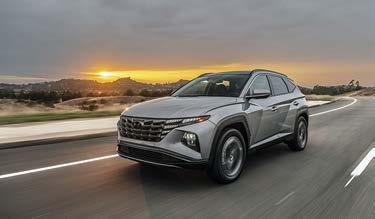
Mazda
Mazda North American Operations (MNAO) reported total February sales of 32,705 vehicles, an increase of 6.7% compared to February 2023. Year-to-date sales totaled 62,984 vehicles sold, an increase of 17.5% compared to the same time last year. With 25 selling days in February, compared to 24 the year prior, the company posted an increase of 2.5% on a Daily Selling Rate (DSR) basis.

Kia
Kia America closed February with sales of 59,059 units. Sales of Kia’s EV models continued to climb, up 65% year-over-year through February with the ongoing launch of the award winning EV9 three-row EV SUV.
Kia’s SUVs were up 6% year-overyear and accounted for 76% of the February sales total.
Three Kia models set all-time February sales records, including Carnival (+48%), Sportage (+18%) and Forte (+8%).
American Honda reported its February sales were up 32%
compared to the same month last year, to 110,110 units.
The Honda brand accounted for more than 100,000 of those units in February, an increase of 38% from January, on robust sales of both cars and light trucks. Honda electrified sales set a February record of 20,681 units.
The CR-V topped 30,000 units, up 99%, with a February record of hybrid sales, and HR-V sales were up 45%, with 12,116 sold. Honda light truck models all posted double digit gains over January, led by the Pilot (+26%), Ridgeline (+19%), Passport (+18%) and Odyssey (+23%). Car sales of Accord and Civic combined for more than 34,000 units, with Civic up 37% to more than 20,000 units, and Accord hybrid posting record February sales.
The Acura brand posted February sales of 9,769 units, up 13% over January, led by Acura SUVs topping 6,800 units, with the RDX up 54%. Integra February sales topped 2,000 units as the model continues to lead all luxury gateway competitors.




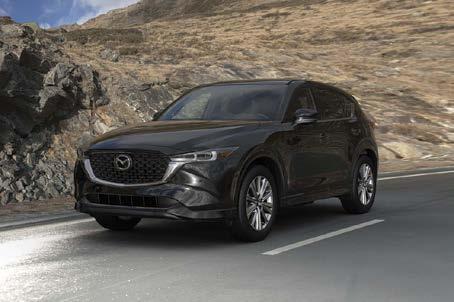
Ford dealers and Ford Fund, the philanthropic arm of Ford Motor Company, are investing $2 million in scholarship funding in 10 regions to help students pursue careers as automotive technicians. Spanning over 20 states and 292 eligible schools, the Ford Auto Tech Scholarship will grant 400 needbased awards to current or future students enrolled in post-secondary auto programs.
The automotive industry continues to face an ongoing shortage of technicians, with more than 400,000 techs needed by 2027. Now in its second year, the Ford Auto Tech Scholarship creates opportunities for rewarding, wellpaying careers as the industry moves toward electrification and software integration.
“As vehicles become more advanced, we need highly skilled technicians to maintain and service them,” said Elena Ford, chief dealer engagement officer at Ford. “Partnering with our dealers to invest in these students helps create job opportunities, shapes the future of our communities, and drives growth in our industry. “
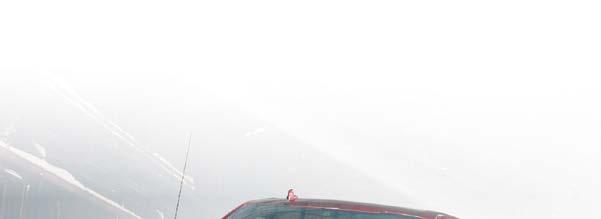


The Ford Auto Tech Scholarship is open to individuals pursuing automotive technology degrees or certificates in the 10 selected regions, covering various costs associated with their education. The scholarship may be used for all attendance costs, including tuition, tools, living expenses and transportation. During the
because diversity drives innovation, we need to make the field more accessible for people of all backgrounds,” said Jennifer Maher, CEO of TechForce Foundation. “By partnering with Ford dealers and Ford Fund to remove barriers to entry and increase greater economic mobility, we pave the way for more communities to thrive.”
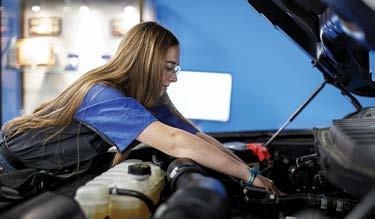
students’ educational journey and career transition, Ford dealers in each region will serve as a support system, offering advice, onsite training and career guidance.
“Every technician plays a vital role in moving our communities forward. In order to solve the shortage of technicians the transportation industry currently faces, and
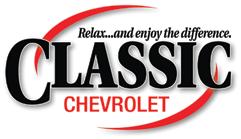
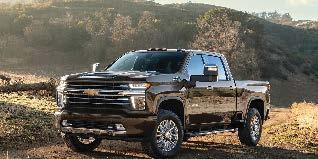


The Ford Auto Tech scholarships will be administered by TechForce Foundation, a national nonprofit organization committed to supporting students pursuing technical education and careers as professional technicians. Ford is proud to partner with TechForce to grant $5,000 per student in financial assistance for education and training in auto and auto/diesel at a wide range of accredited institutions.
For Makenna Enga, a student recipient from UTI-Phoenix, this scholarship means breaking free from traditional career paths.
“I am extremely passionate about
pursuing a technical education in automotive technology for many reasons,” Enga said. “To start with, a pretty obvious one is the lack of women in the industry. No one in my family has studied a trade, but I believe I was made for it.”
Last year’s contribution directly resulted in 200 students receiving $1 million in scholarships across four regions: Greater Atlanta, Chicago, Dallas and Phoenix.
Students eligible for the 2024 Ford Auto Tech Scholarship must be pursuing a degree in one of the following regions: the Greater Atlanta, Chicago, Dallas, Detroit, Phoenix, Kansas City, Memphis, Miami, Seattle and Cincinnati areas. The application process is open from March 4 through Aug. 31. Scholarships will be awarded on a rolling basis and applications reviewed as received.
To learn more about the 2024 Ford Auto Tech Scholarship, or to apply, visit techforce.org/ fordfundv2/.

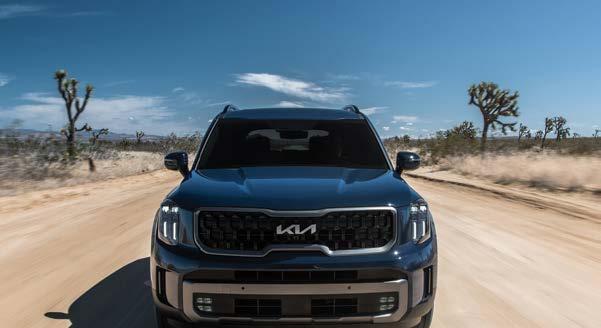


What does your car know about you?
We’ve all seen those little dongles offered by insurance companies that can be plugged into your car’s OBD2 port to collect data, which is used to fine-tune your insurance rate. But what other information does your car know? How about where you like to eat, or go to the gym, or perhaps even that scenic route you like to take home after long days at work? As Mark Twain might say: “There’s gold in them thar cars.” And that’s one reason America is increasingly concerned about cars from China.
The Biden administration confirmed Feb. 29 it will launch an investigation into connected vehicles using Chinese technology. The administration cites national security as the reason behind the probe, noting the risk associated with the potential exploitation of vehicles’ systems, or the collection of troves of valuable data related to the U.S. infrastructure.
President Joe Biden issued the following statement: “These
cars are connected to our phones, to navigation systems, to critical infrastructure, and to the companies that made them. Connected vehicles from China could collect sensitive data about our citizens and our infrastructure and send this
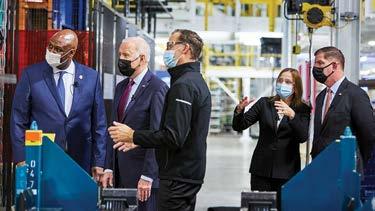
data back to the People’s Republic of China.”
The investigation will be spearheaded by the U.S. Commerce Department. The path forward is certainly an arduous one. The department will kick off the effort by gathering feedback from industry stakeholders and seeking comments on what actions it should ultimately take.
More specifically, the

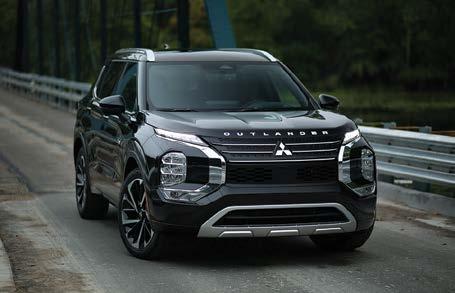
administration has concerns that systems present in connected cars — like the ones used to transmit telematics data, driver assistance features that can control acceleration and steering, as well as EV powertrain and battery systems — could be vulnerable to exploits from independent or nation-state cyber threat actors.
“Many of these vehicles can be enabled and disabled remotely. Connected vehicles that have technologies sourced from China could be exploited in ways that threaten U.S. national security,” said White House economic advisor Lael Brainard “China already has restrictions that do not allow connected vehicles to operate in China unless those vehicles only provide data to Chinese entities and use only Chinese software.”
The worry comes amid the concern of Chinese-built cars finding their place in the U.S. market. Lawmakers, auto
manufacturers and industry trade groups have recently expressed concerns of “an extinction-level event for America’s auto industry” caused by the potential of tarriffdodging automakers. And, as a result, could mean an influx of foreign, exploitable tech on U.S. soil. This could be one tool in America’s arsenal to head that off.
To be clear, the U.S. says it has no plans to outright ban Chinese EVs. But this probe will better help it to understand the impact of potential data collection — something China already does for its own domestic connected cars — and exploitation.
“It doesn’t take a lot of imagination to figure out how a foreign adversary like China — with access to this sort of information at scale — could pose a serious risk to our national security and the privacy of U.S. citizens,” said U.S. Commerce Secretary Gina Raimondo
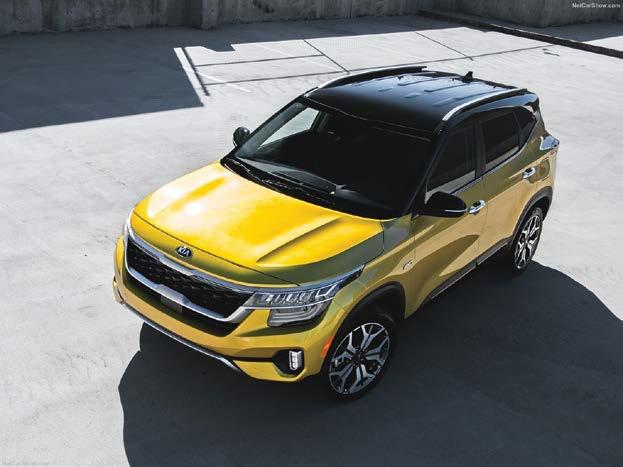
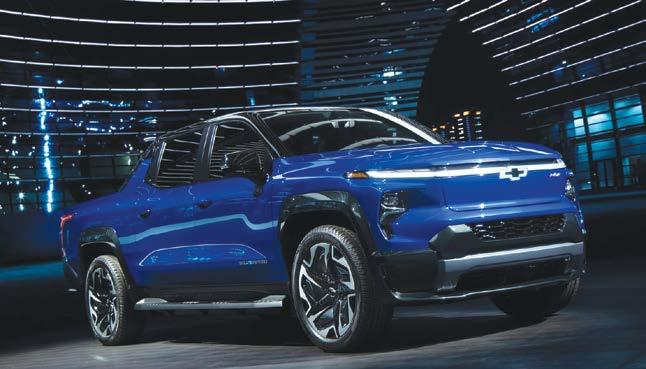
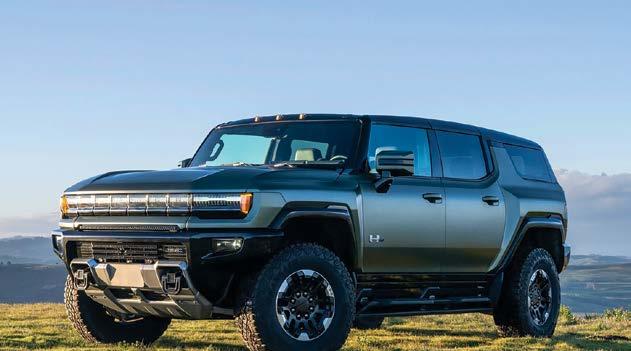
Arizona
Courtesy Chevrolet PHOENIX
602-248-7710
601-604-3025 Fax
M-F 7 am - 6 pm Sat 8 am - 3 pm Parts@CourtesyAuto.com
Colorado
Emich Chevrolet LAKEWOOD
800-274-1127
303-986-2245
303-989-3490 Fax
M-F 7am - 6pm; Sat 8am - 4pm gmcollision@emichauto.com www.emichchevrolet.com
John Elway Chevrolet ENGLEWOOD
800-525-5096
303-761-5161
303-789-6737 Fax
M-F 7am - 6pm; Sat 8am - 4pm wholesaleparts@elwaydealers.net
New Mexico
Garcia Cadillac GM Parts ALBUQUERQUE
800-432-6944
505-884-9054
505-889-2950 Fax
M-F 7:30am - 5:30pm Sat 9am - 2pm parts288126@garciacars.com
Quality Buick GMC
ALBUQUERQUE
505-348-1234
505-247-7490 Fax
M-F 7am - 5:30pm Parts@qualitydeal.com
Oklahoma
Bob Howard Parts
OKLAHOMA CTY
800-888-3827
800-946-7278 Fax
M-F 8am - 5:30pm sales@bhpdc.com www.bhpdc.com
Marc Miller Buick GMC
TULSA
800-456-4700
918-828-7070 Parts Direct 918-828-7094 24 Hr. Fax M-F 8am - 5:30pm jerad@marcmillertulsa.com www.marcmillerbuickgmc.com
Texas
Classic Chevrolet GRAPEVINE
866-410-6140
817-410-6140 Parts Direct
817-410-6145 Fax
M-F 8am - 6pm Sat 8am - 1pm parts@classicchevrolet.com www.classicchevytexas.com
Classic Elite Chevrolet Sugar Land SUGAR LAND
281-494-7273
800-800-7278
M-F 8am - 6pm; Sat 8am – 3pm rbattles@classicchevysugarland.com
Lawrence Hall Chevrolet Buick GMC Cadillac ABILENE
325-692-3590
325-698-7310 Fax
M-F 7:30am - 6pm dgarner@lawrencehall.com
Texas
Northside Chevrolet SAN ANTONIO
833-691-1440
210-308-8683 Fax
M-F 8am - 6pm Sat 7am - 4pm emartin@mynschevy.com www.mynschevy.com
Utah
Ken Garff Buick GMC RIVERDALE
800-821-8797
801-627-6762
800-390-1317 Fax
M-F 8am - 6pm
Co-President & Publisher
Nathan Gregory
Co-President & Publisher
Paul Stepanek
Editor
Abby Andrews
Contributing Writers
Mike Anderson, Stacey Phillips, Cole Strandberg, John Yoswick
Advertising Sales
Joe Momber, Norman Morano, Steve Sklenar
Office Manager
Kelly Cashman
Digital Marketing Manager
Bryan Malinski
Art Director
Rodolfo Garcia
Senior Designer
Vicki Sitarz
Accounting & HR Manager
Heather Priddy
Permissions Editor
Randi Scholtes
The U.S. The 2024 KPA Dealership Trust Survey, conducted by The Harris Poll, found about one-third of Americans have experienced things like deceptive selling, hidden fees or dishonest salespeople. Yet more than three-quarters of Americans –76% – don’t trust dealerships to be honest about pricing.
Serving Texas, Oklahoma, Louisiana, New Mexico, Arkansas, Colorado, Arizona, Utah and adjacent metro areas. Autobody News is a monthly publication for the autobody industry. Permission to reproduce in any form the material published in Autobody News must be obtained in writing from the publisher.
©2024 Autobody News, LLC.
Autobody News
P.O. Box 1516
Carlsbad, CA 92018 (800) 699-8251 (760) 603-3229 Fax
www.autobodynews.com
editor@autobodynews.com
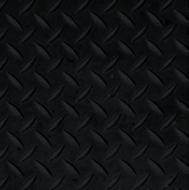

Regarding experience with dealerships:
• 34% have felt pressured to purchase add-ons
• 30% agreed on the price and when they went to sign the paperwork found there were hidden fees
• 28% felt like the salesperson was trying to “trick” them into a deal
• 29% left one dealership and went to another because they didn’t think they were being honest in their pricing
Regarding perceptions of dealerships:
• 86% are concerned about hidden fees when buying/leasing a vehicle
• 76% don’t trust car dealerships to be honest about pricing
• 84% say price transparency is
lacking at most car dealerships
The survey results come on the heels of the announcement of the Federal Trade Commission’s (FTC) Combating Auto Retail Scams (CARS) Rule, which would protect consumers from deceptive selling or leasing practices. Over the past year, the FTC enacted additional rules for dealerships around pricing transparency, financing, unnecessary add-ons and keeping customer information secure. Dealerships that don’t follow these laws and regulations can face heavy fines from the FTC at more than $50,000 per violation, which is roughly equal to the cost of an average car ($48,000) on the sales lot. Beyond fines, violations can also make dealers appear less trustworthy to potential customers.
“Buying or leasing a vehicle is a major financial decision for many Americans,” said Chris Fanning, CEO of KPA. “KPA partners with dealerships to help them operate in compliance with current regulations while also building trust with their customers and earning their dollars.”
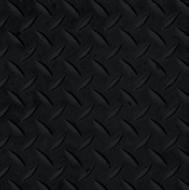
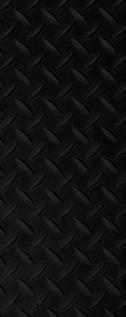

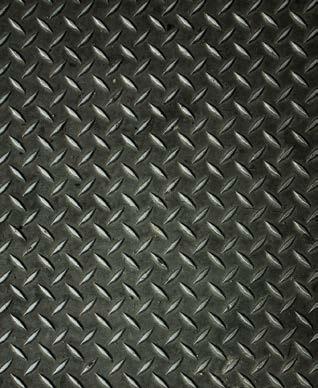


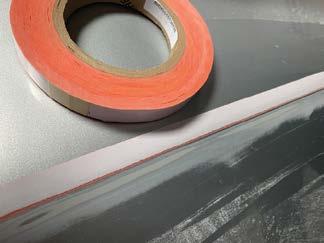
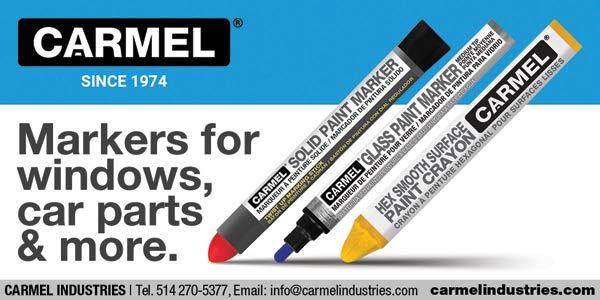

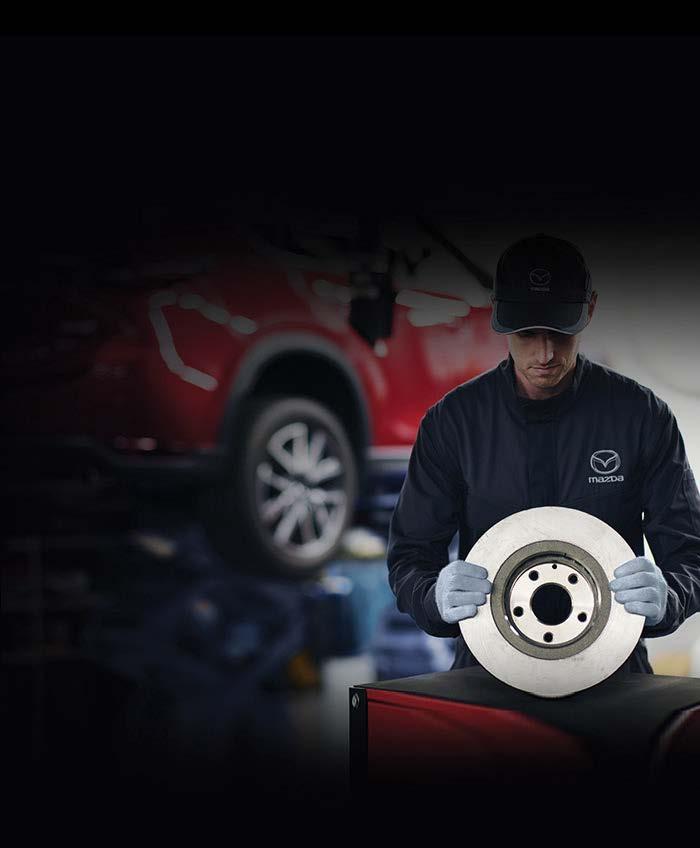
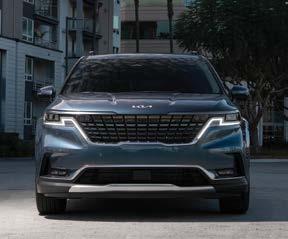
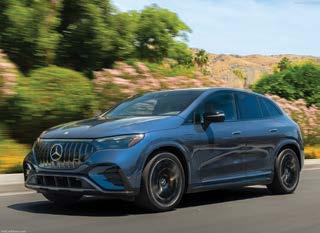
General Motors has significantly expanded the reach of its handsfree driving technology, Super Cruise, now encompassing about 750,000 miles of compatible roads across the U.S. and Canada – the largest truly hands-free operating domain in North America, nearly six times the coverage of its closest competitors.
“GM is all-in on safely deploying Super Cruise as we make the technology available on more vehicles, more roads and for more people to enjoy,” said Anantha Kancherla, GM vice president of ADAS. “A key part of that is expanding the road network– in this case nearly doubling it again -- with LiDAR mapped highways. High precision LiDAR mapping gives us an operating domain where we are confident in Super Cruise’s abilities.”
Since its launch in 2017 as the industry’s first true hands-free ADAS, Super Cruise has seen incremental expansions, the most recent of which extended the network to 400,000 miles. The latest extension includes not
only divided highways and major highways but also minor highways that connect smaller cities and townships, enabling hands-free driving between more rural areas.
This expansion is particularly significant for those who enjoy recreational activities, as Super Cruise now includes trailering capability, a feature that is being added to models like the 2024 Chevrolet Traverse and 2024 GMC Acadia. More than 80% of surveyed owners with Super Cruise have reported it makes driving more relaxing, highlighting the technology’s impact on enhancing the driving experience.
More than 160 million miles have been driven accident-free using Super Cruise. The technology’s new or enhanced features include Lane Change on Demand, Automatic Lane Change, Enhanced Navigation and Collaborative Steering, among others.
The ongoing updates are being rolled out incrementally over-theair at no additional charge and will continue through 2025.
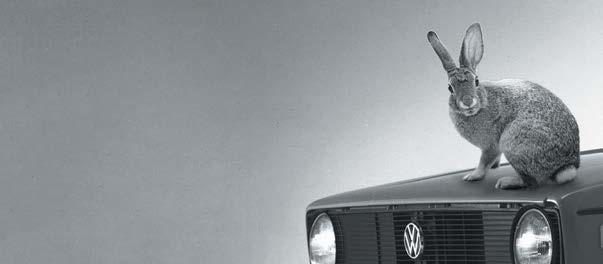
With a waterborne basecoat that’s easy to mix, match and apply and that uses the same coat flash application you’ve already perfected, Cromax® EZ makes an exceptional finish feel effortless. Discover how easy an outstanding finish can be.
axalta.us/ez
